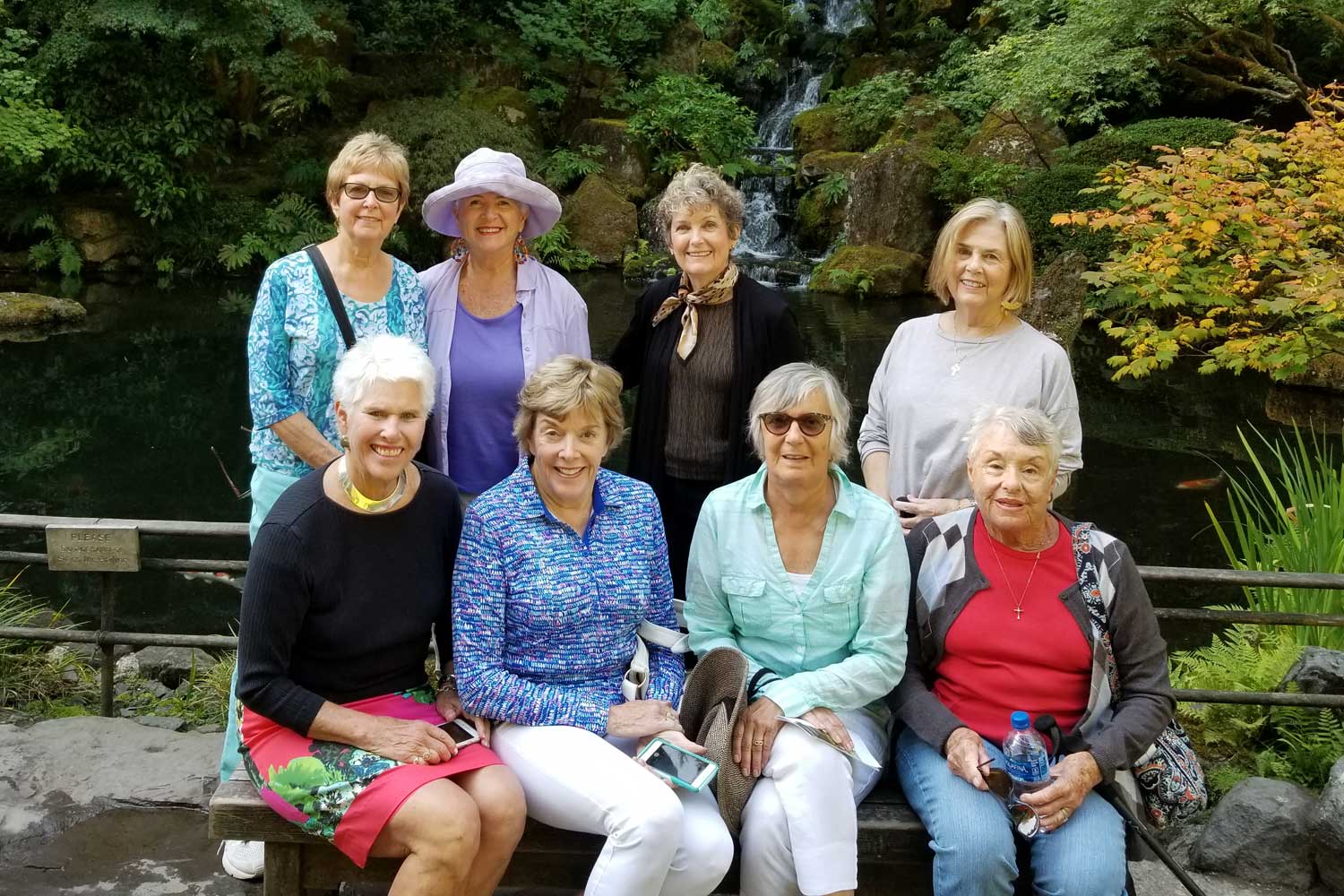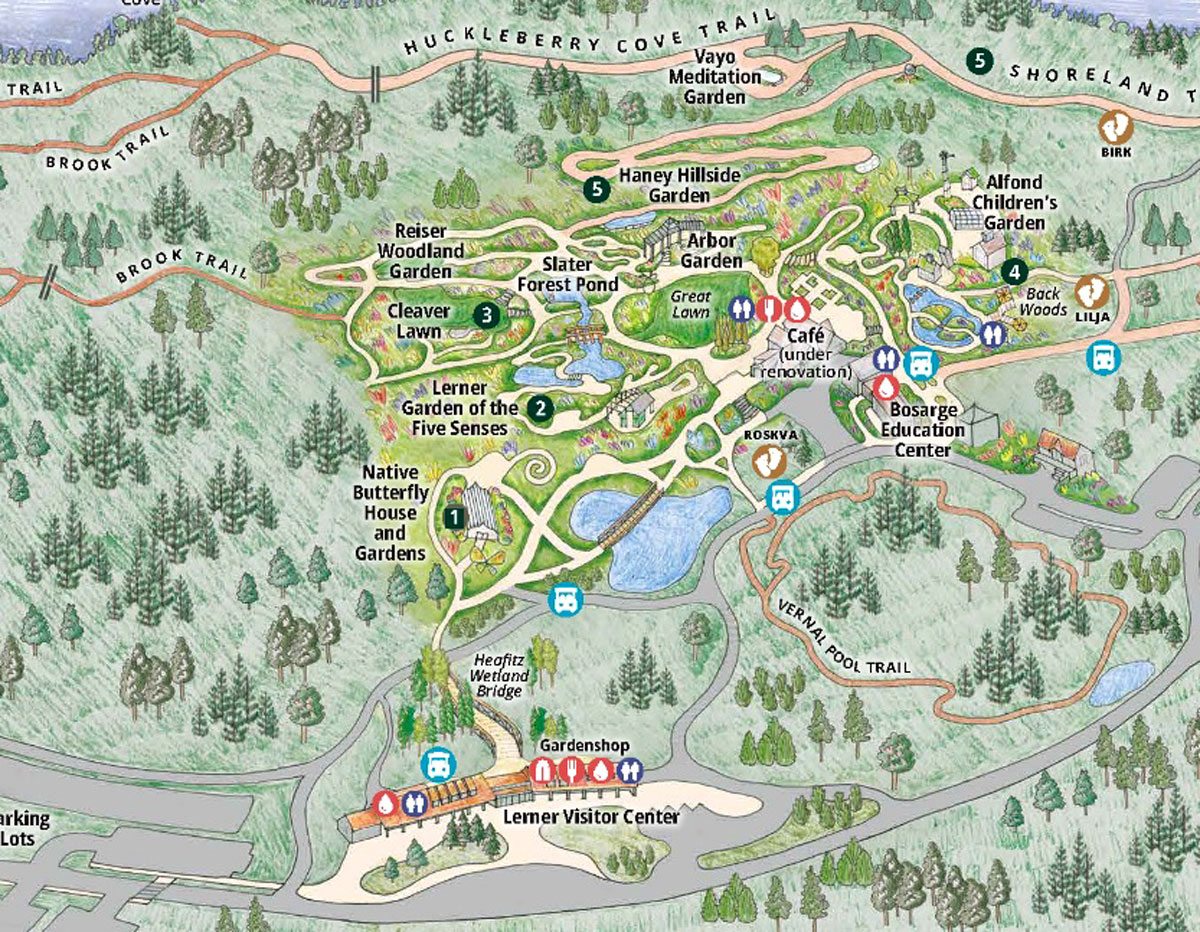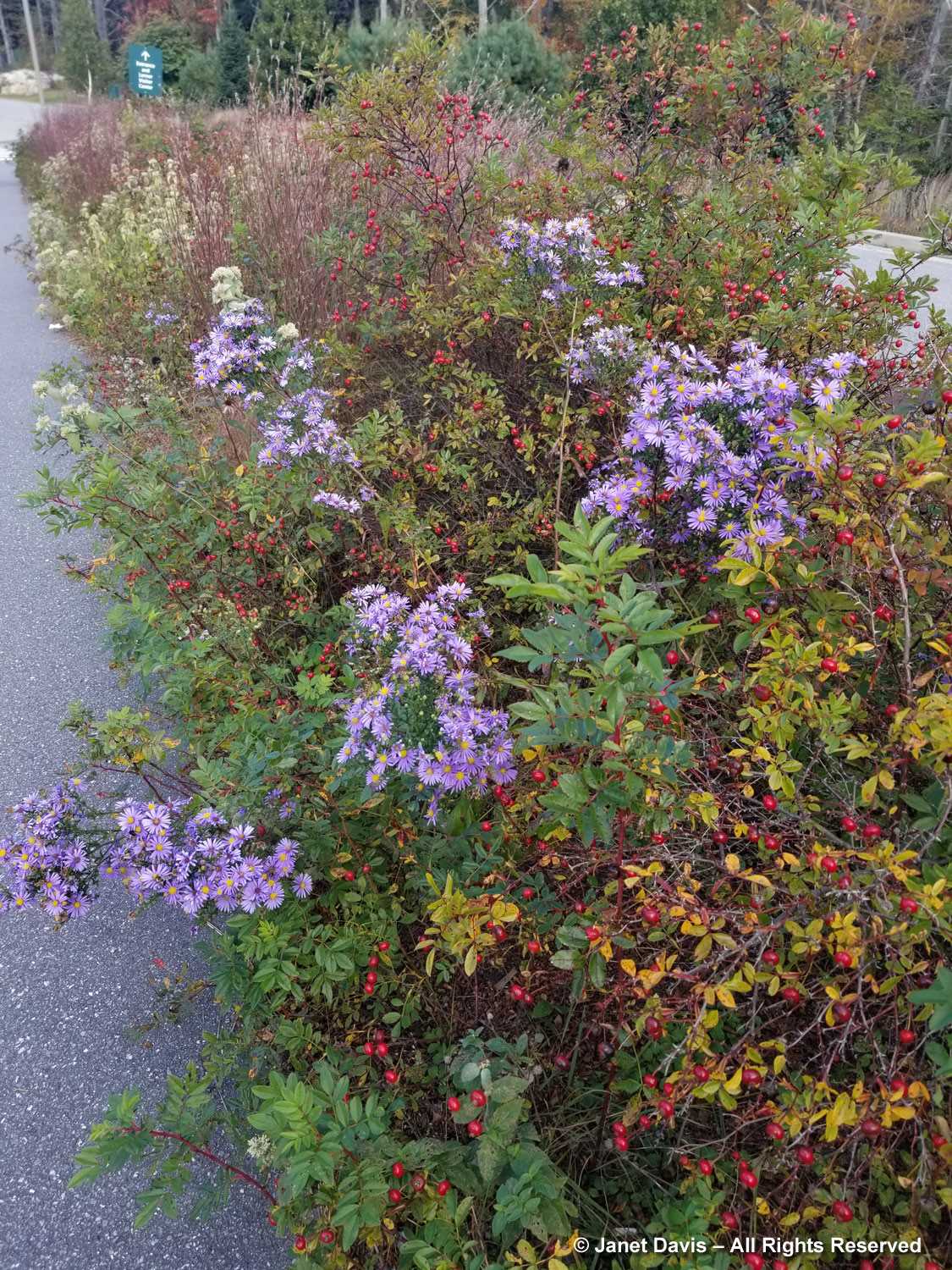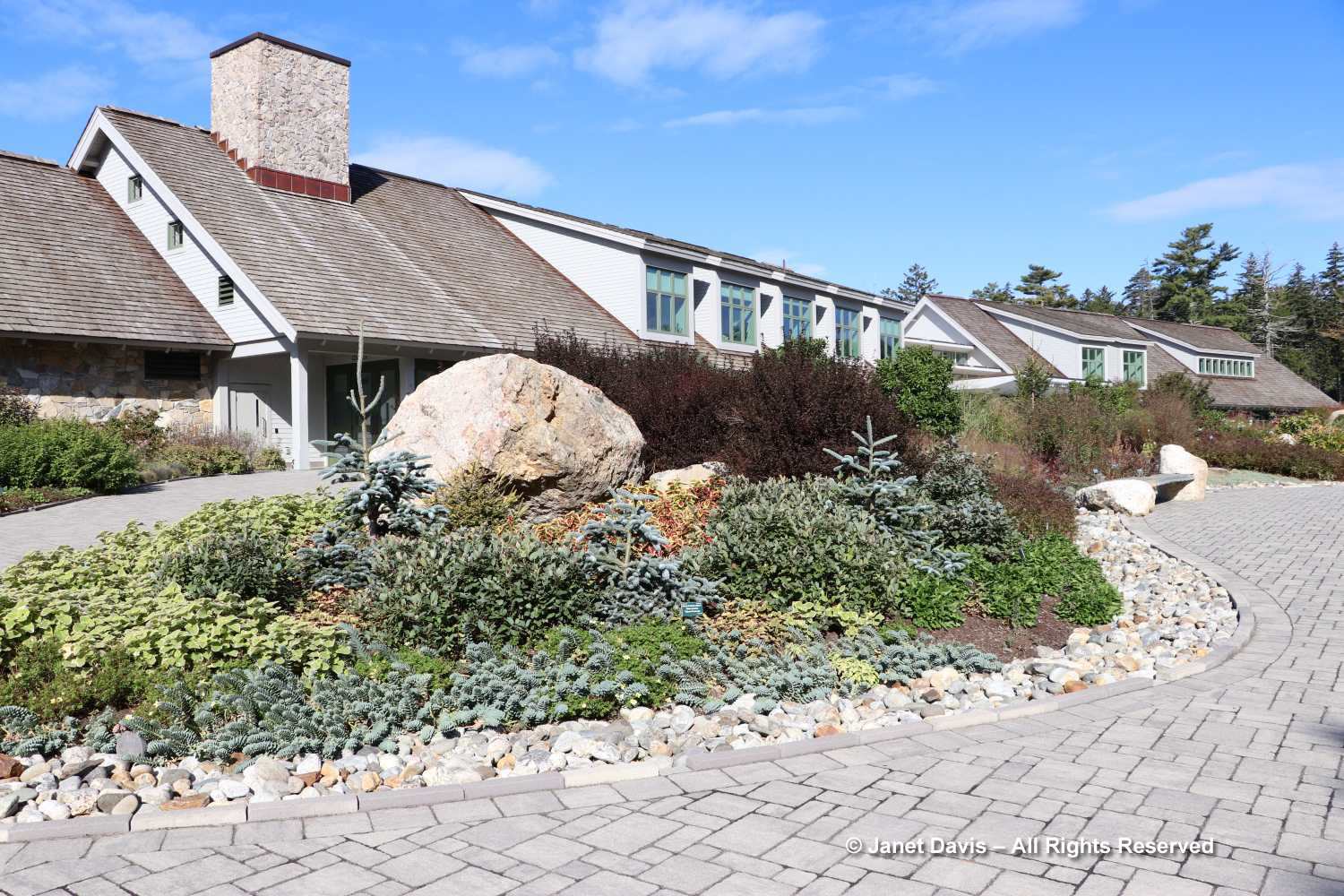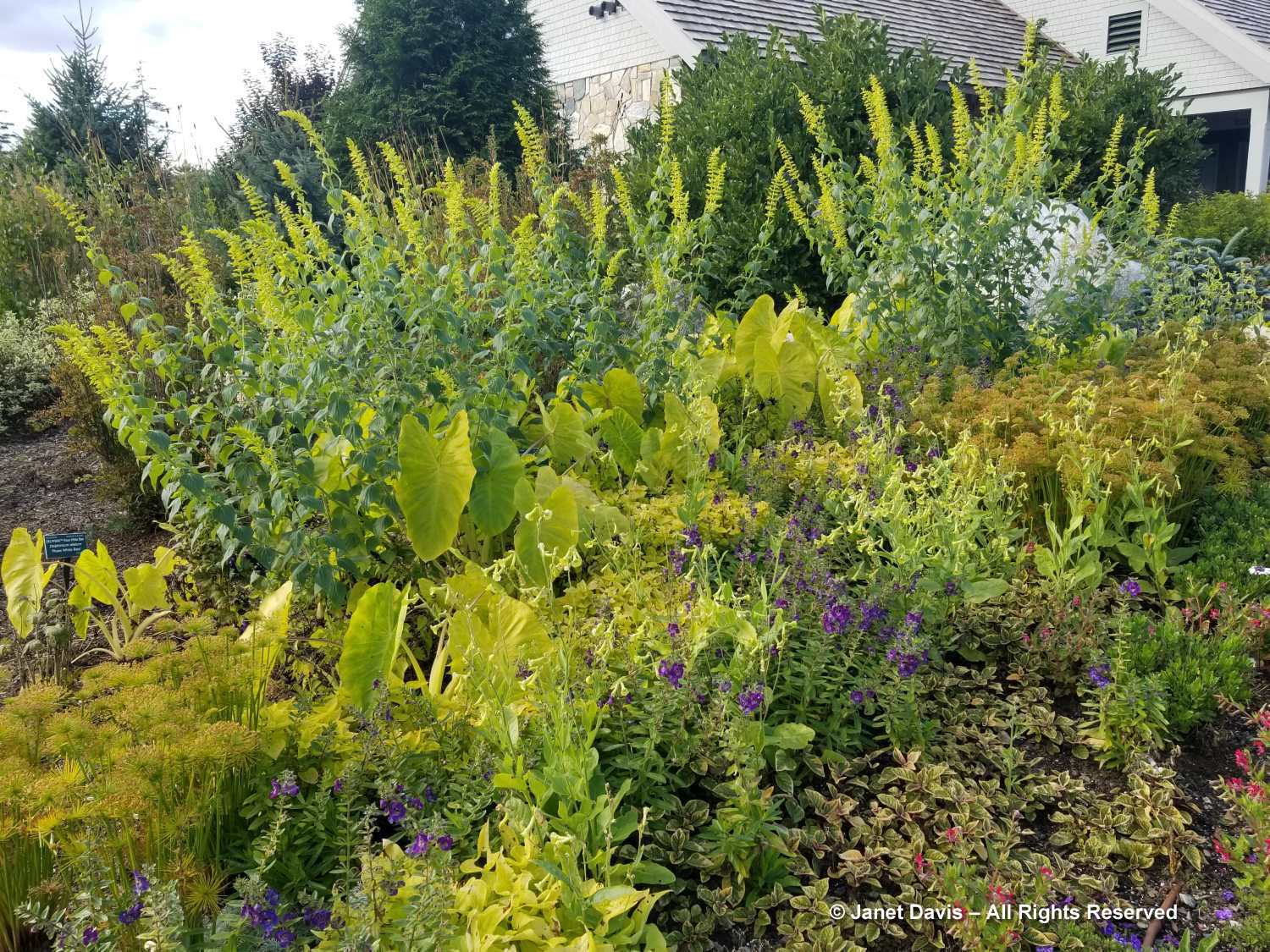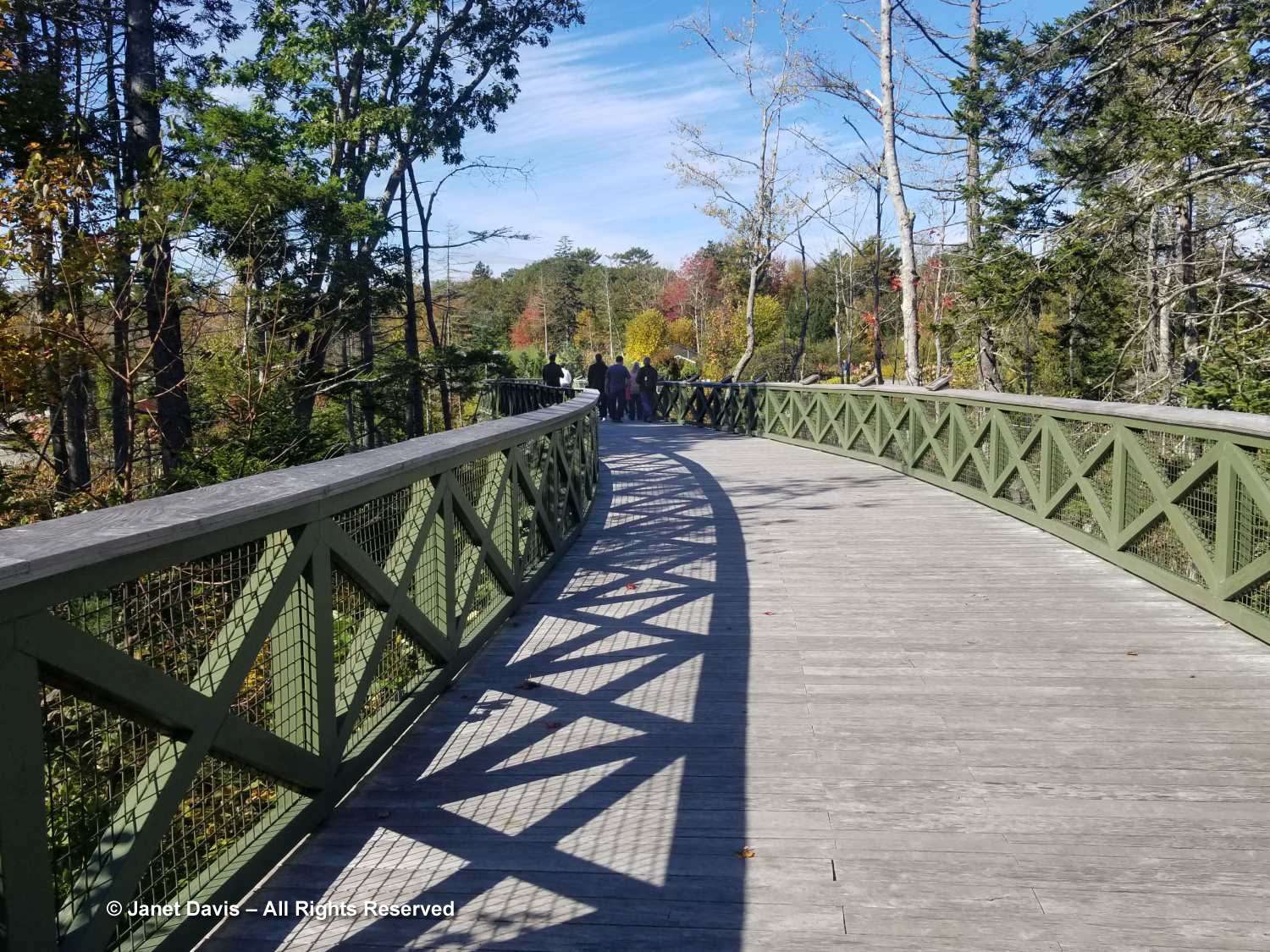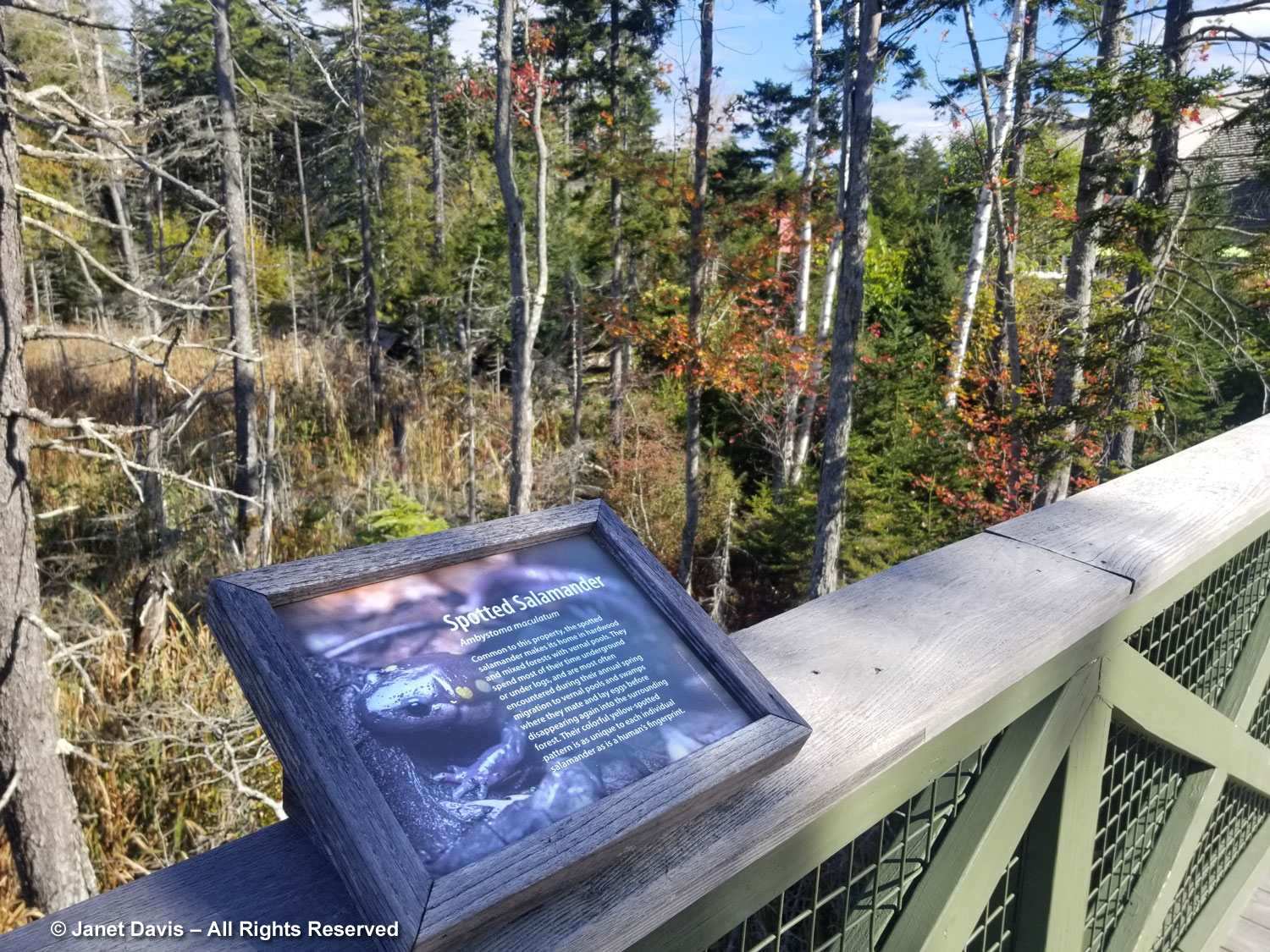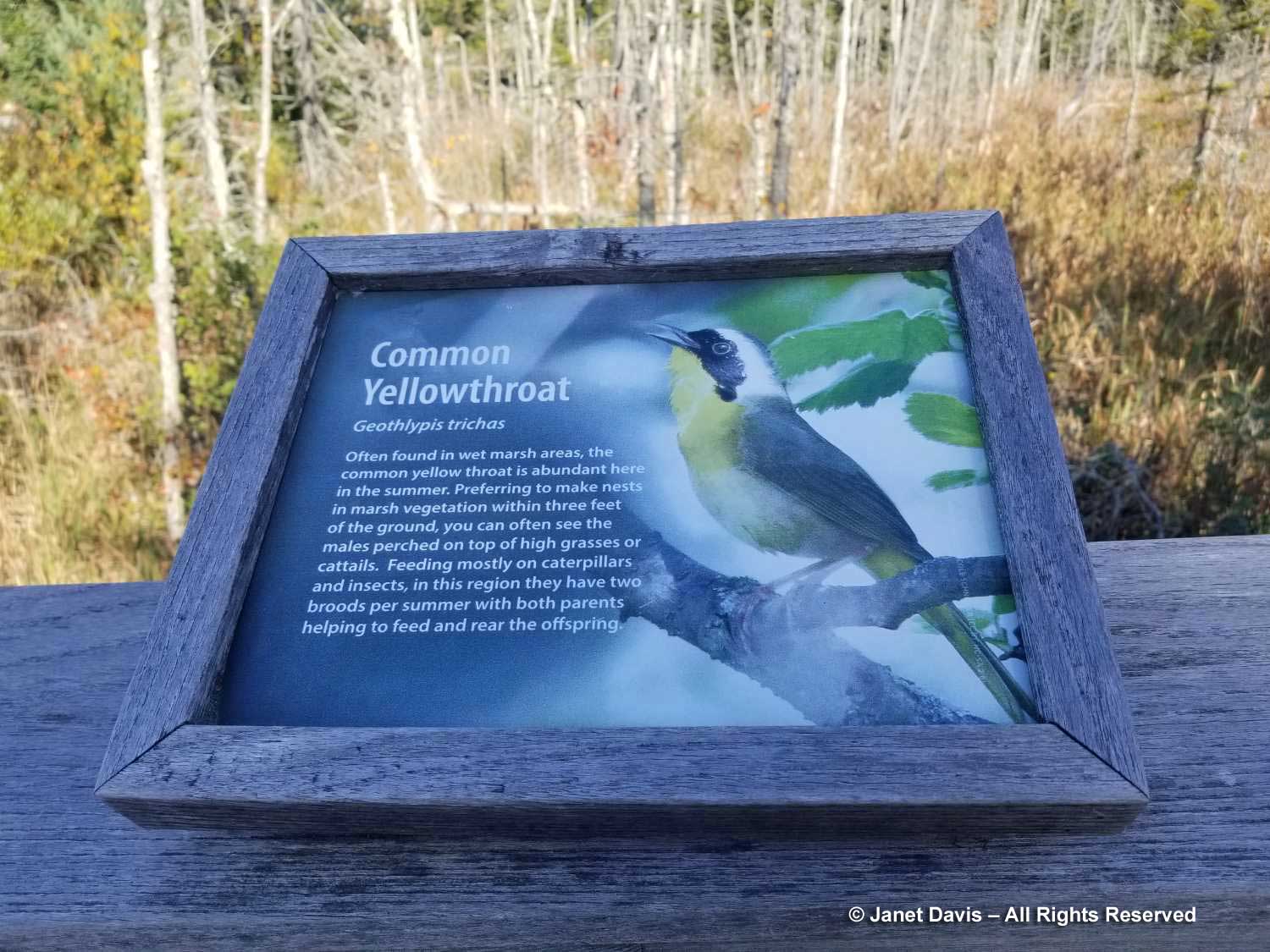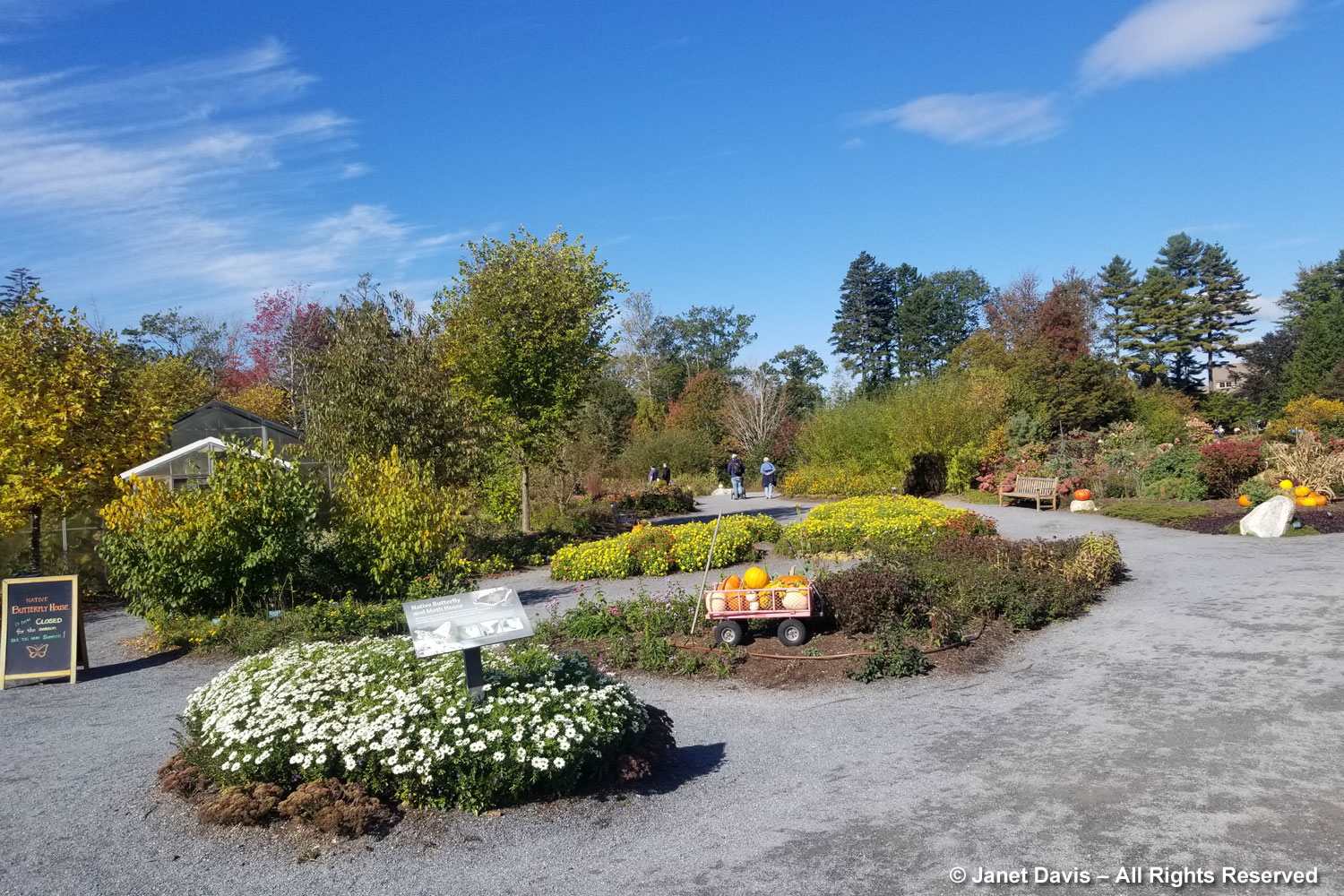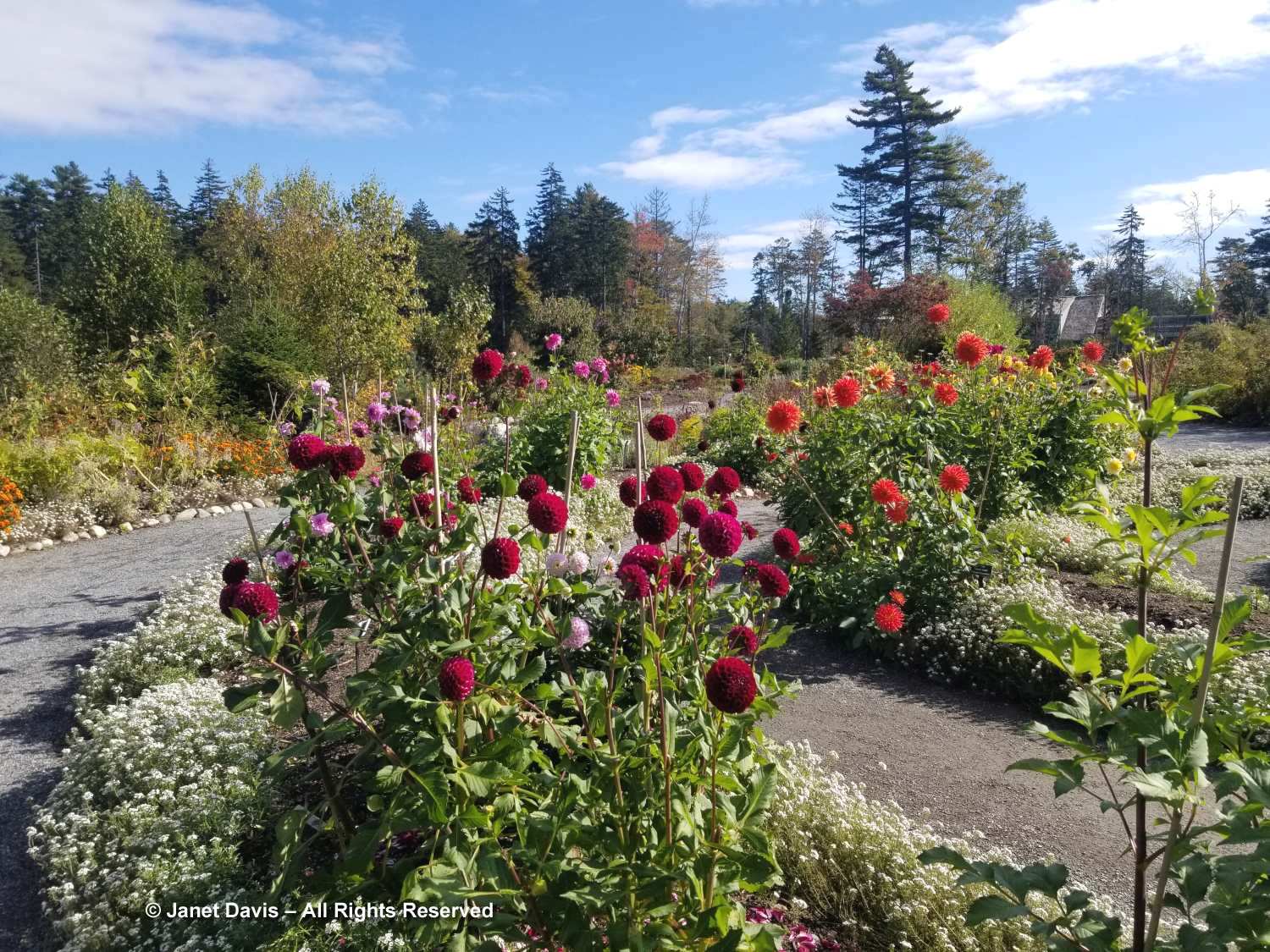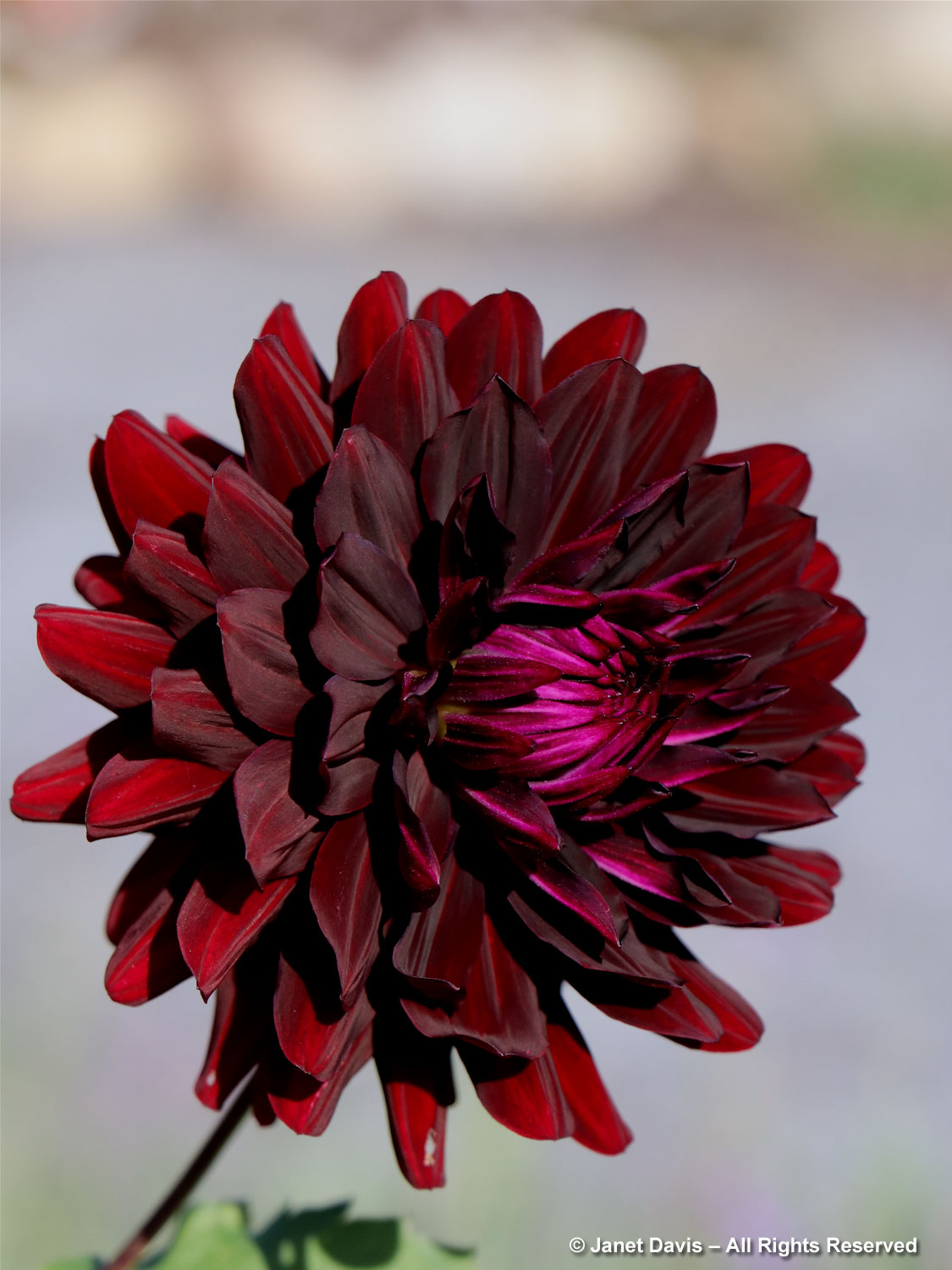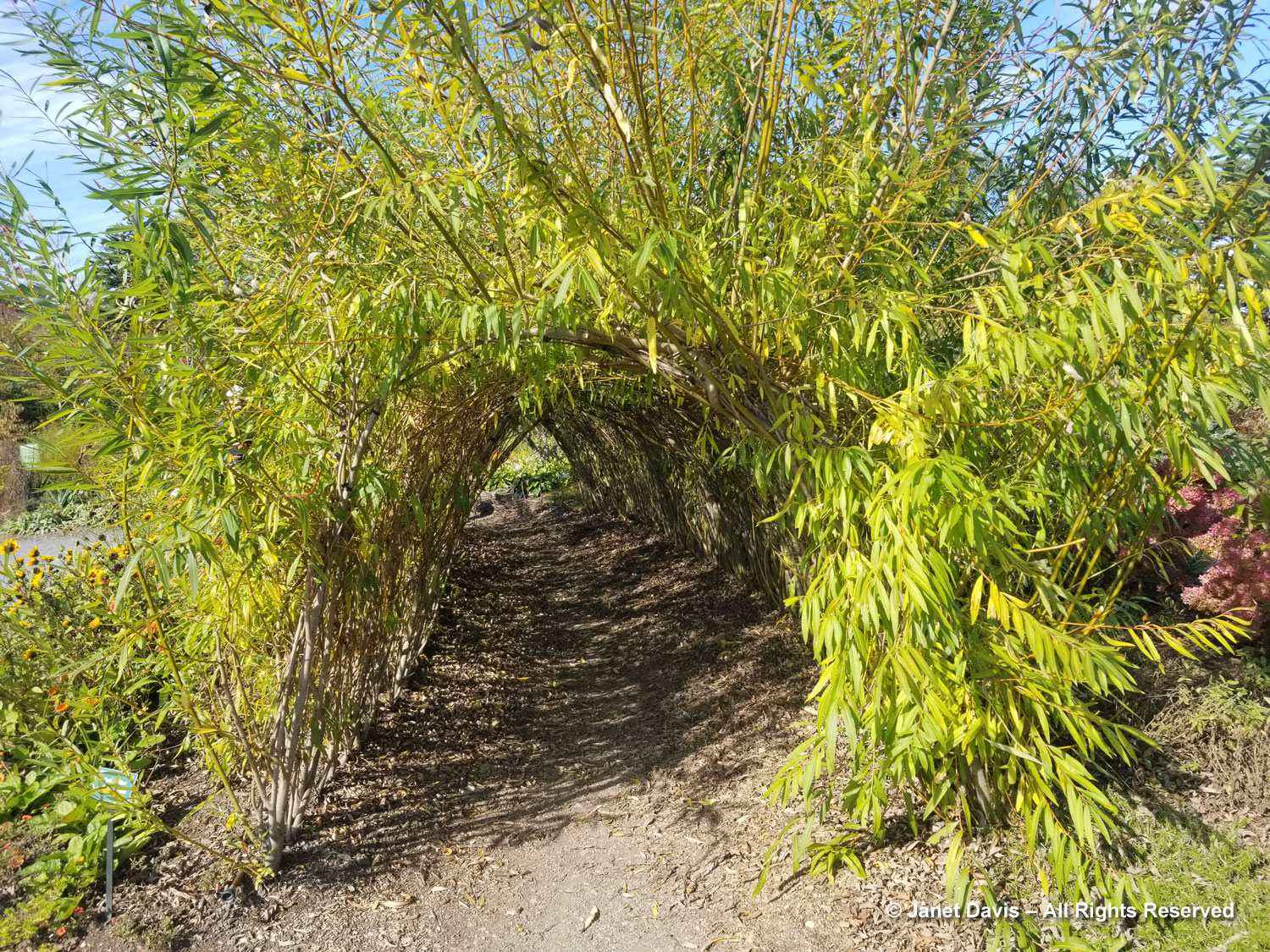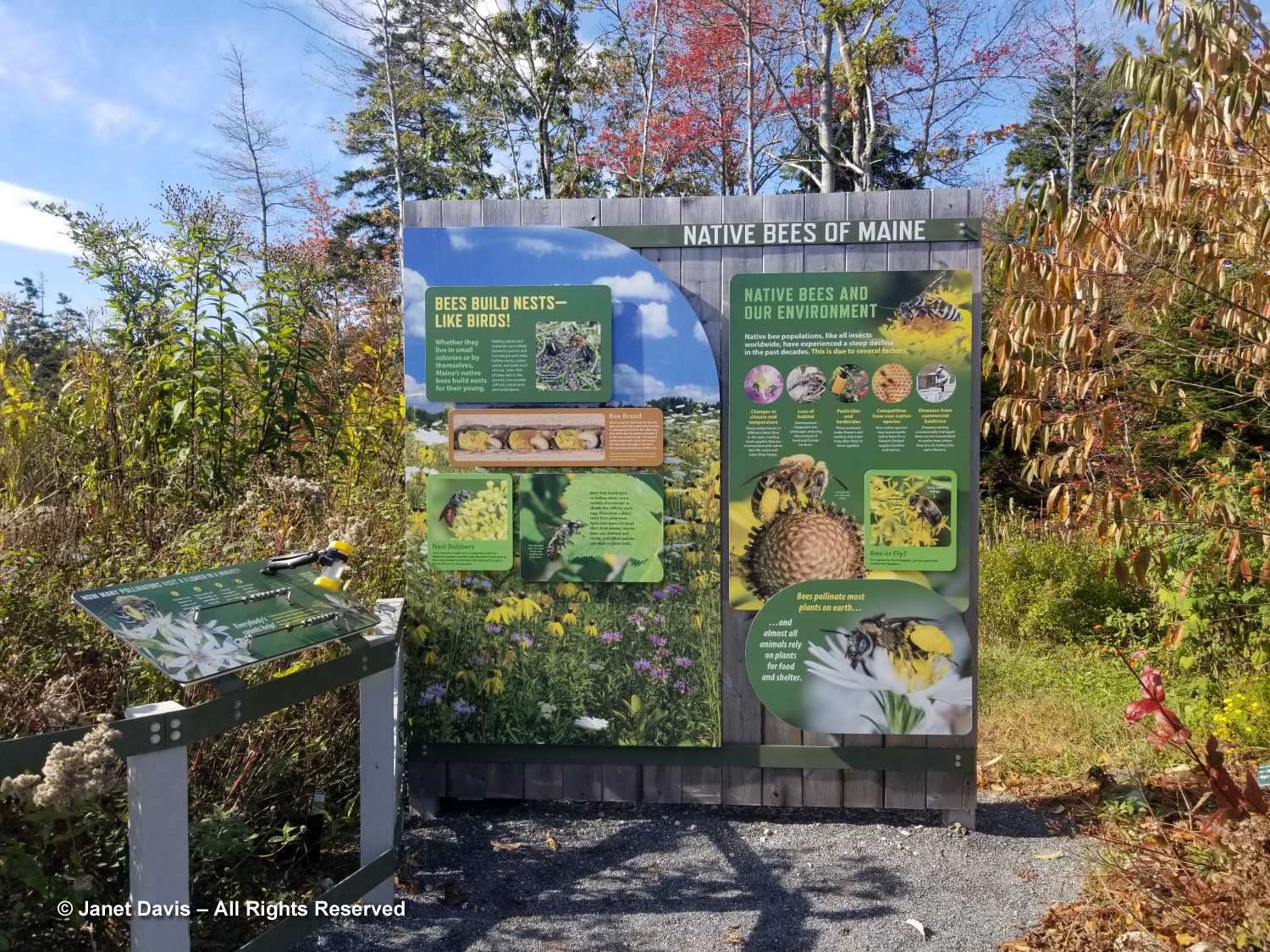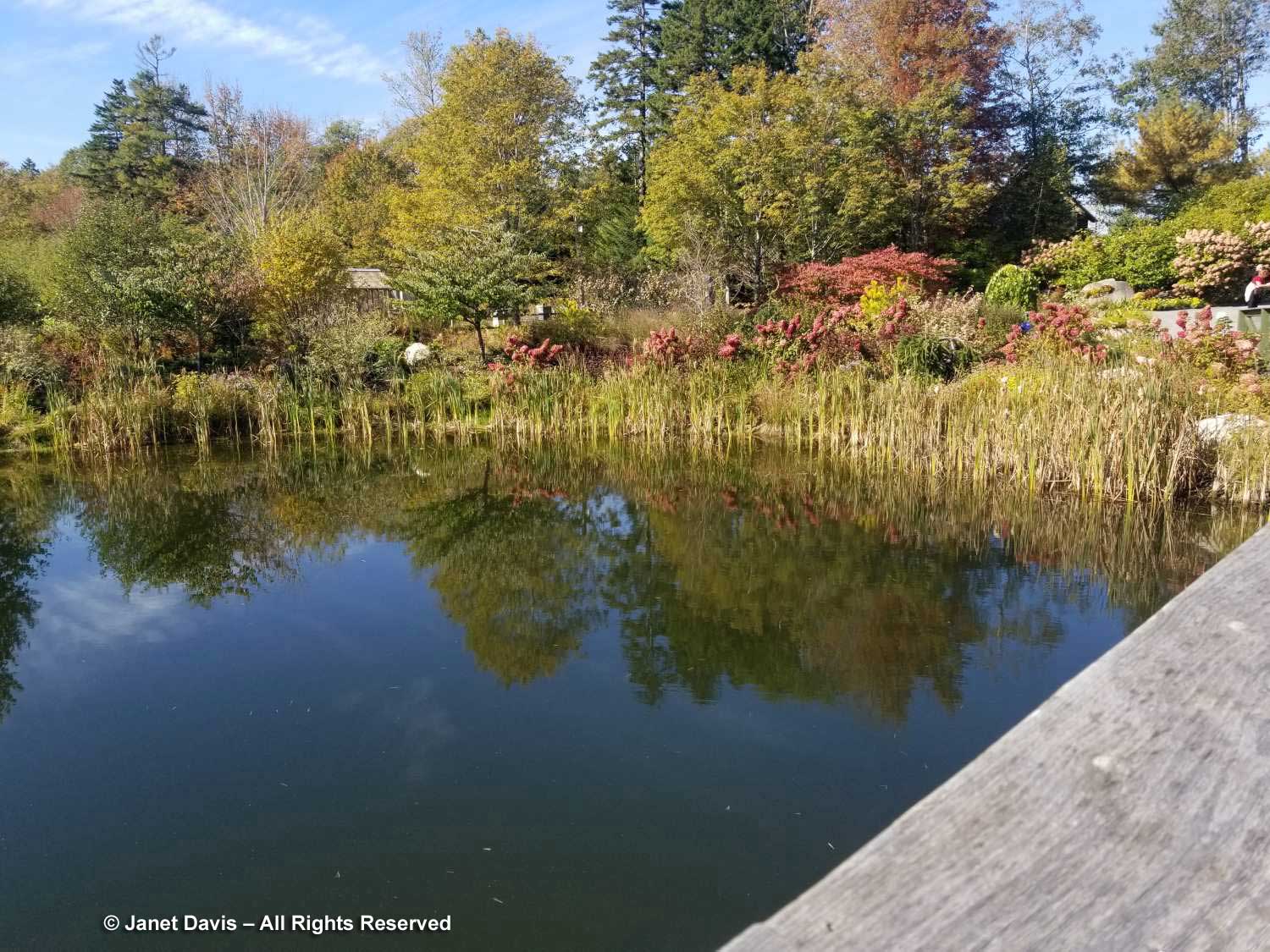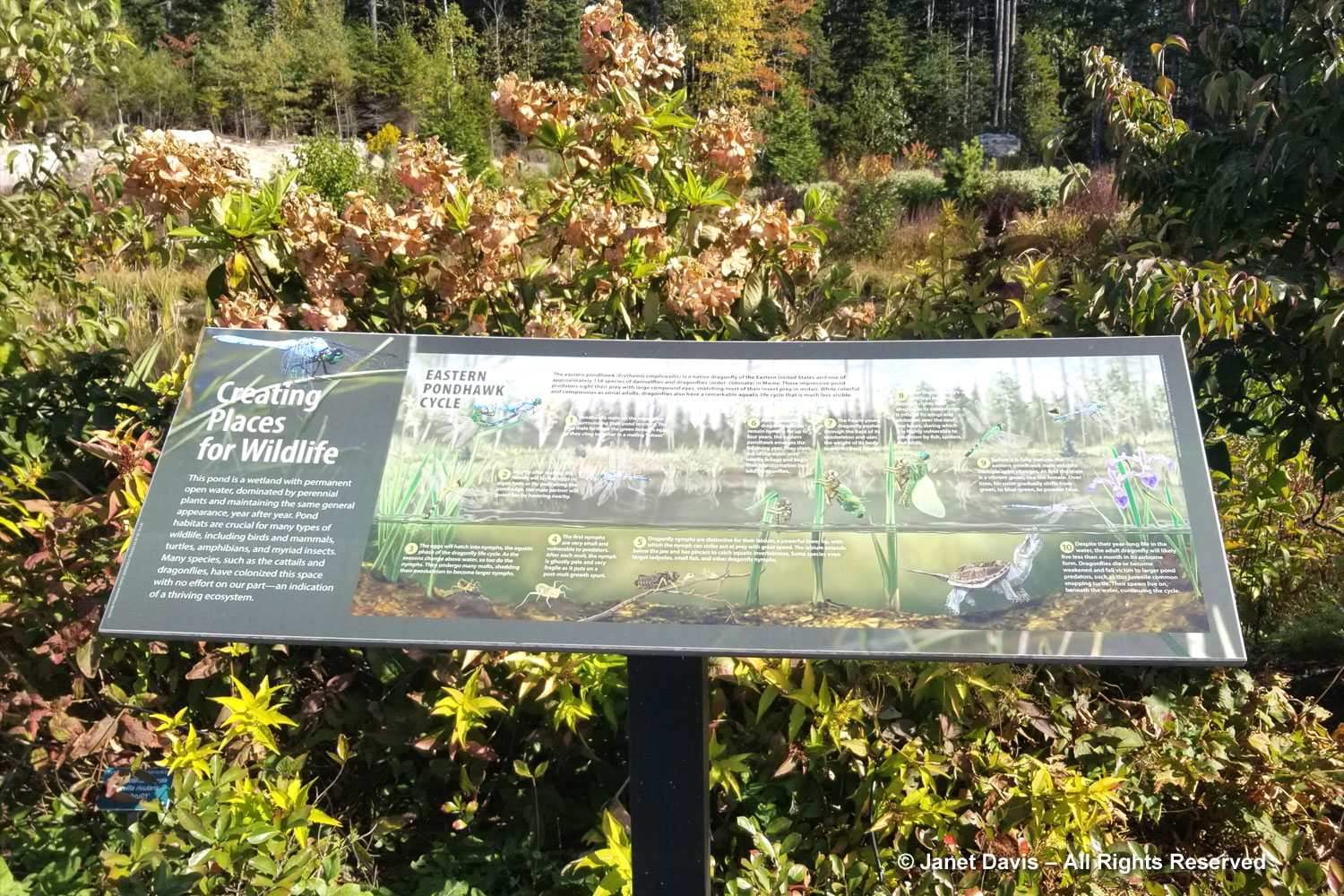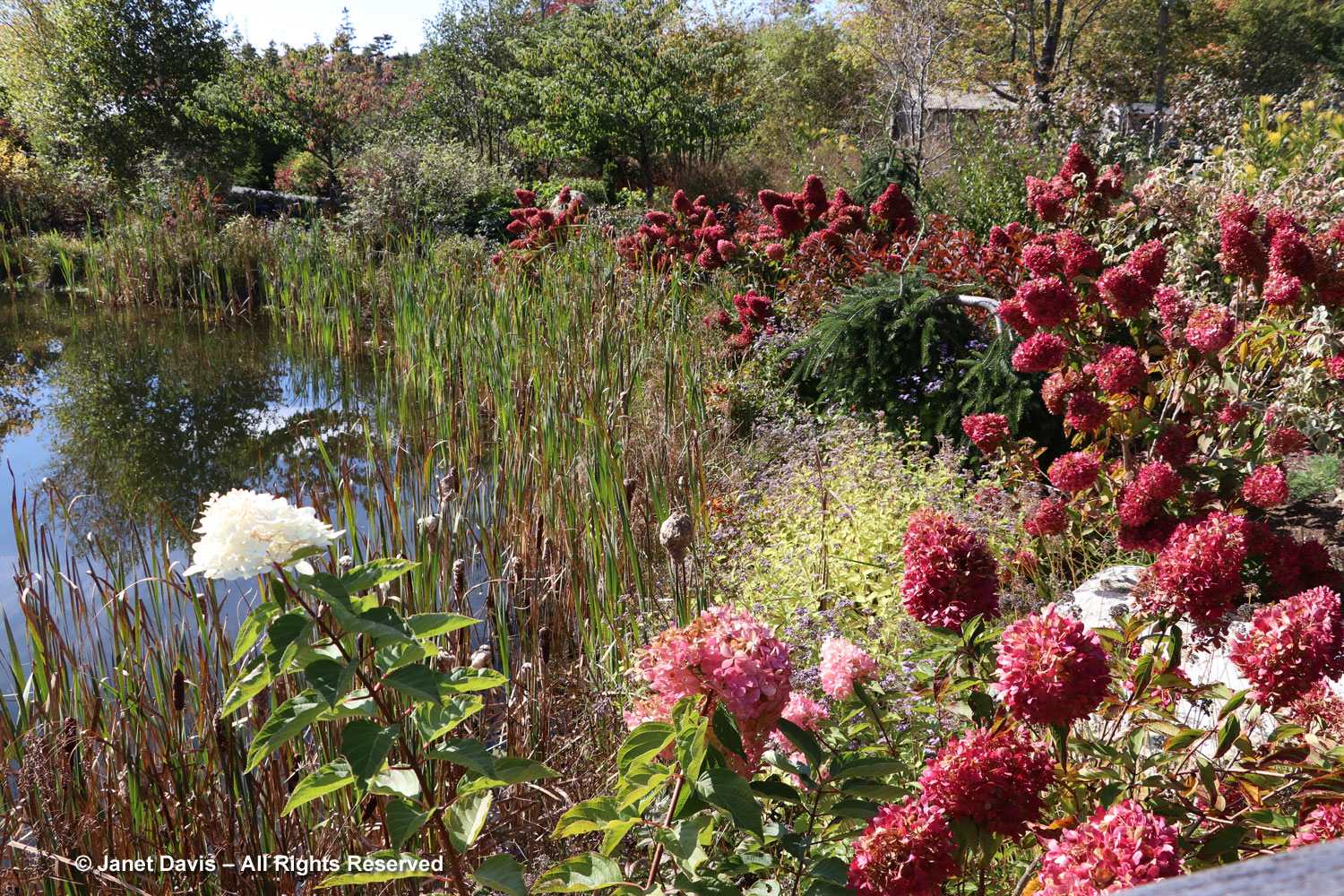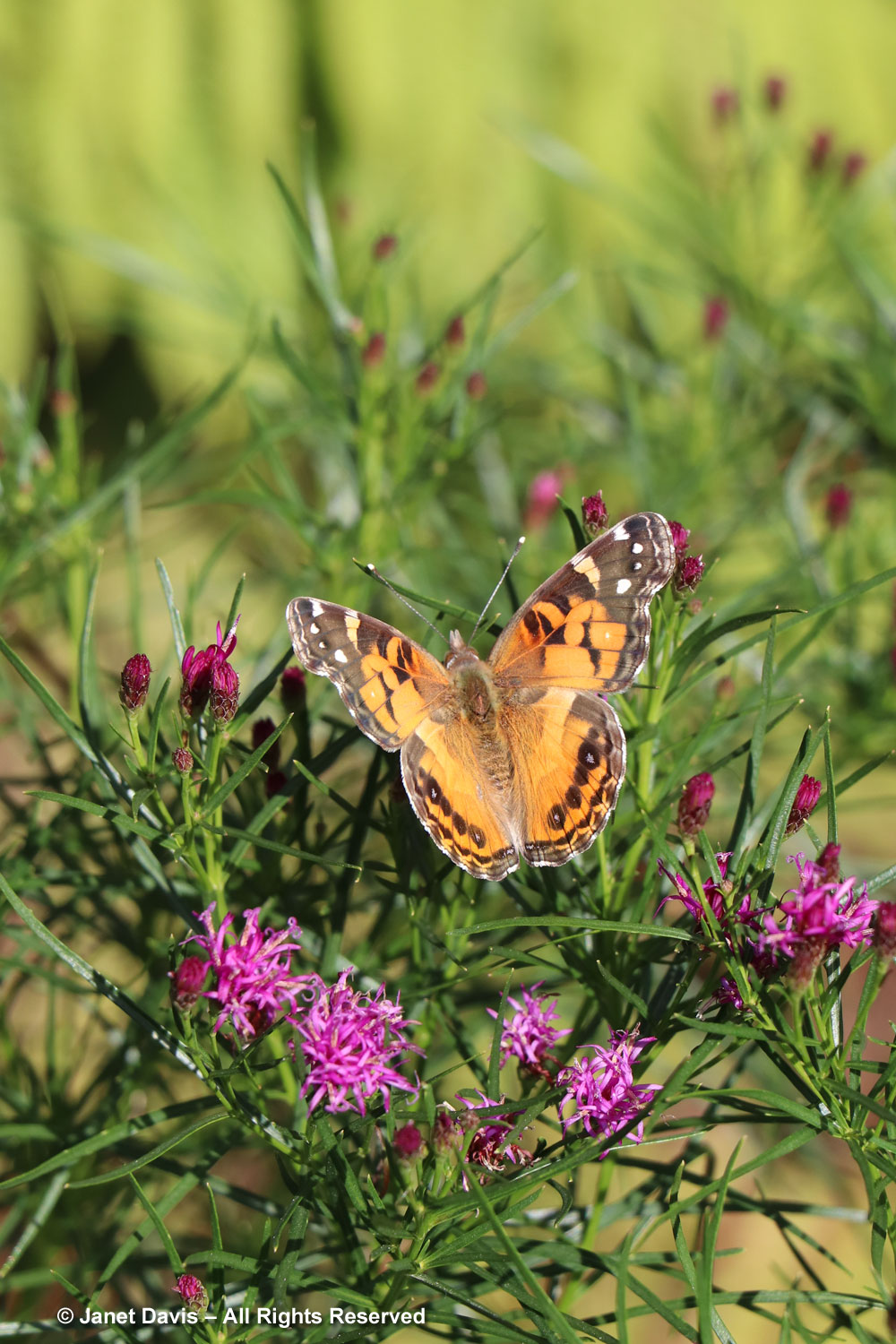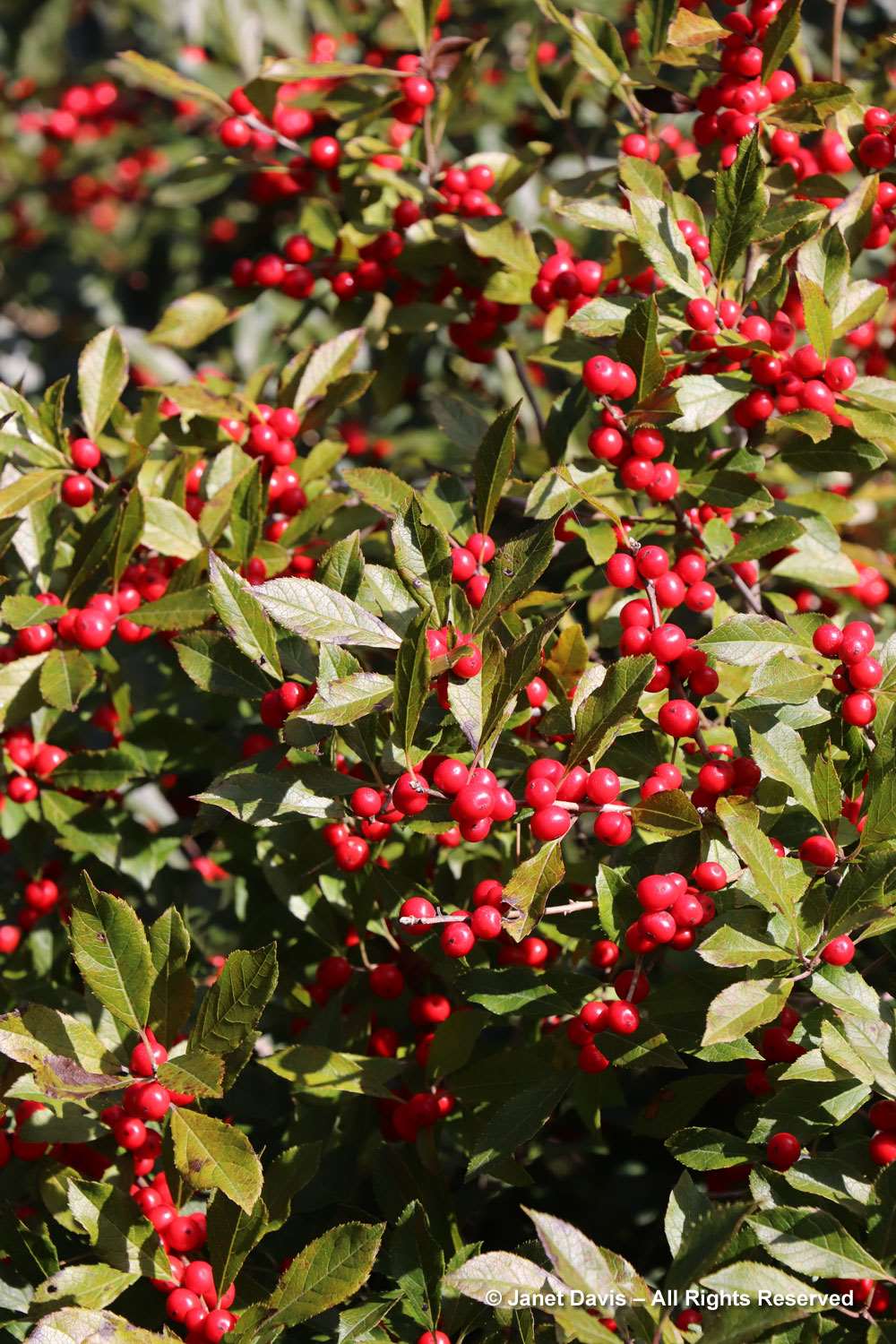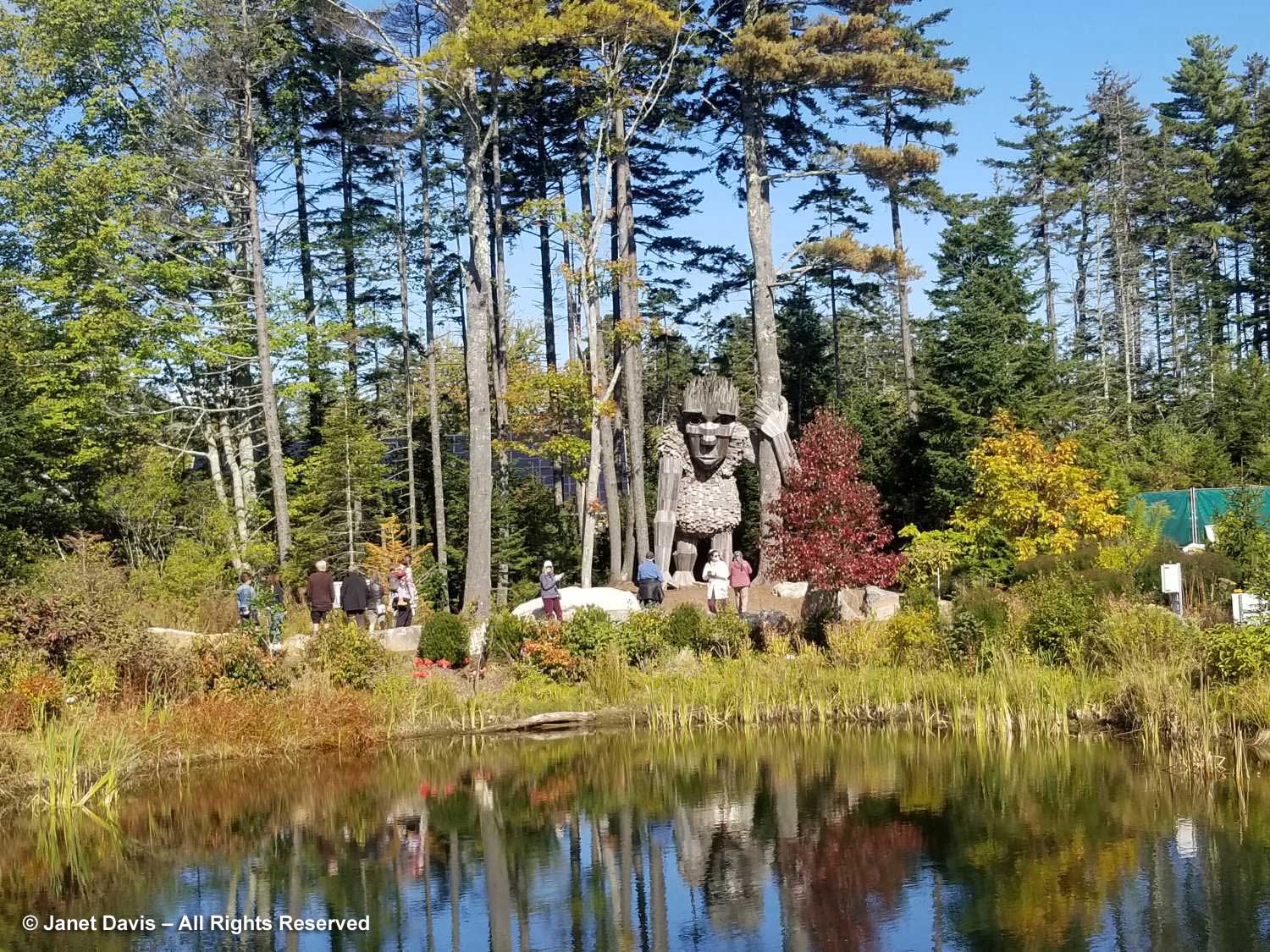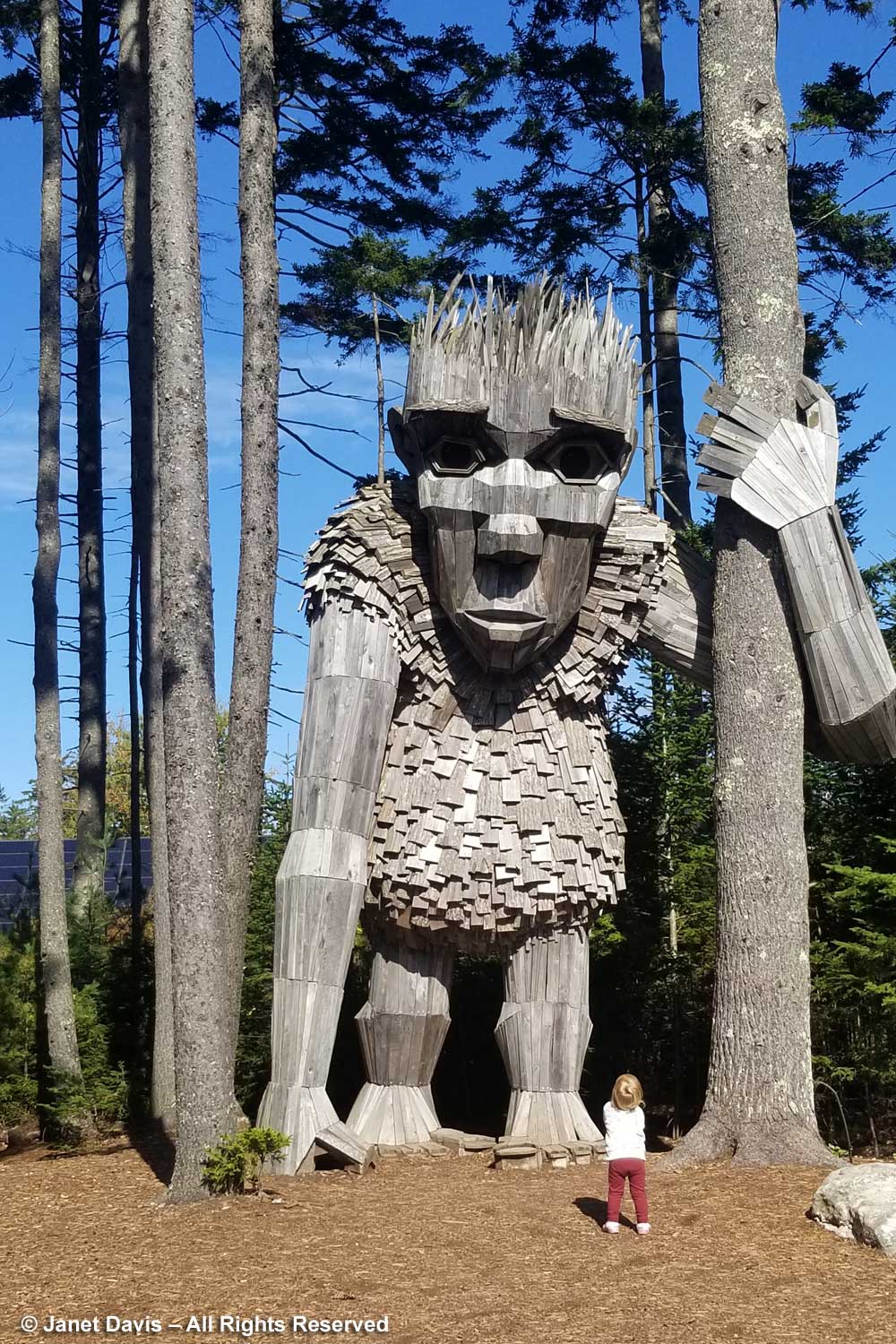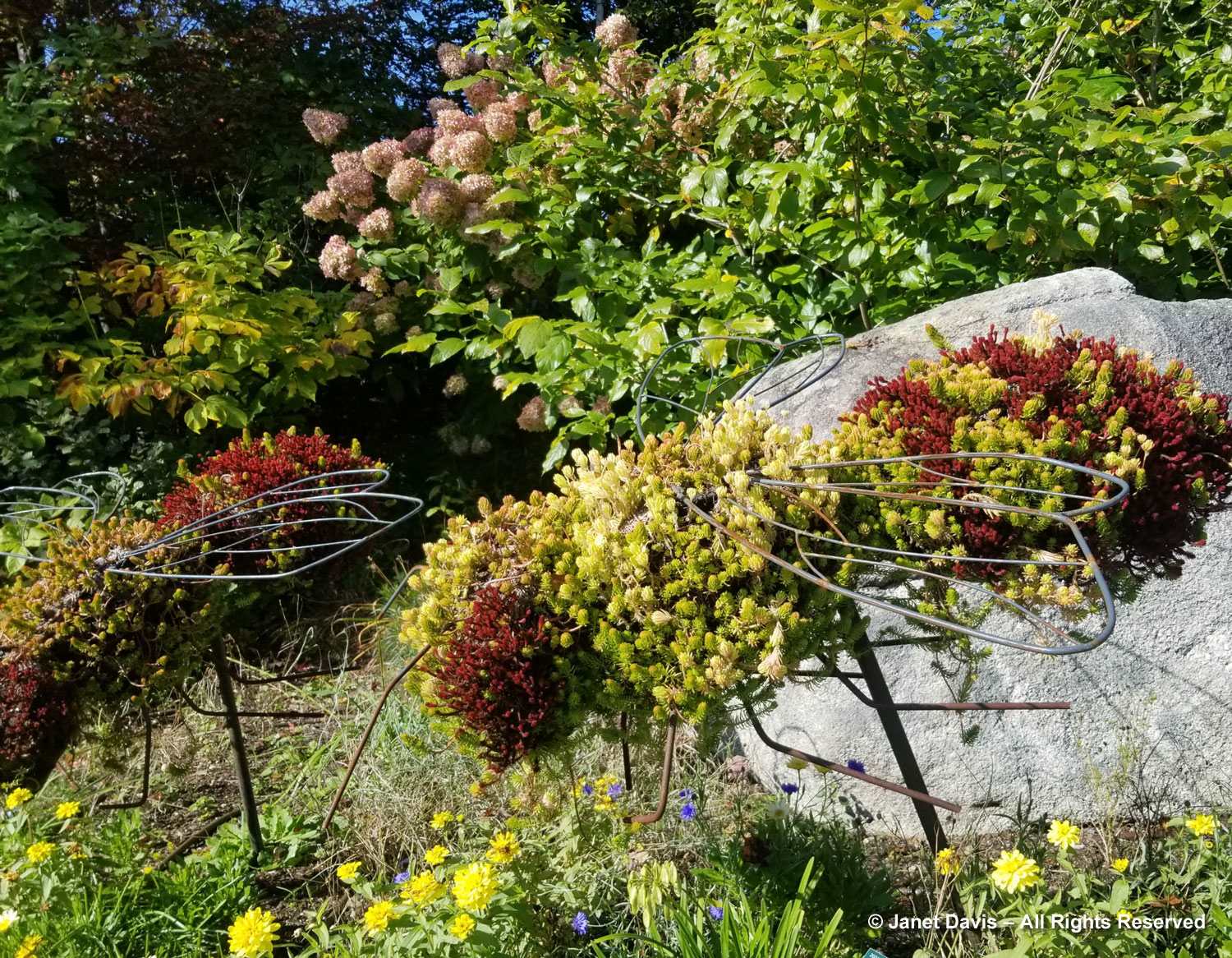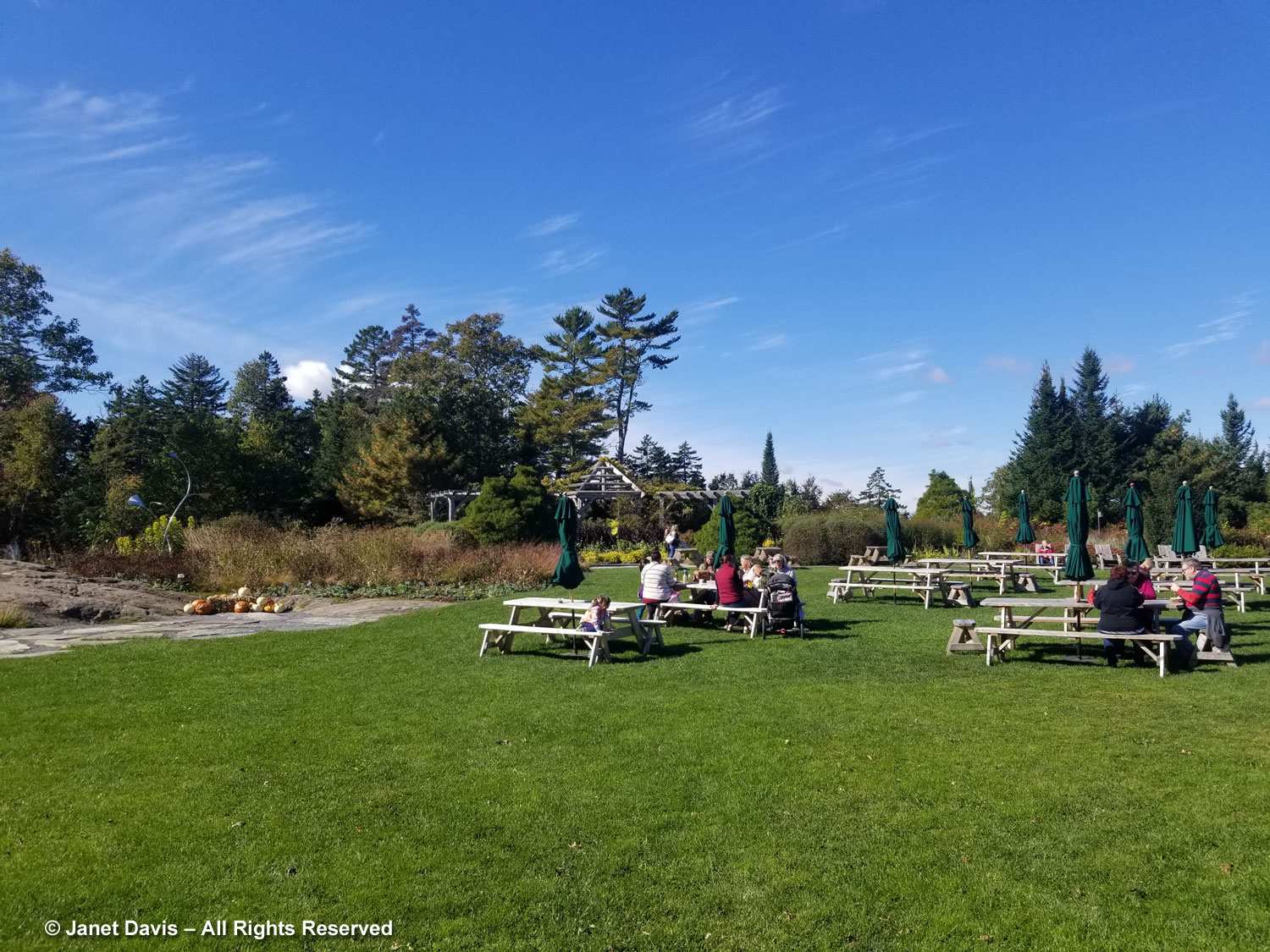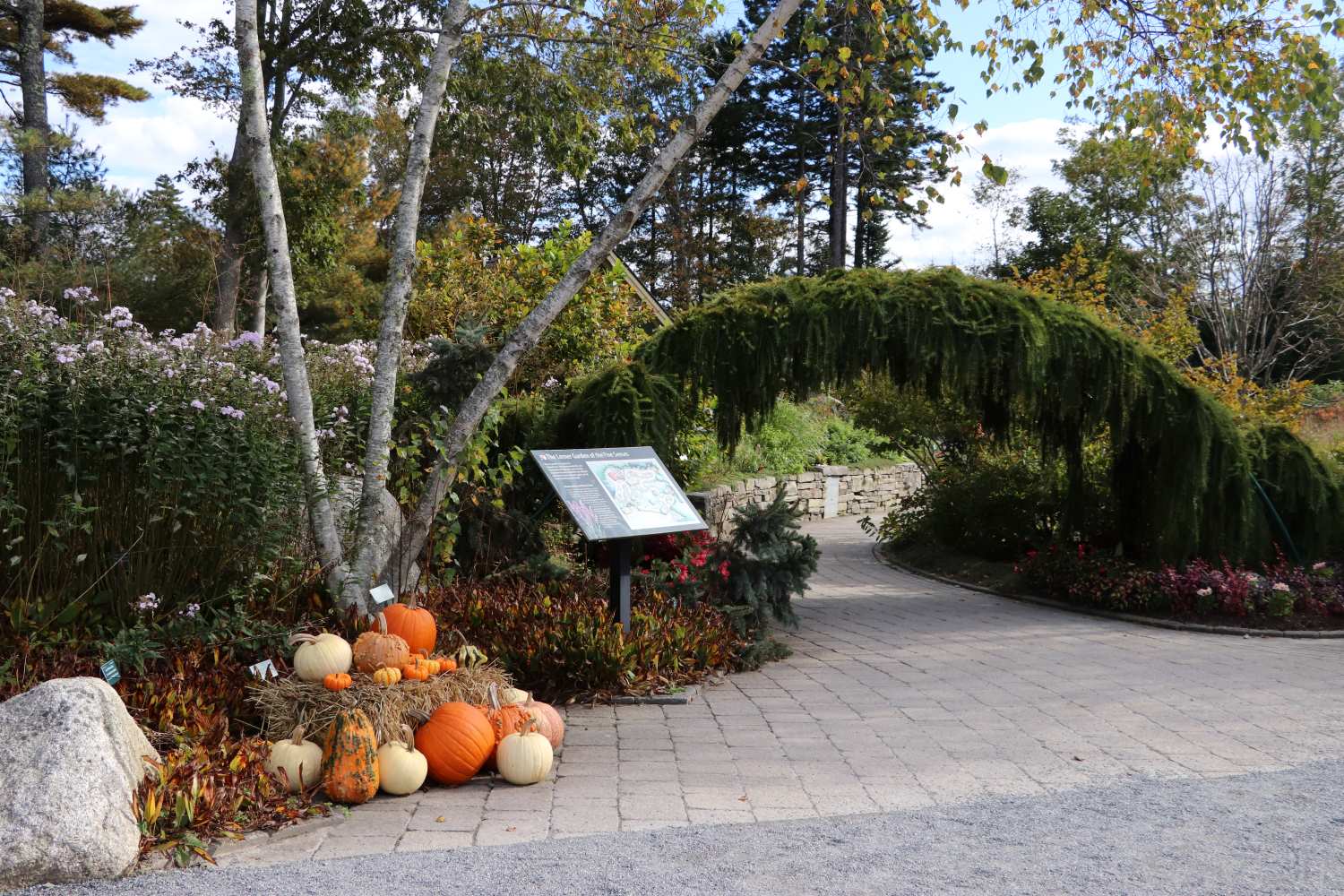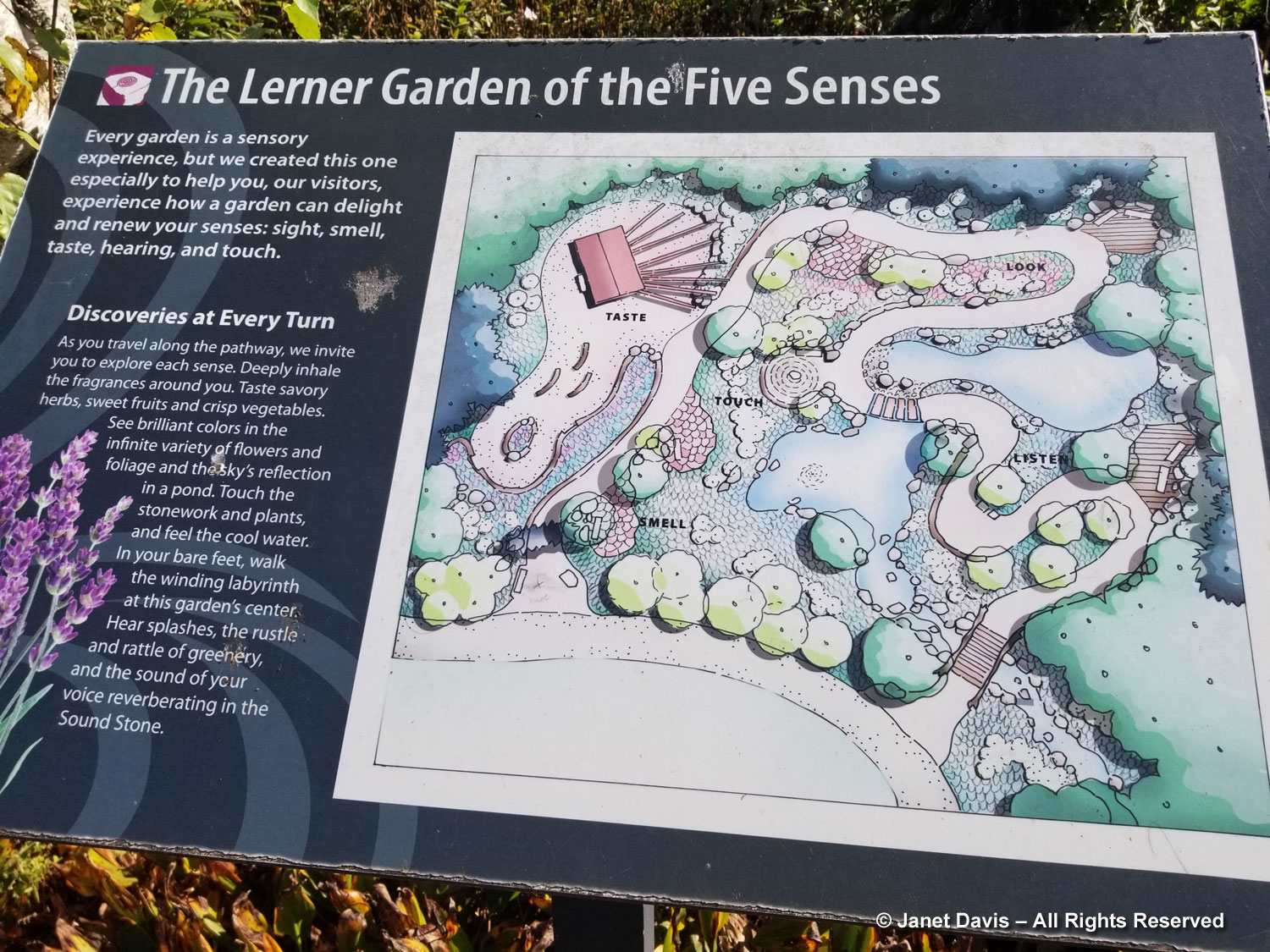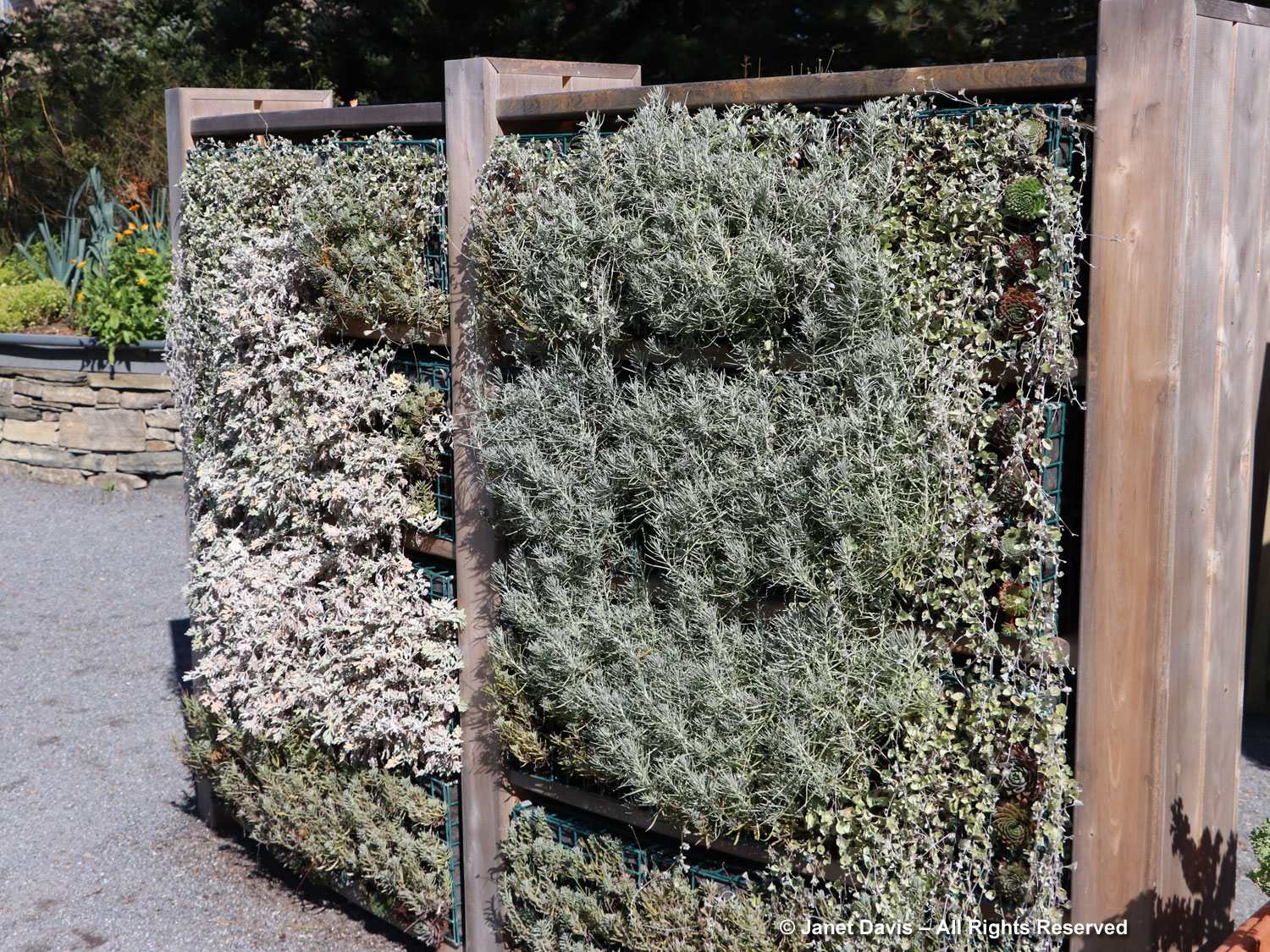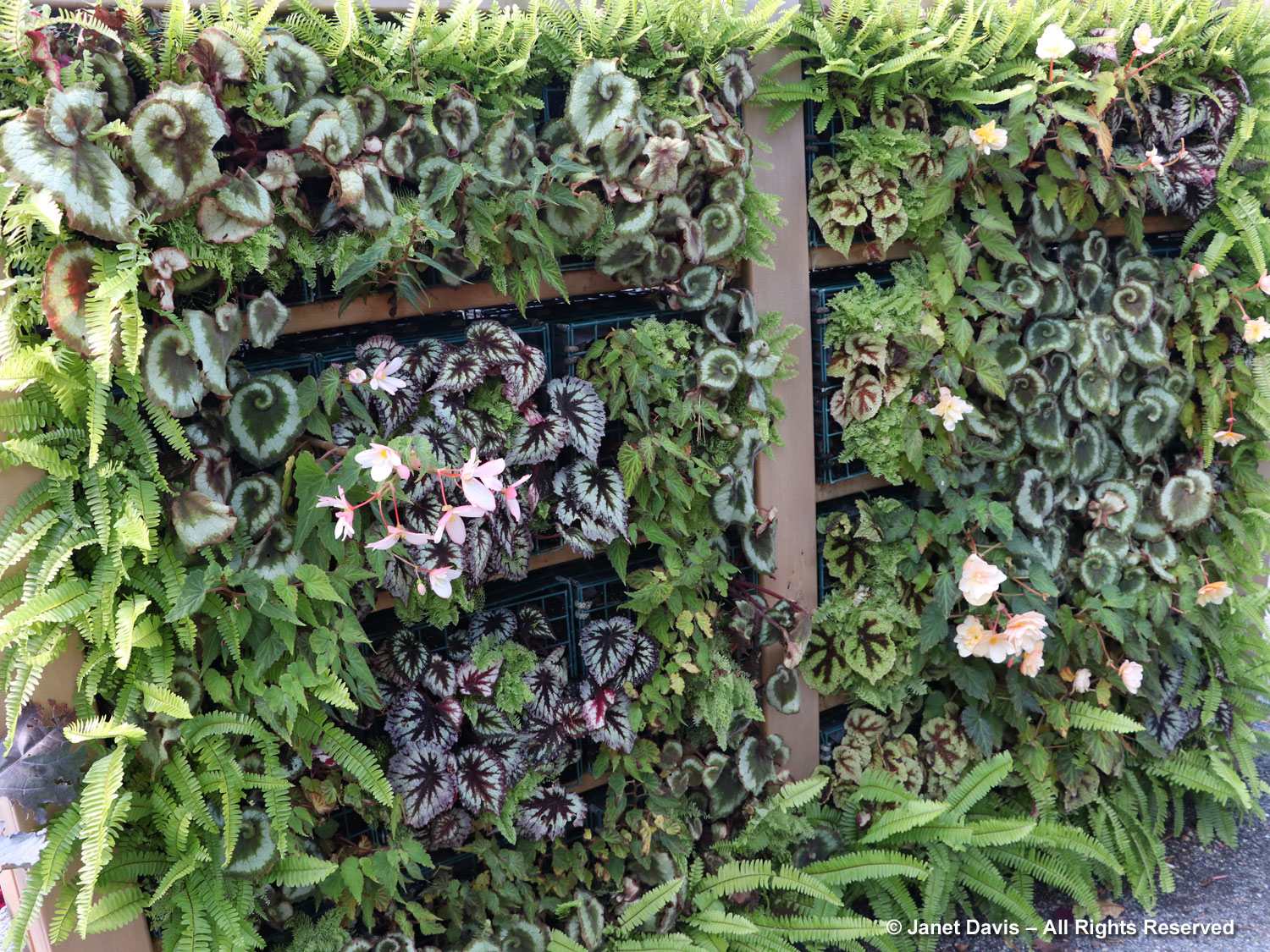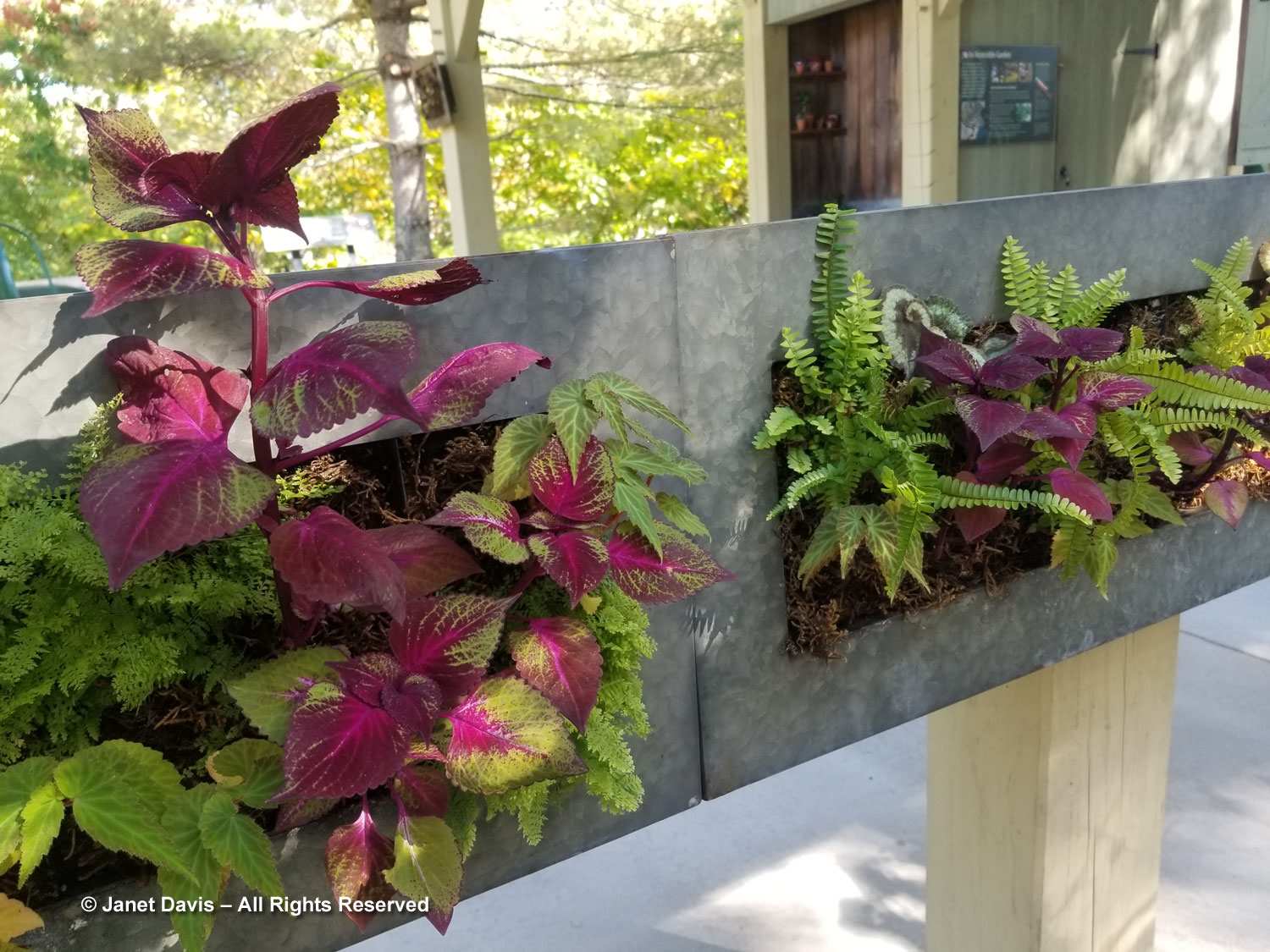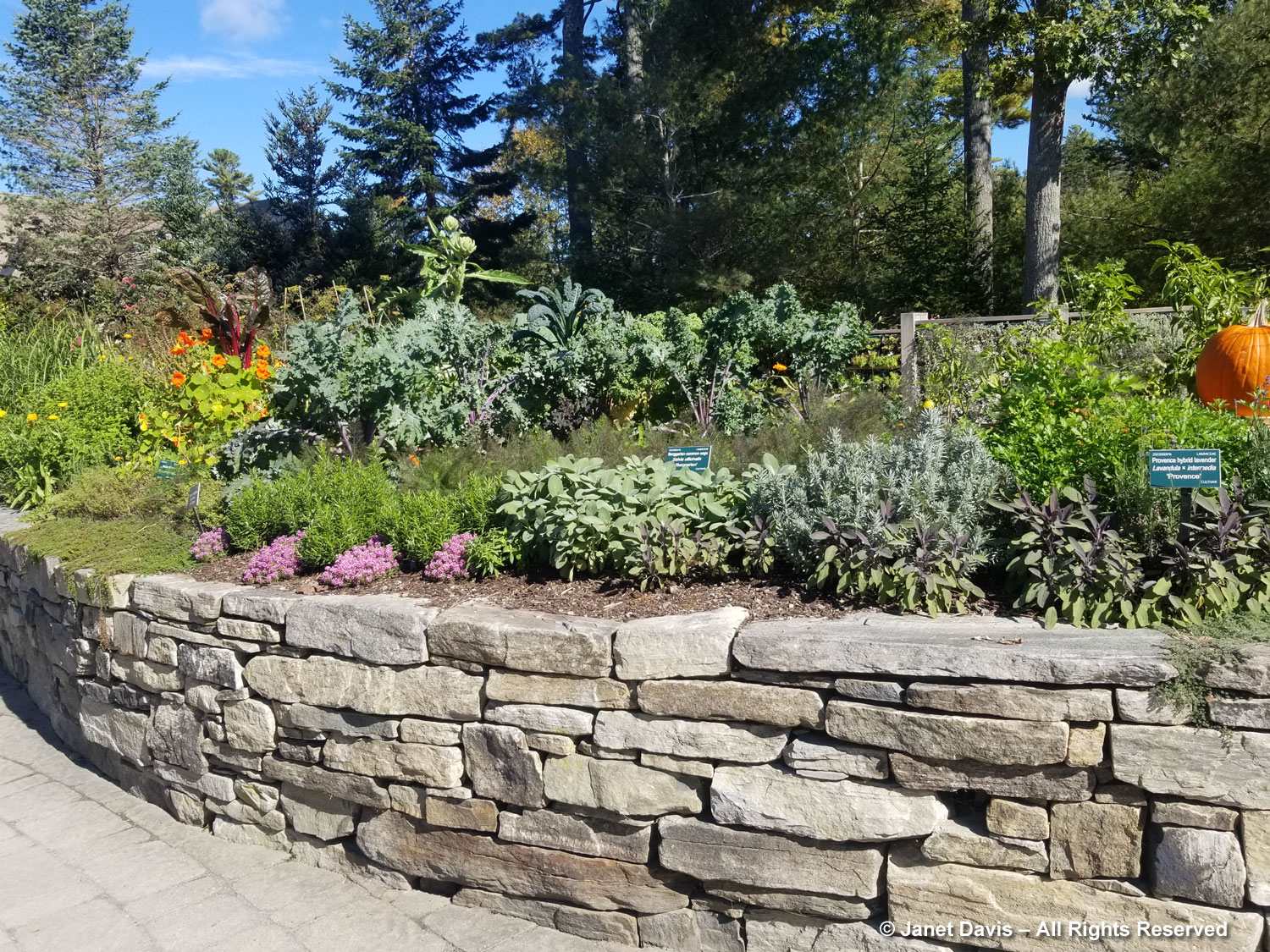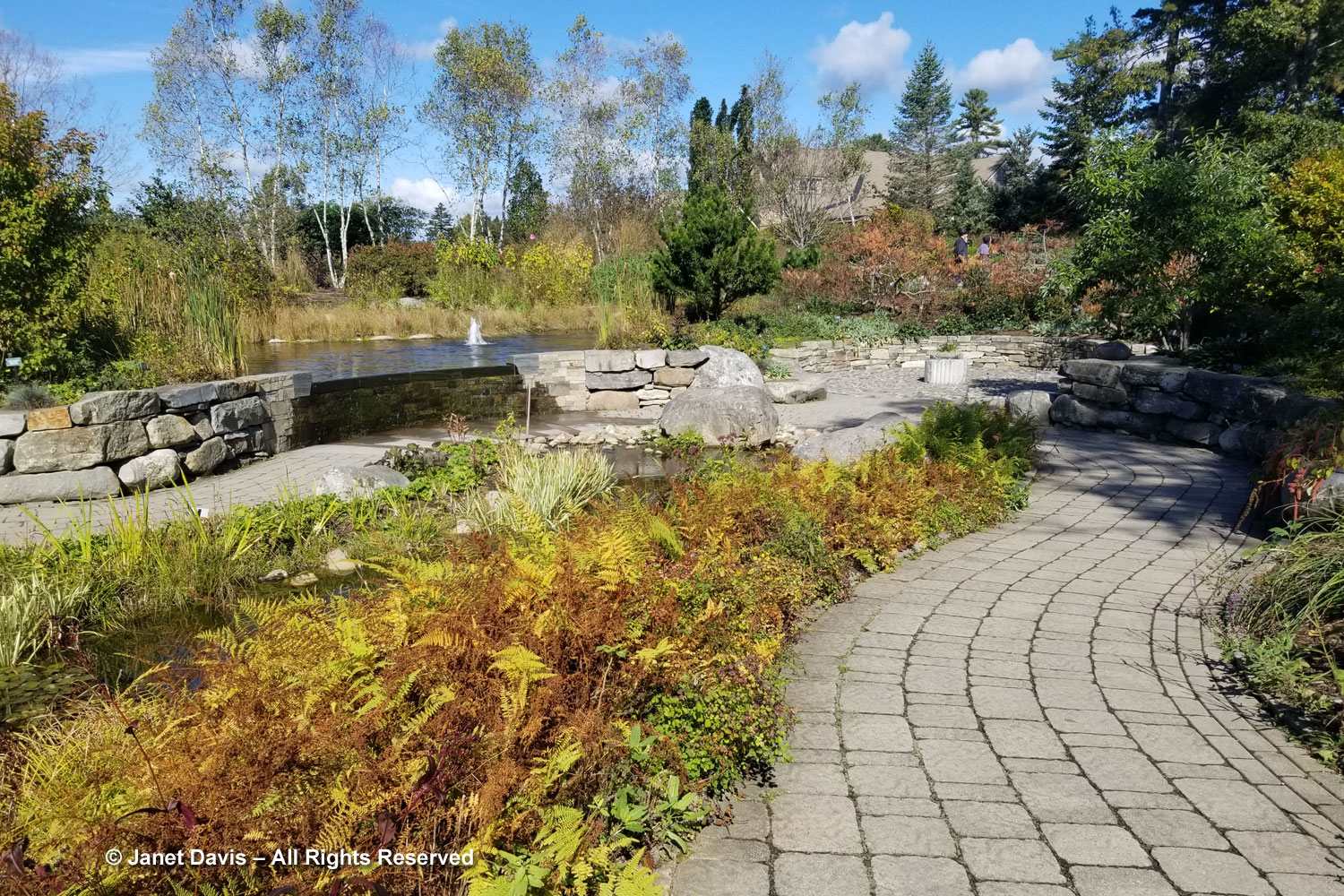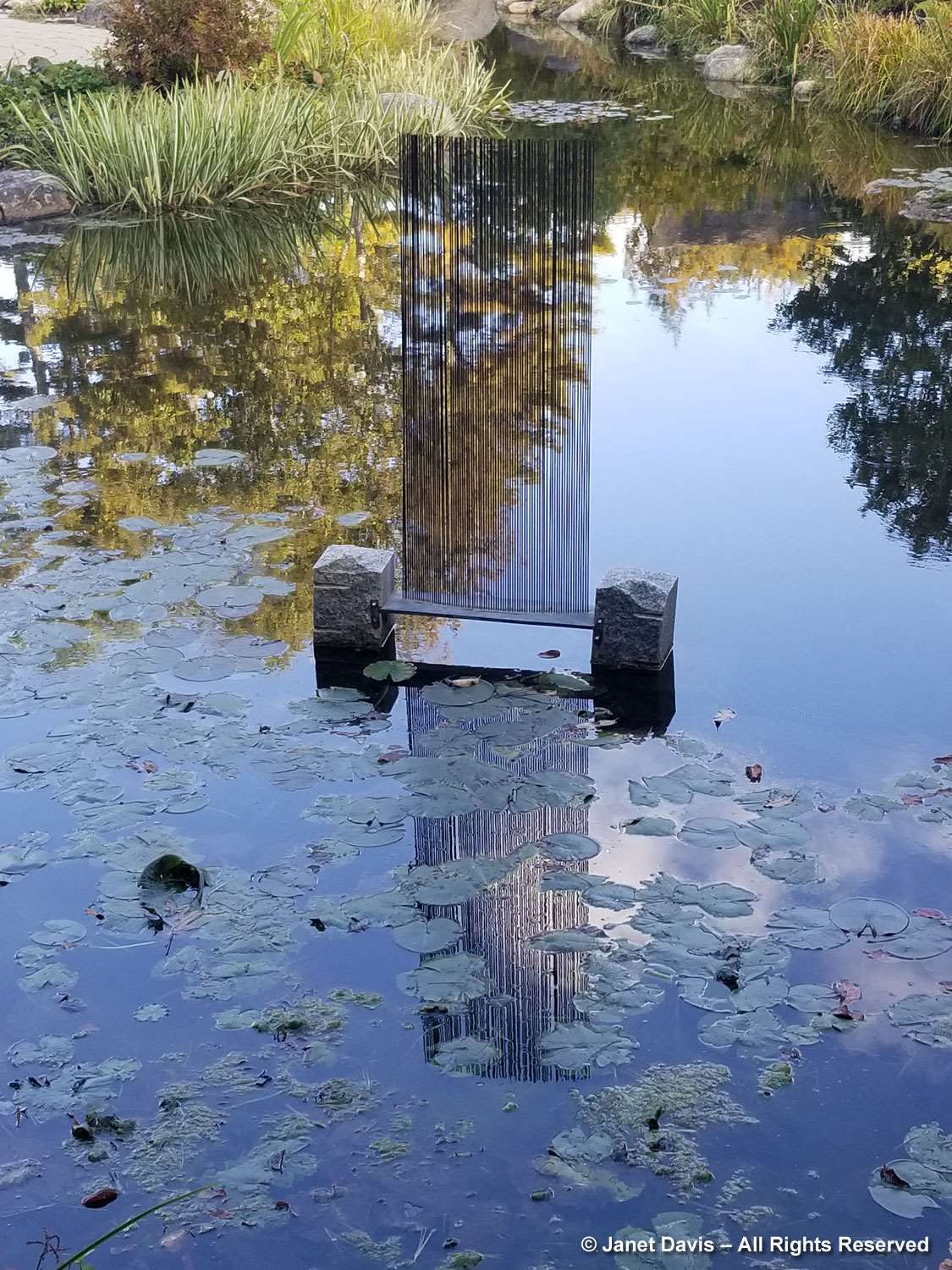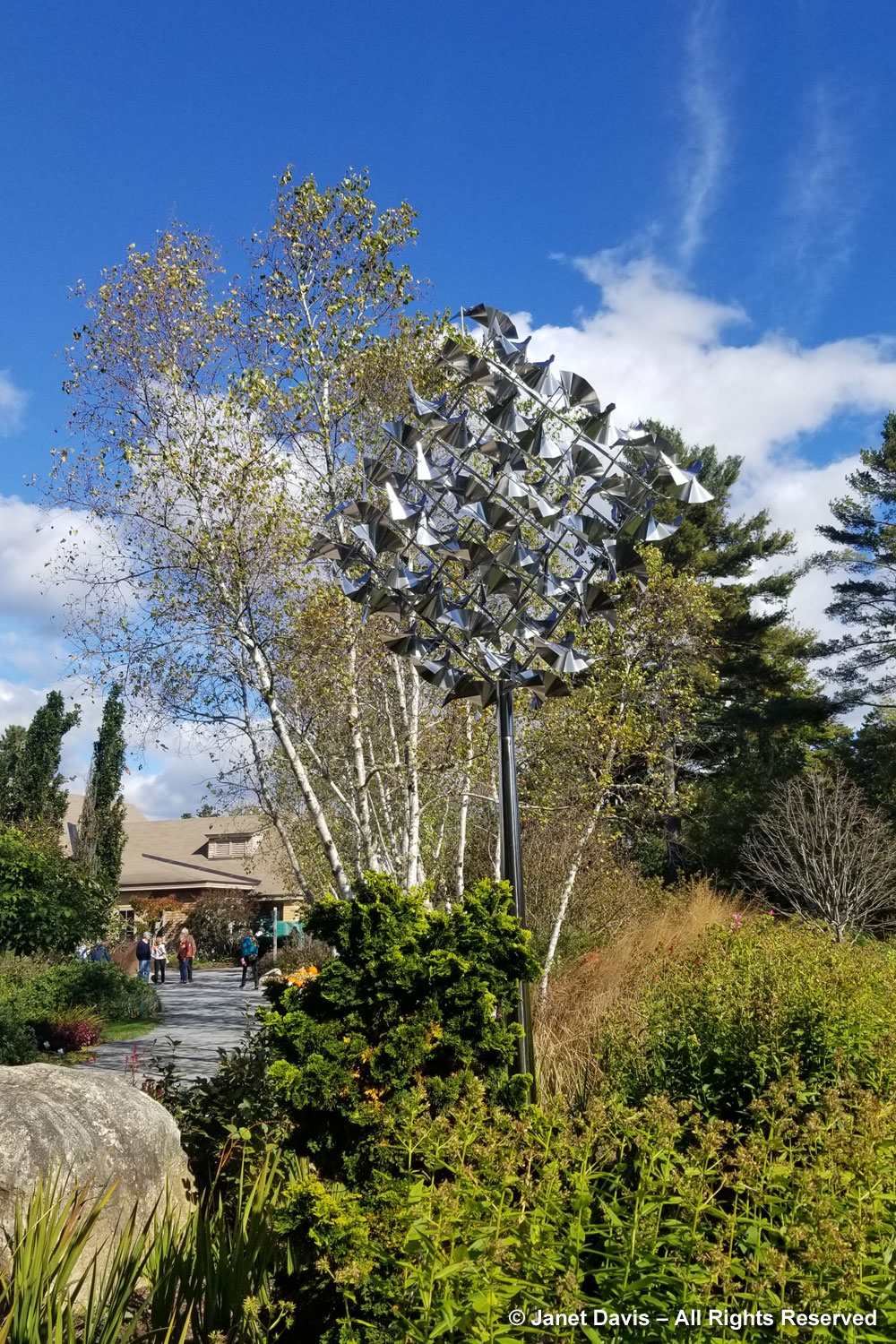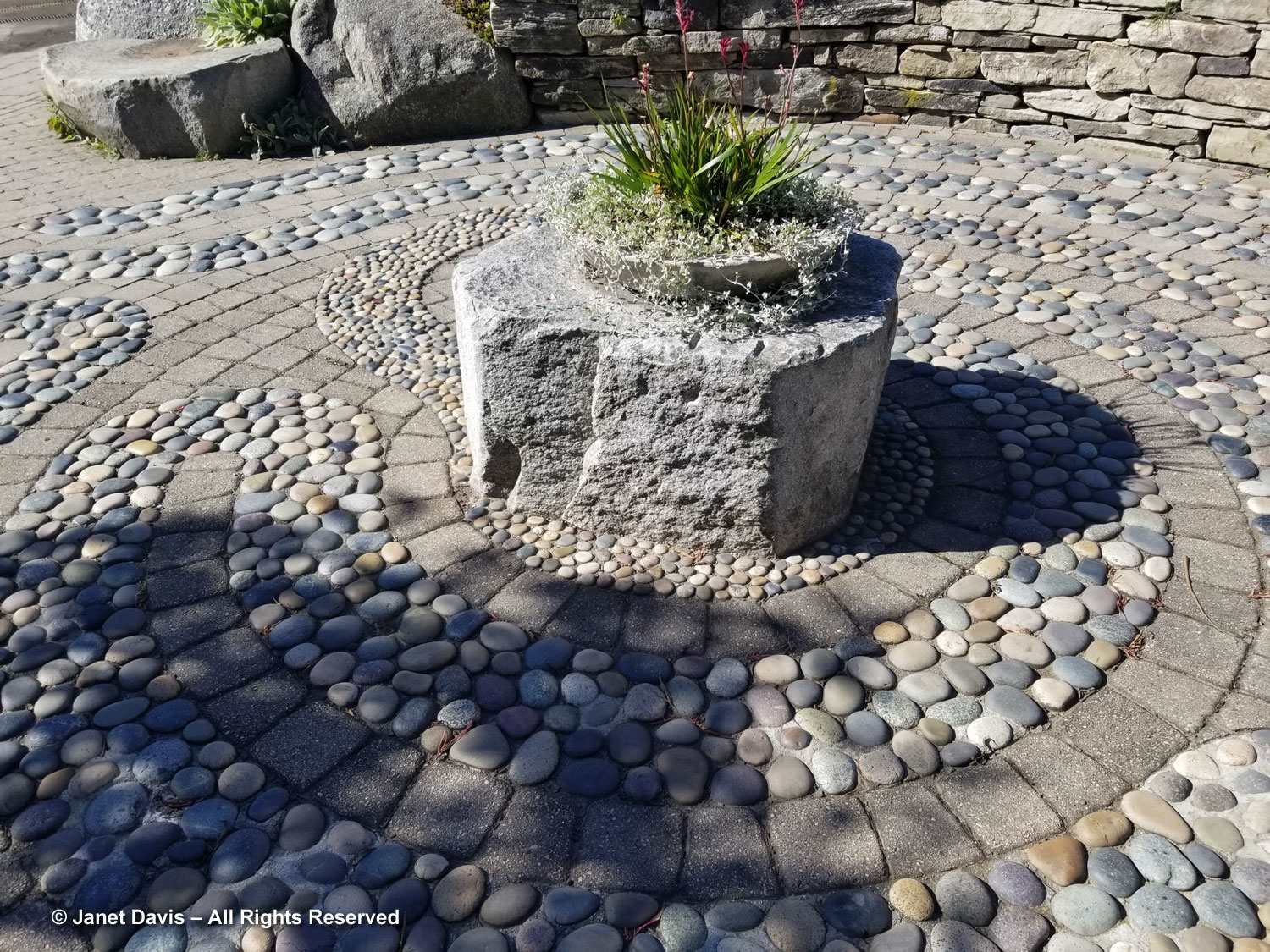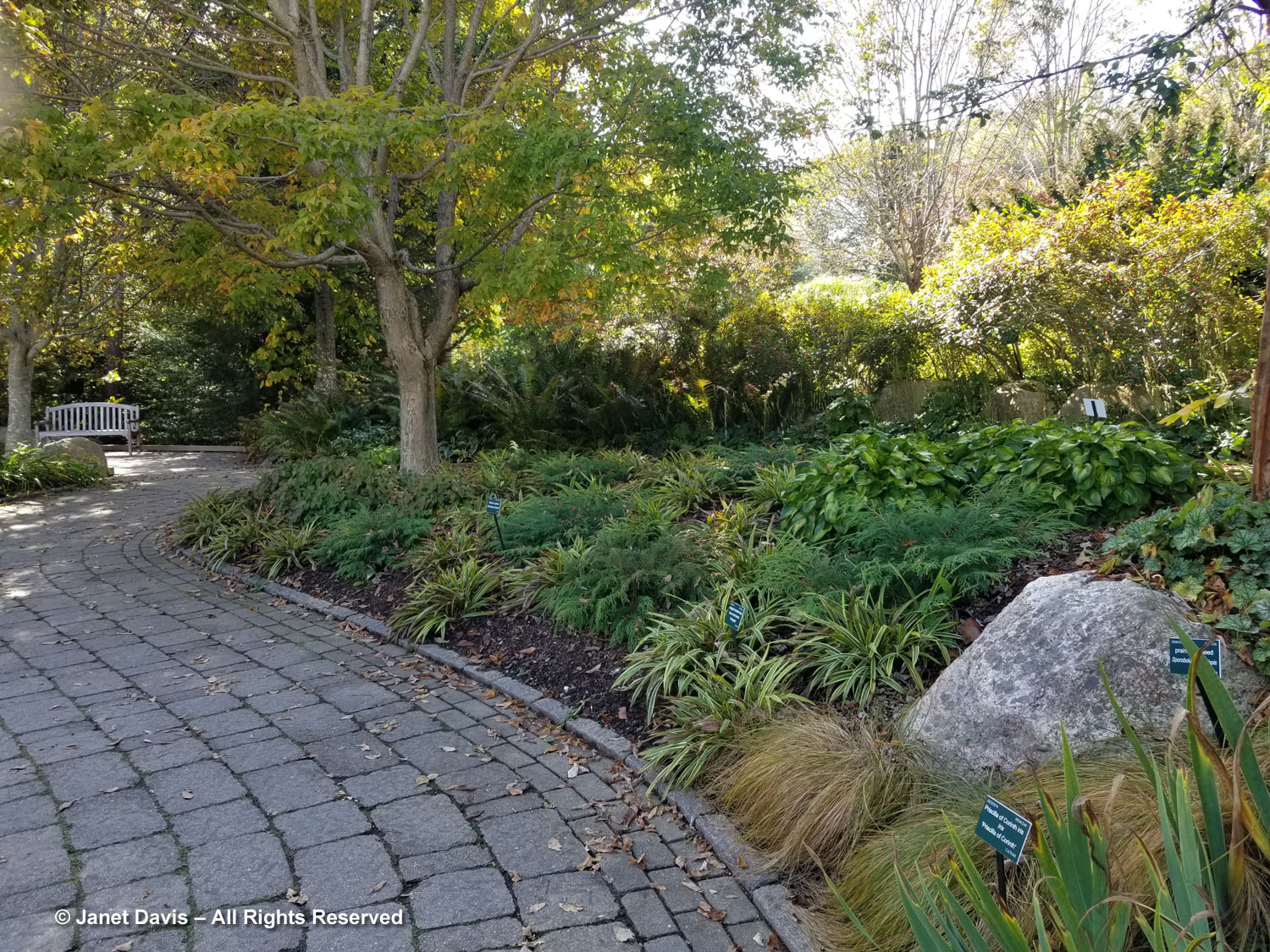Finally, I’m getting to finish up my visit to Coastal Maine Botanical Gardens in Boothbay Harbor, the continuation of Part 1 that I published in January. (Who knew winter would get so busy?) So let’s keep wandering and head for a little while down Haney Hill, below, which connects the formal parts of the garden above with the magnificent forests below.
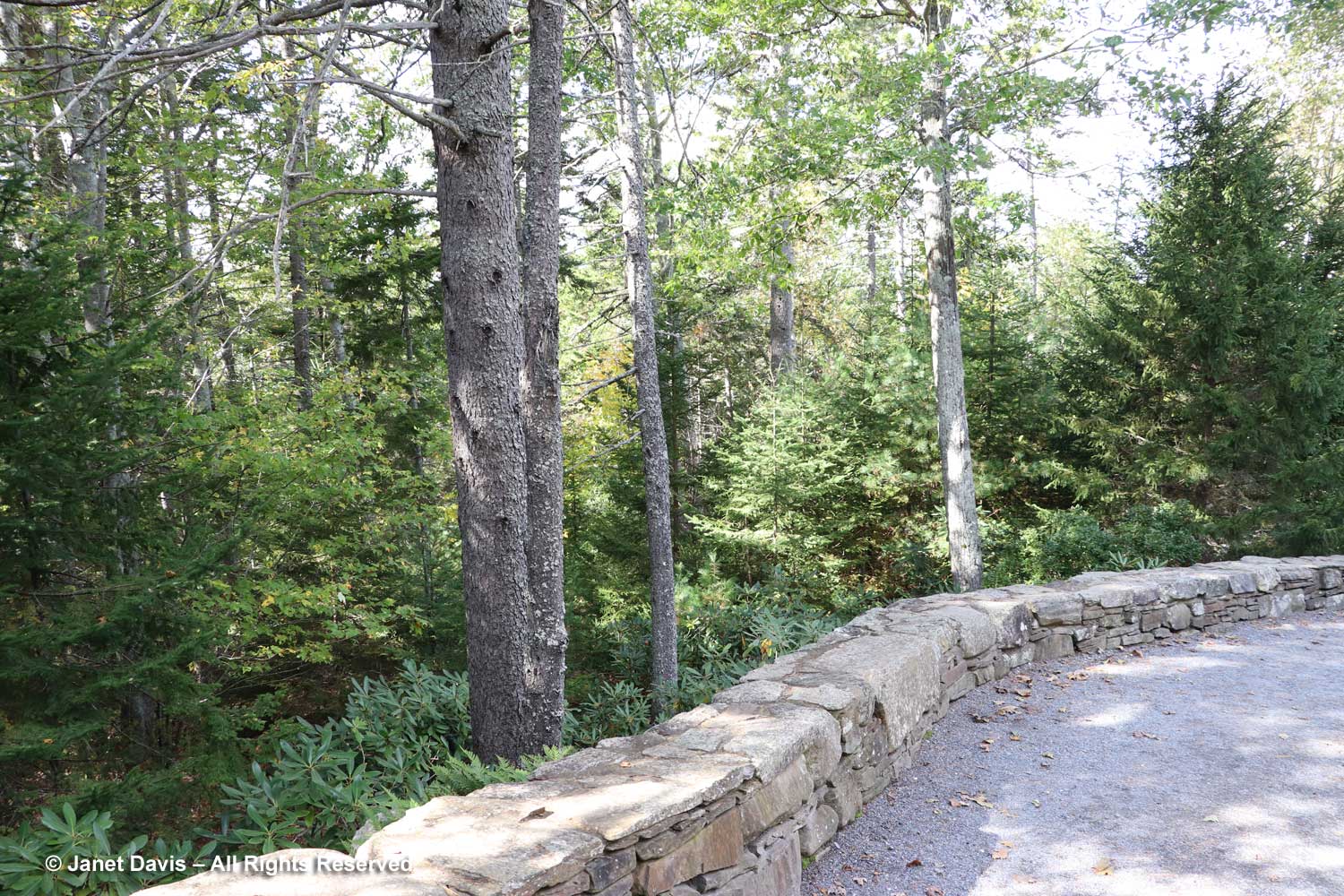
There’s a small pond at the top with a Japanese feel……
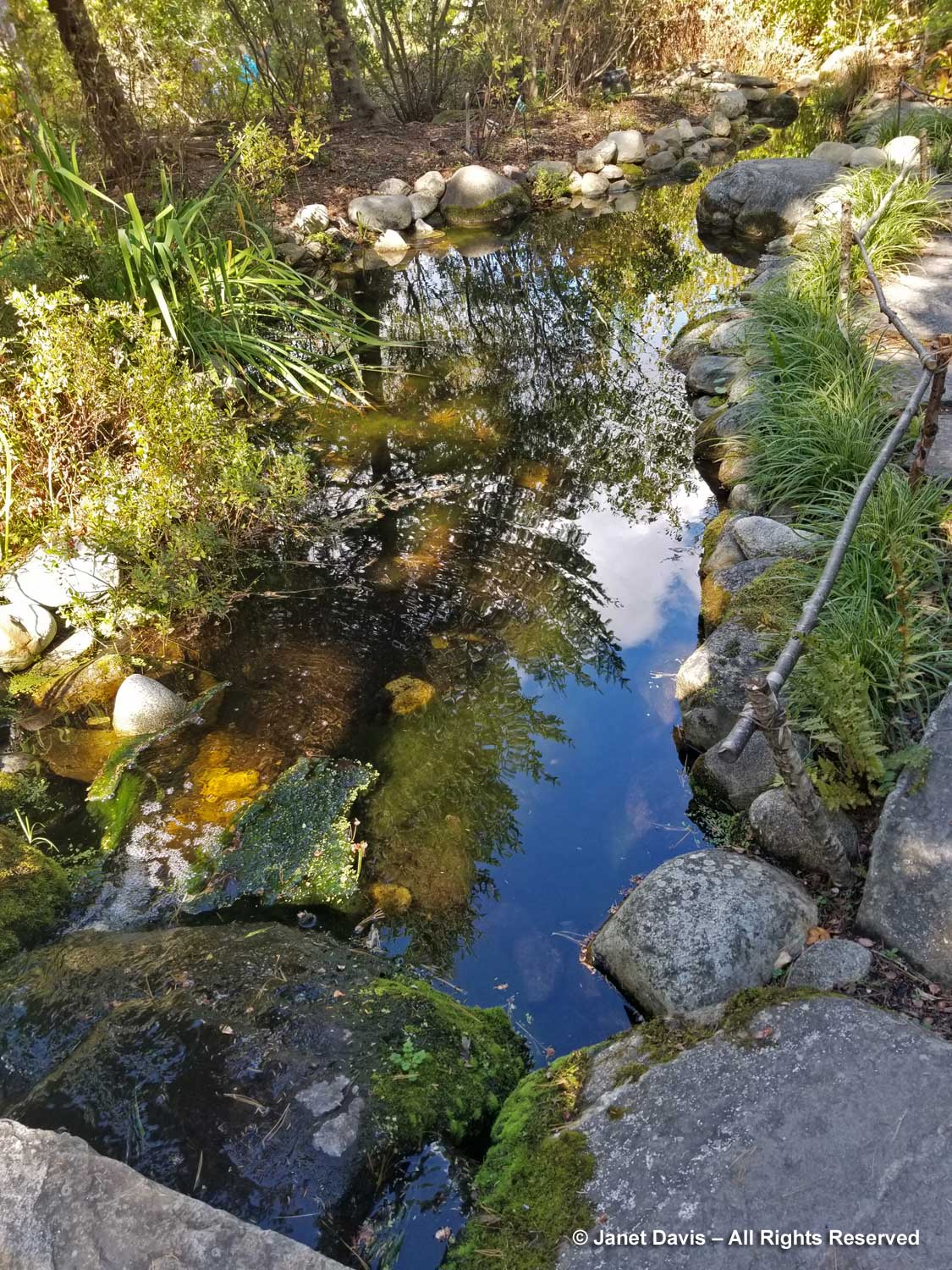
…. enhanced by the ‘Ice Dance’ Japanese sedge (Carex morrowii). I left the sign in this photo to illustrate how careful CMBG is at providing descriptions almost everywhere, something many botanical gardens forget to do since it requires attention to detail and resources.
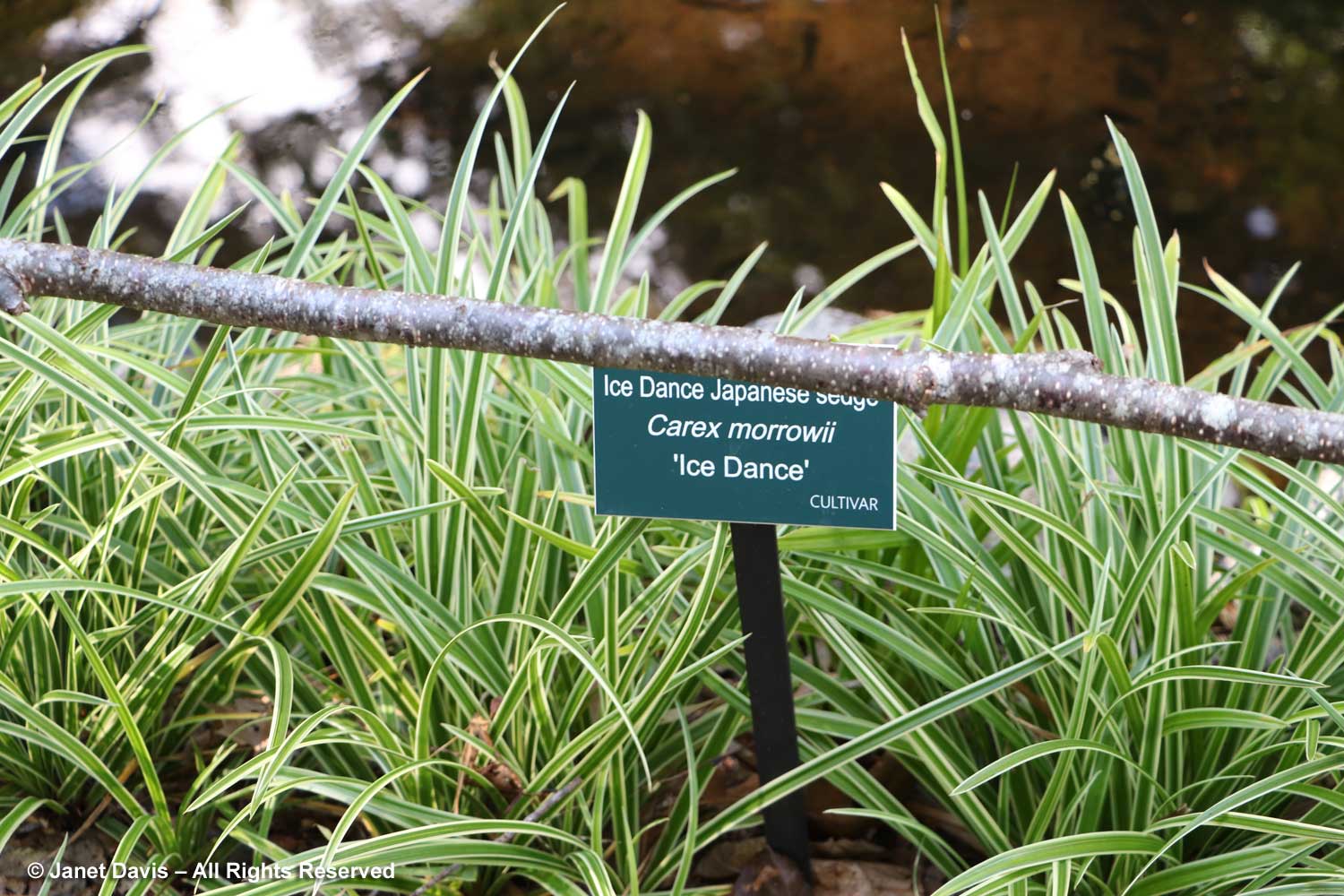
A lookout allows visitors to contemplate the rich, mixed forest below here.
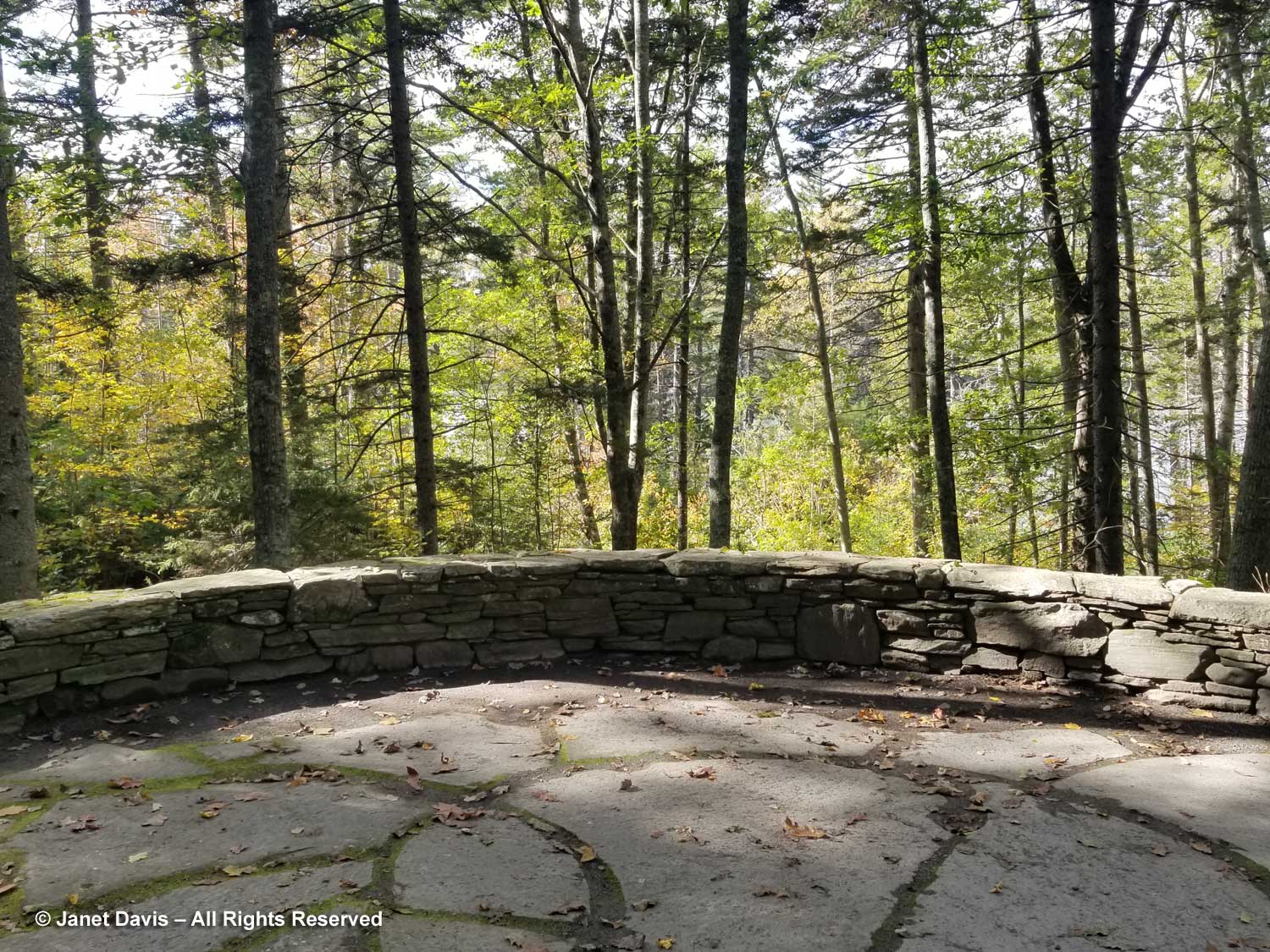
And, unlike many public gardens, CBMG also pays attention to ecology and educating visitors.
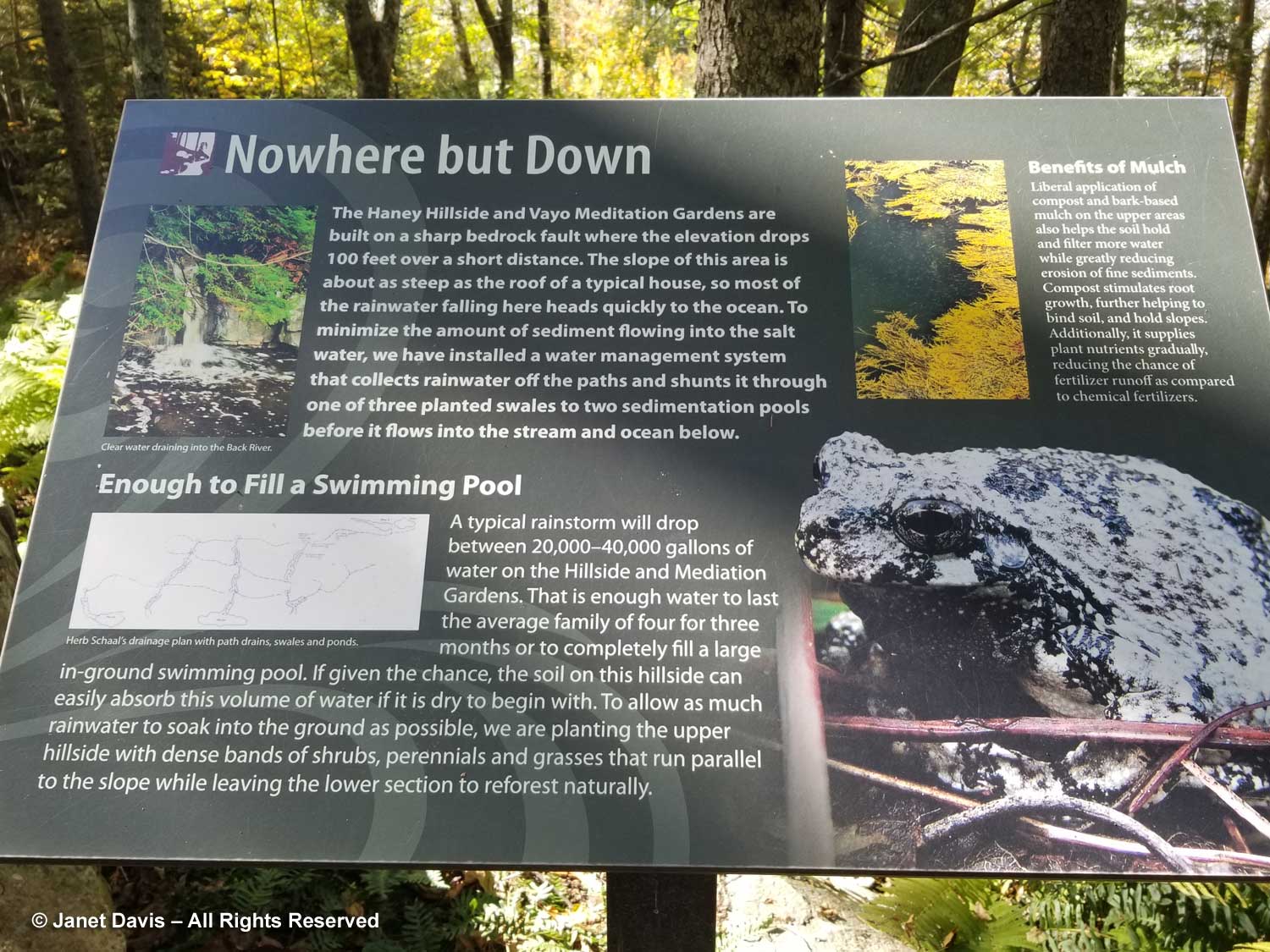
The path is flanked with naturalistic plantings, mostly native, including many choice conifers.
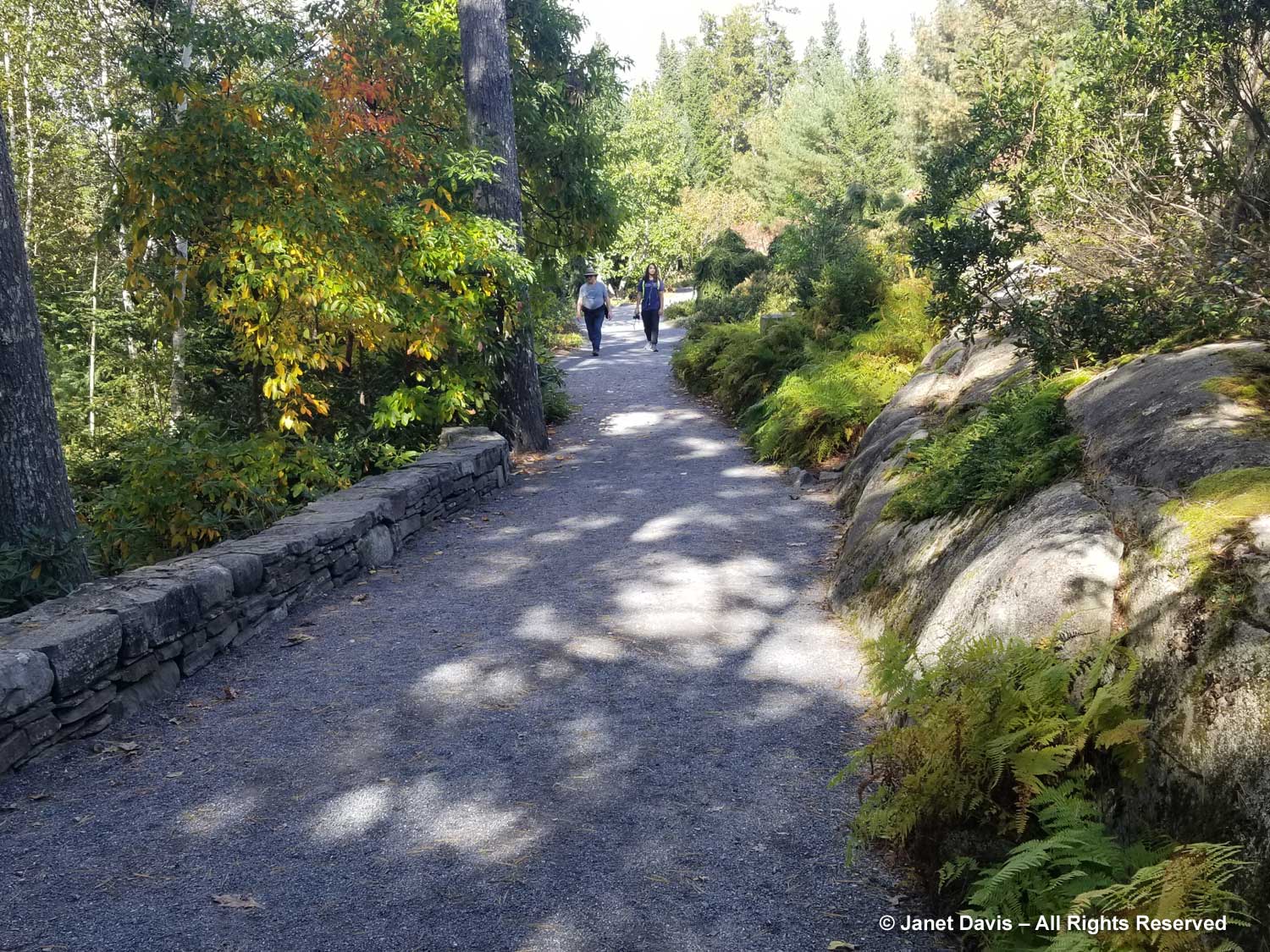
Since it was October 14th the leaves of many native trees and shrubs had started to change colour, including the sourgum (Oxydendrum arboreum) below.
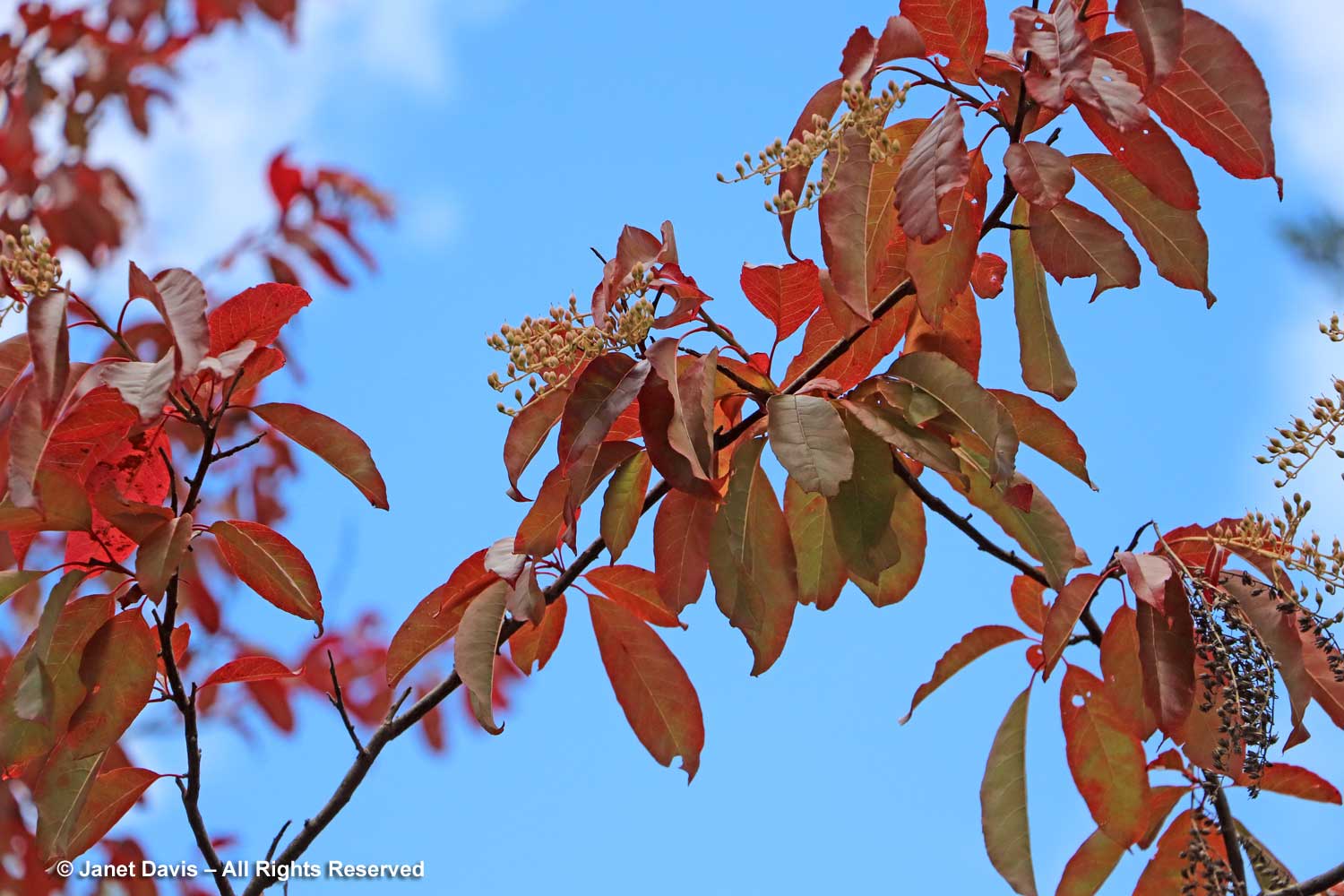
… and the hobblebush viburnum (V. lantanoides) was a pretty burgundy.
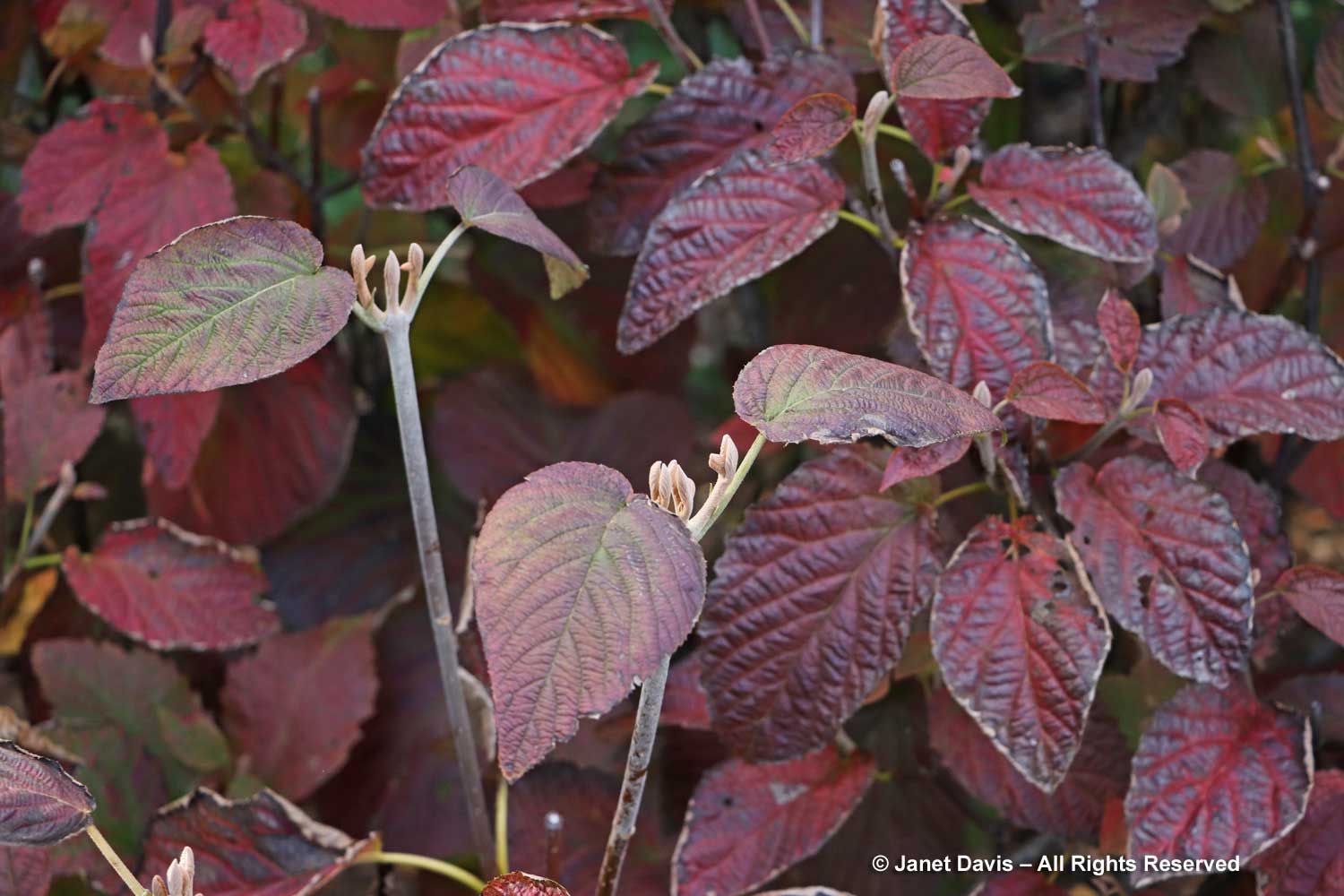
I am familiar with a lot of goldenrods, but hadn’t seen Short’s goldenrod before. This is Solidago shortii ‘Solar Cascade’.
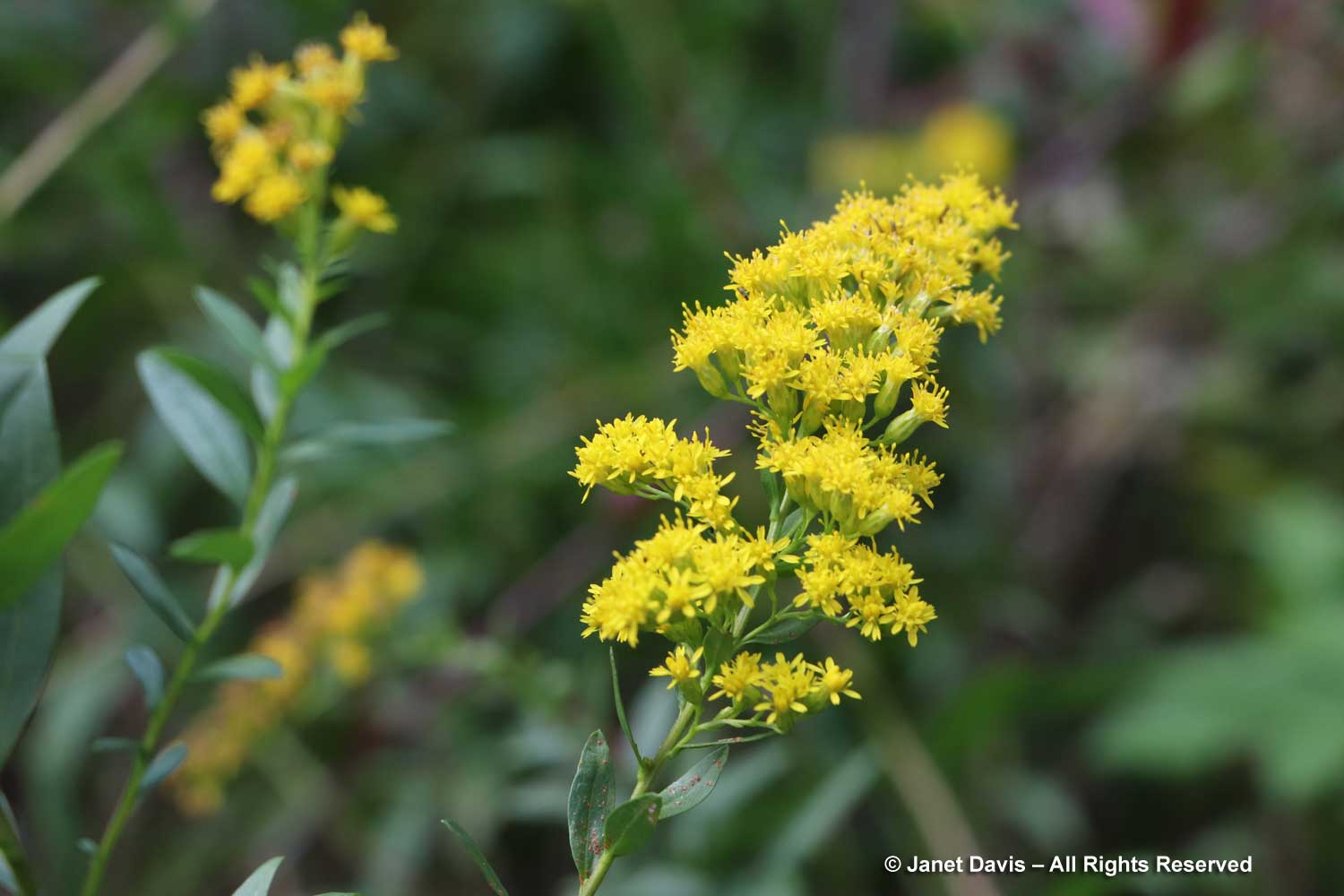
I went as far down as the Henry Richard sculpture ‘Glass Orb’, but since we had a long drive ahead of us later, I retraced my steps back up.
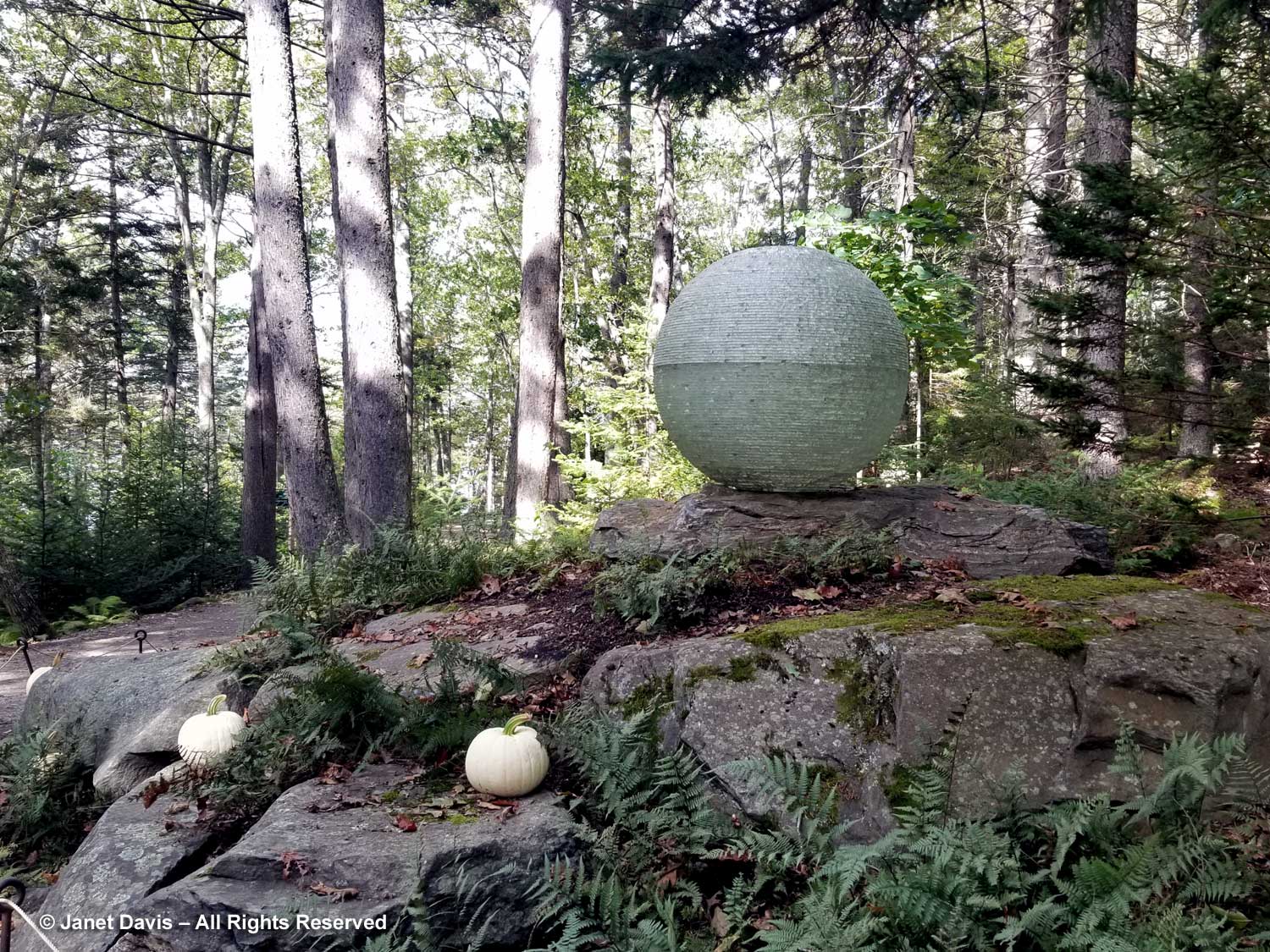
I had left Doug in the Vayo Meditation Garden, a quietly beautiful space on the hillside.
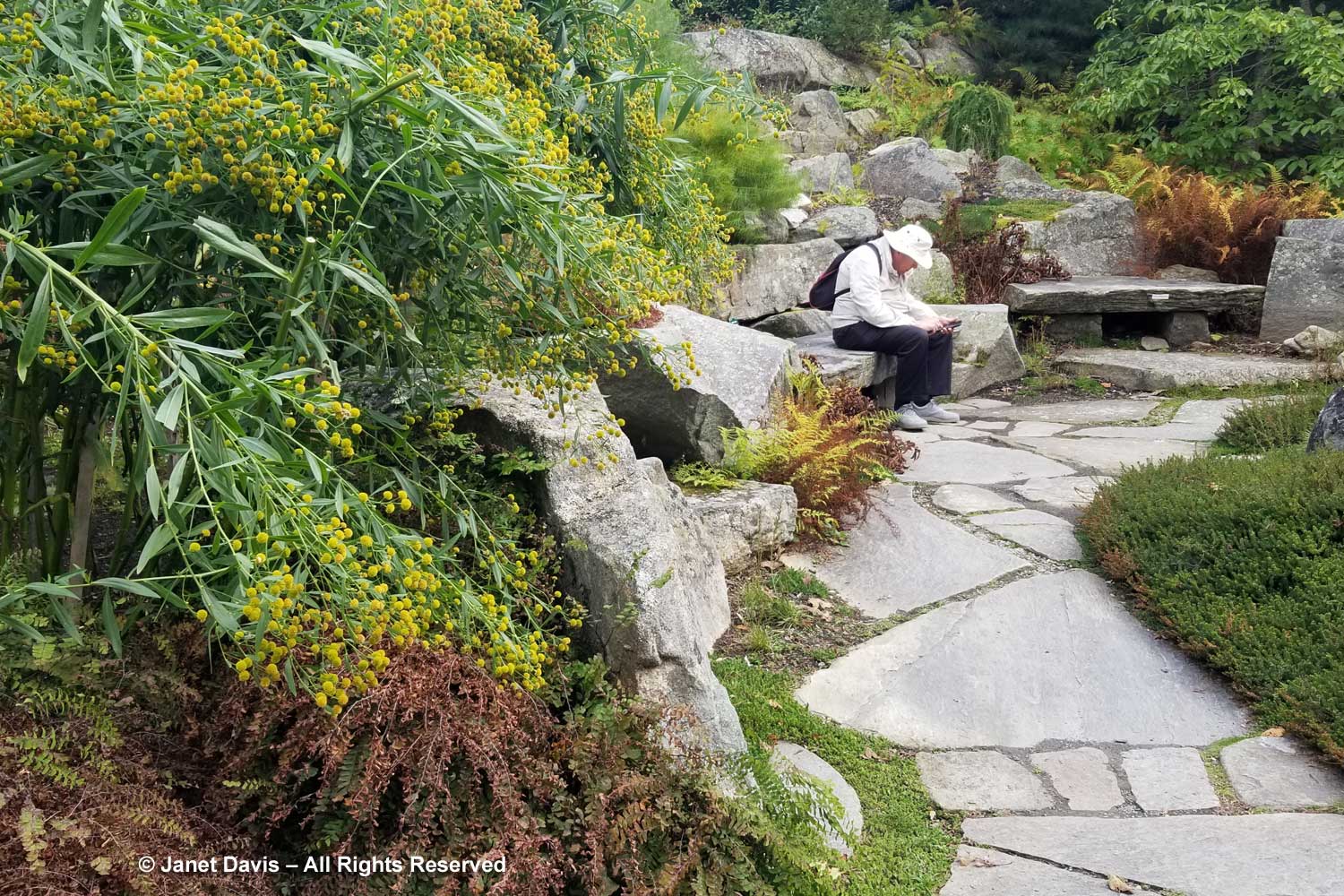
It wasn’t until a few weeks later that I learned the name of the tall perennial with the yellow pom-pom flowers blooming so late in the season. It’s Boltonia asteroides ‘Nally’s Lime Dot”, which was named for the late John Nally, the man who designed the famous flower garden at Wave Hill in the Bronx. Here’s my 2016 blog on Wave Hill.
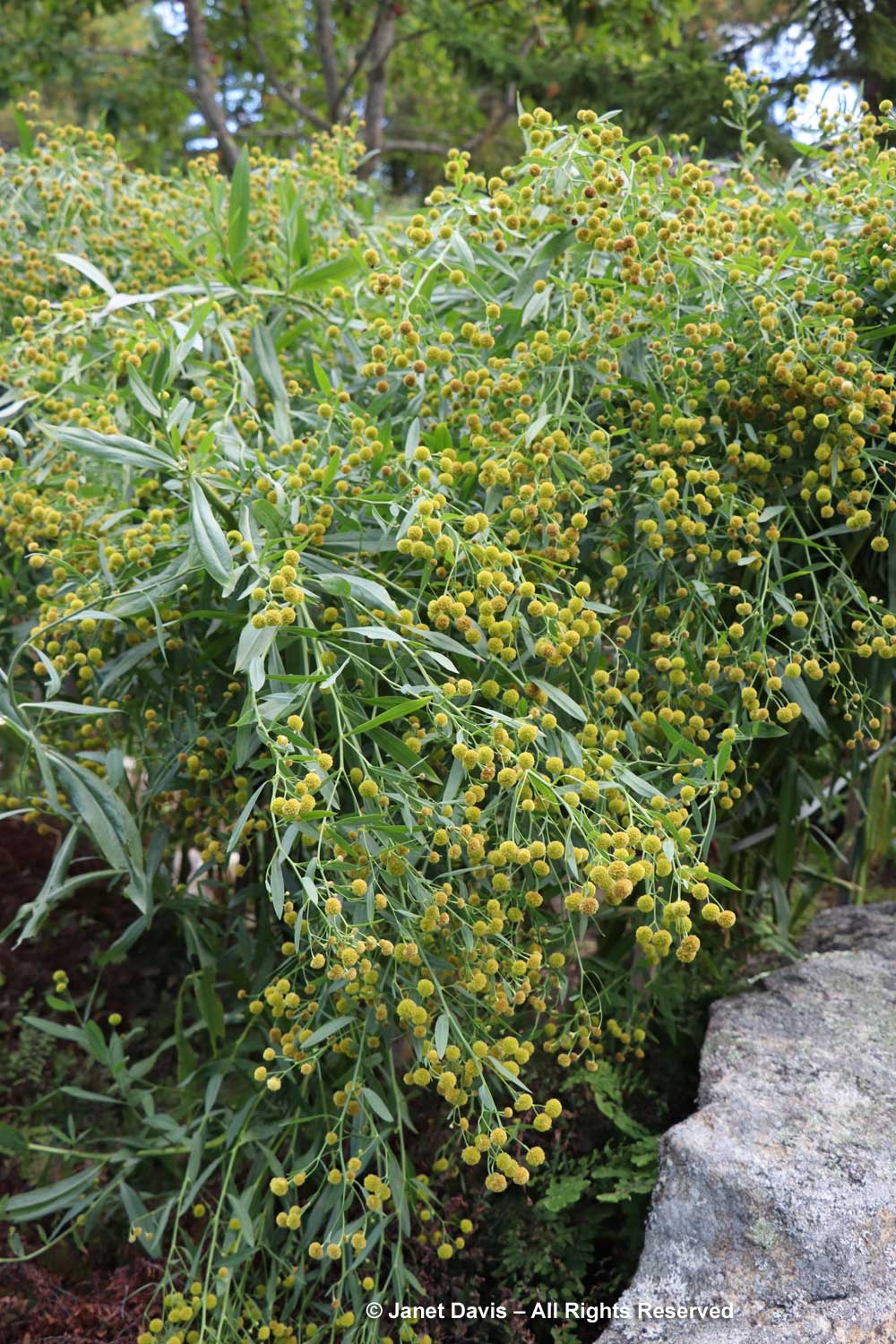
Then we headed back to the main garden campus above, stopping at the Rose Arbor which features a number of vines and elaborate plantings.
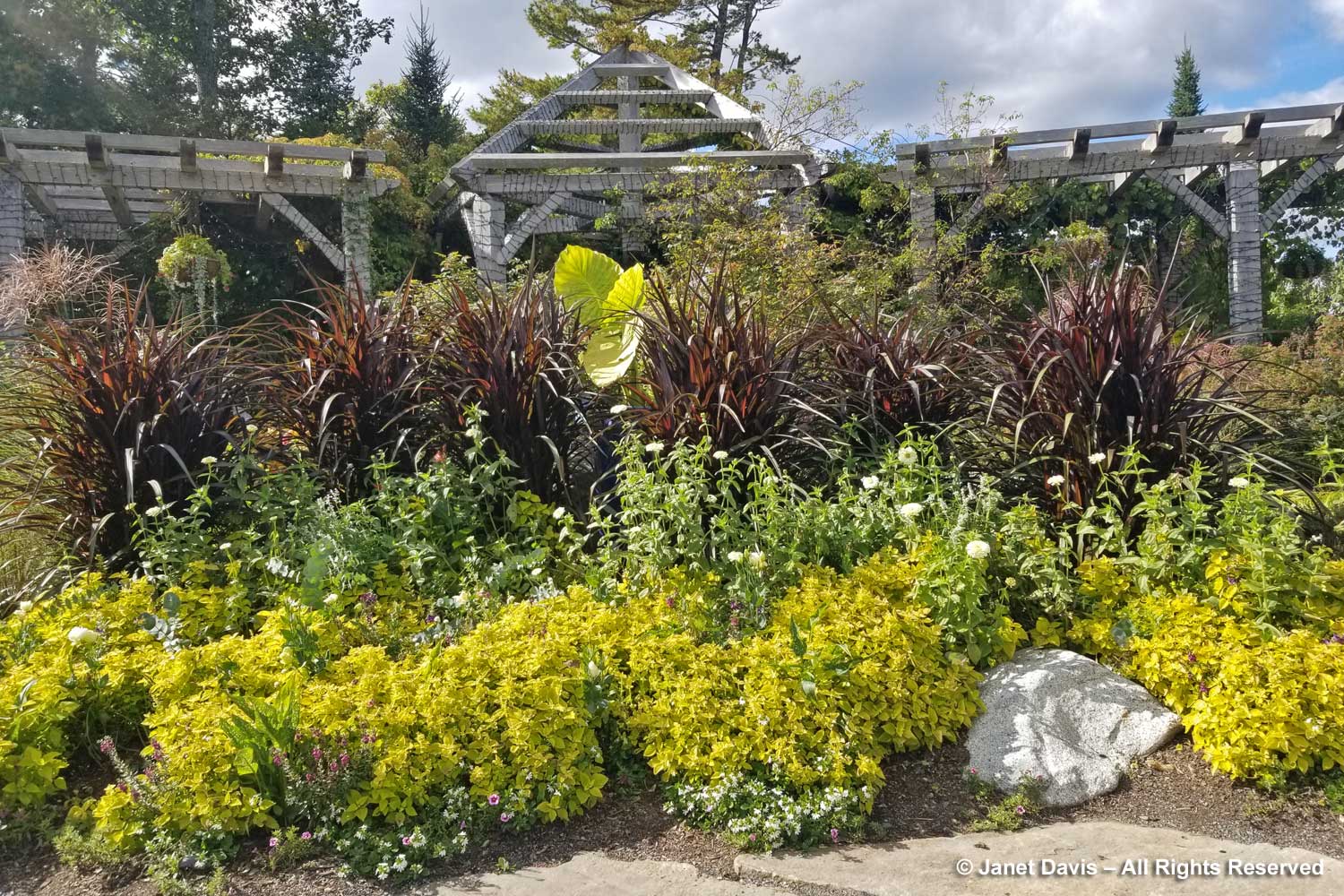
Though it was late in the season and the plants had declined a little, I could appreciate the various containers used liberally throughout CMBG.
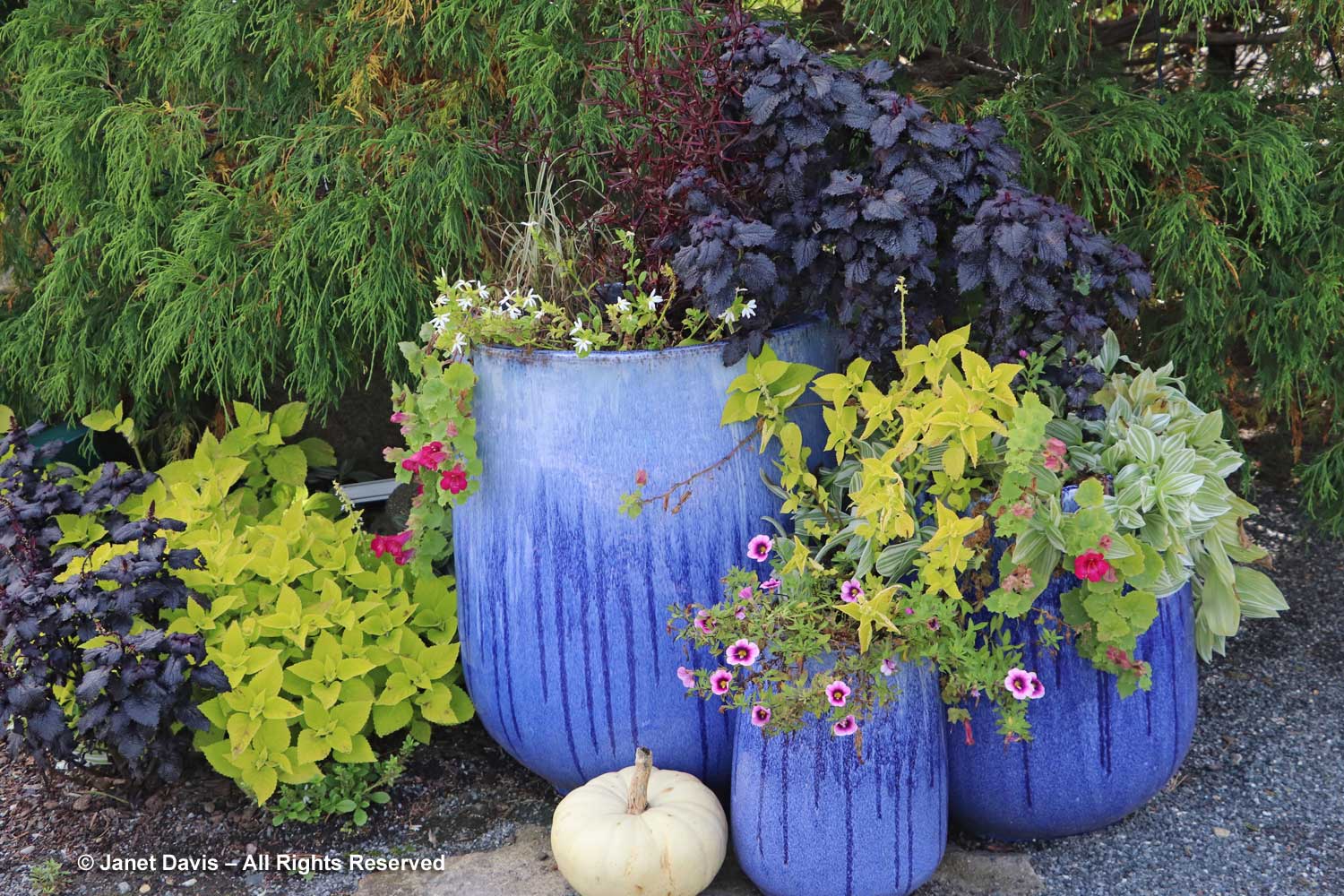
I liked the way pink-flowered Asarina scandens had been used as a trailer in the pot below.
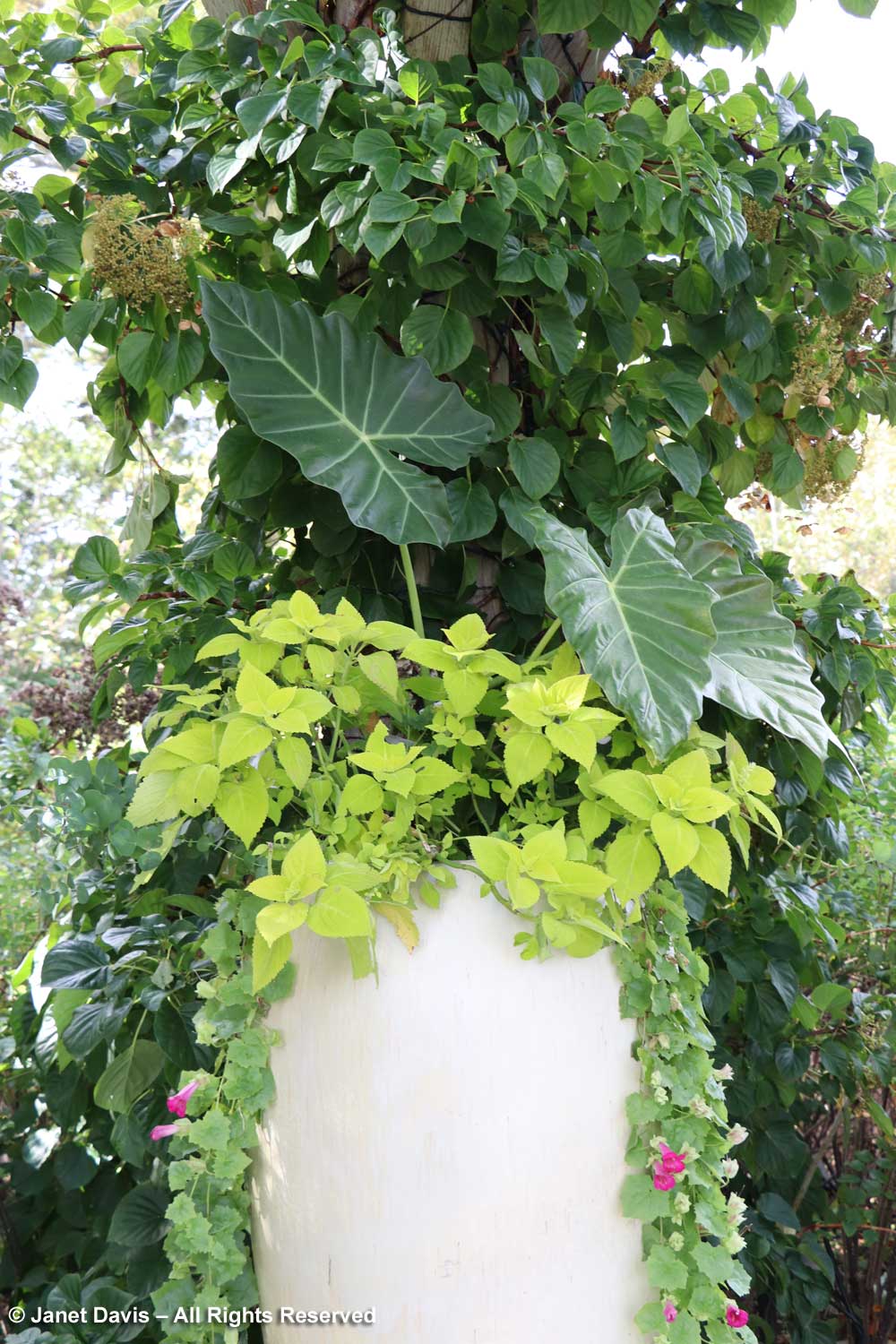
Walking through the garden, there were reminders of summer in the seedheads amidst flowering grasses.
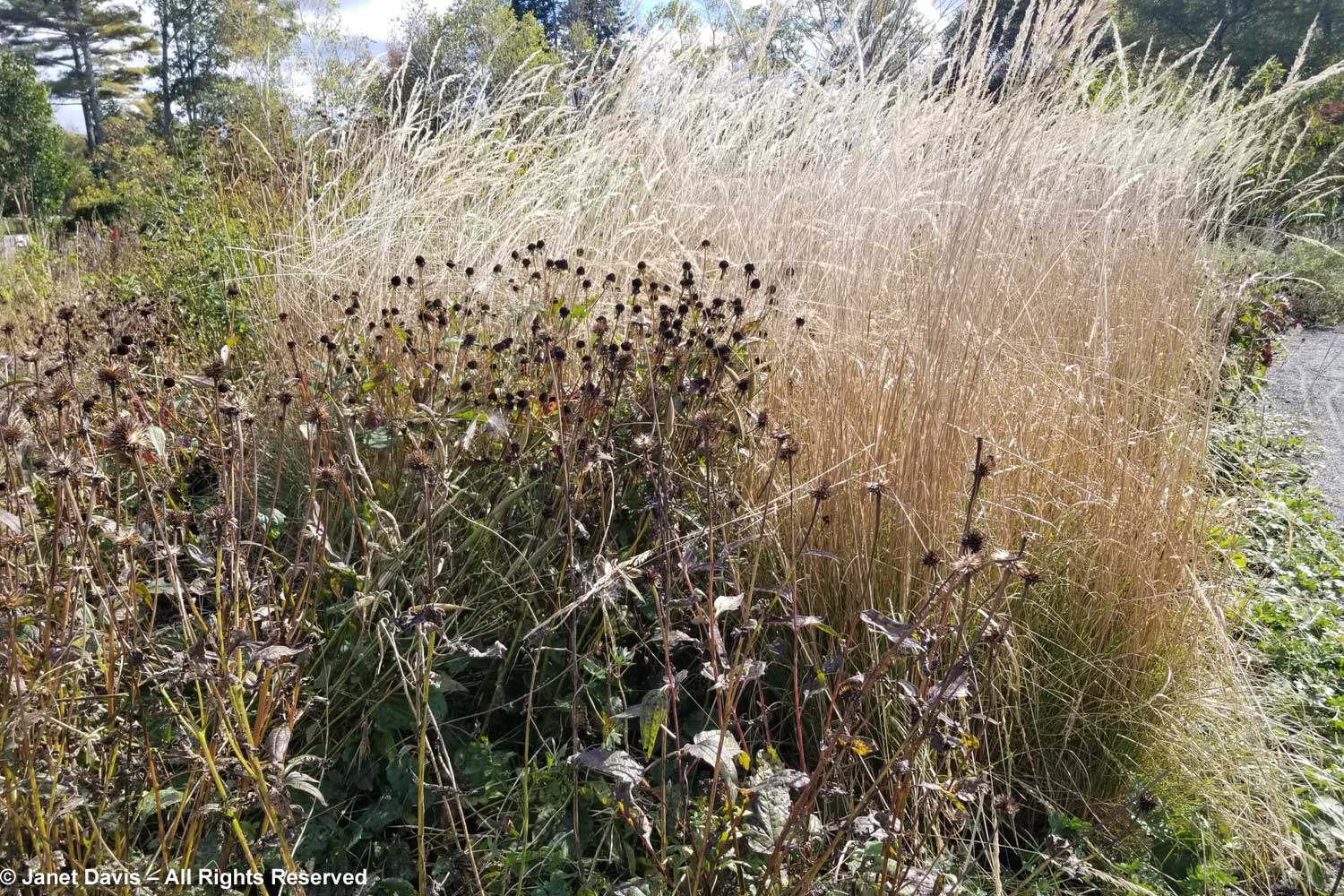
‘Sedum ‘T-Rex’ was putting on a spectacular show!
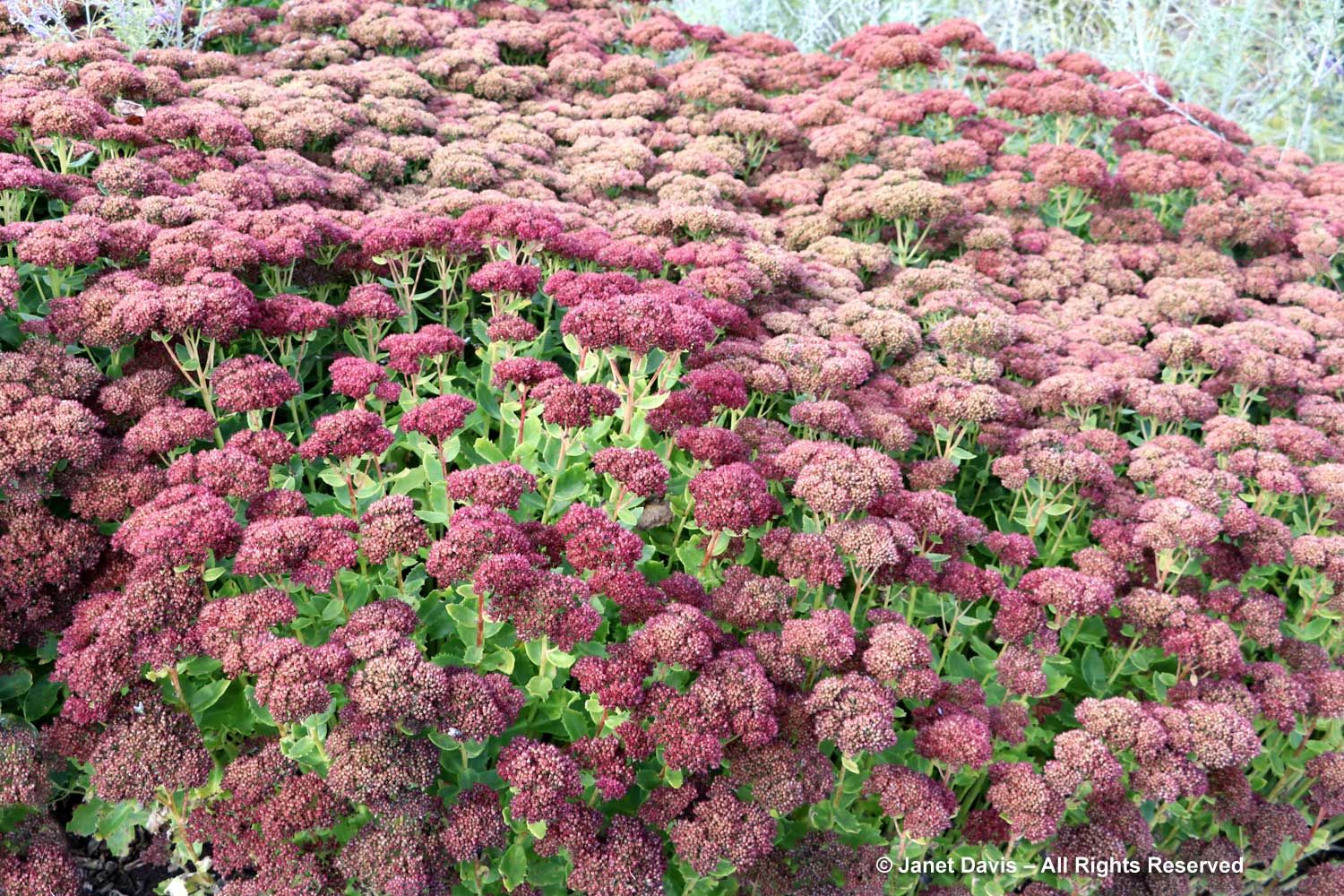
And native little bluestem (Schizachyrium scoparium) had taken on its reddish autumn cast.
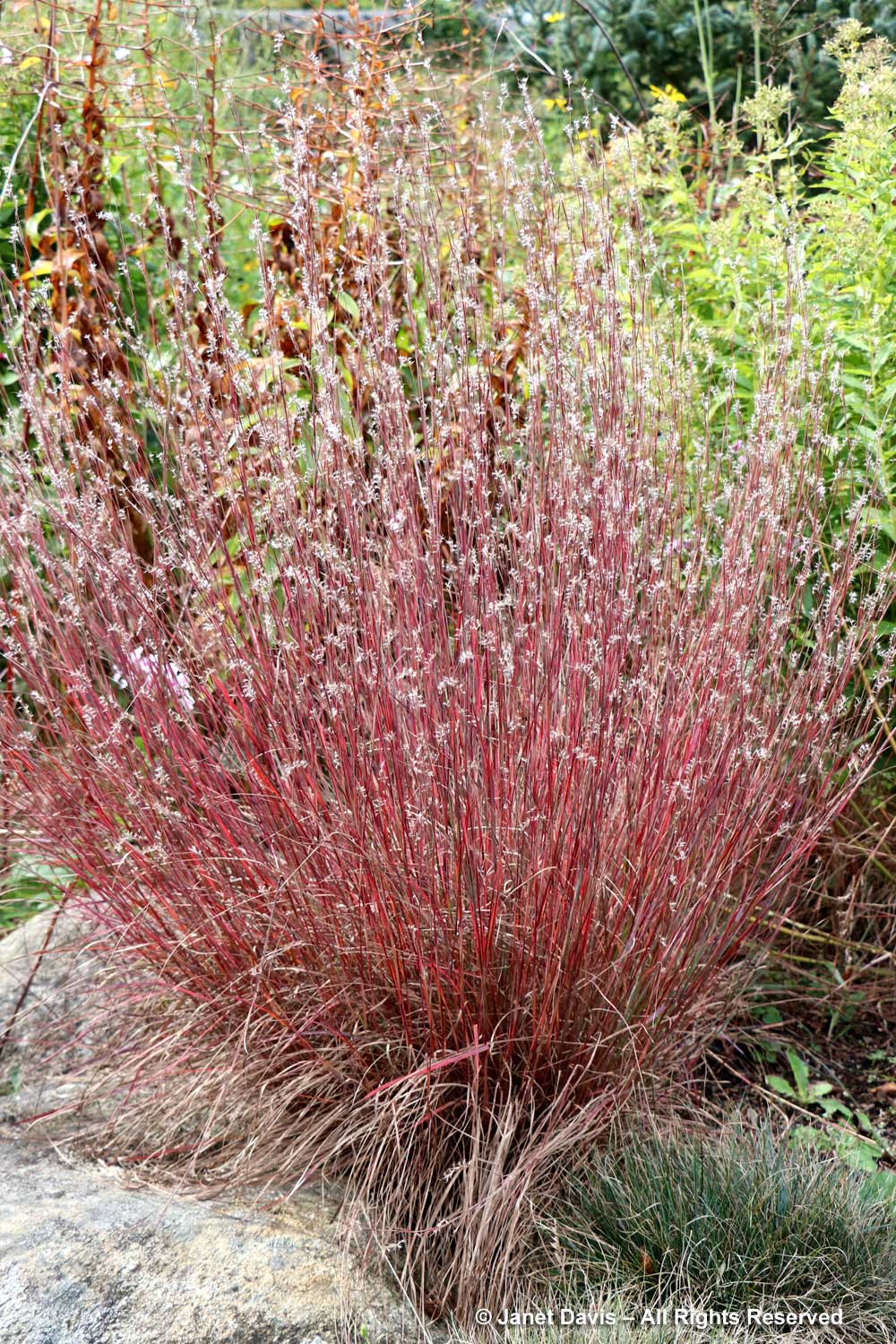
Possumhaw (Viburnum nudum ‘Longwood’) had also turned a deep rose-red for fall.
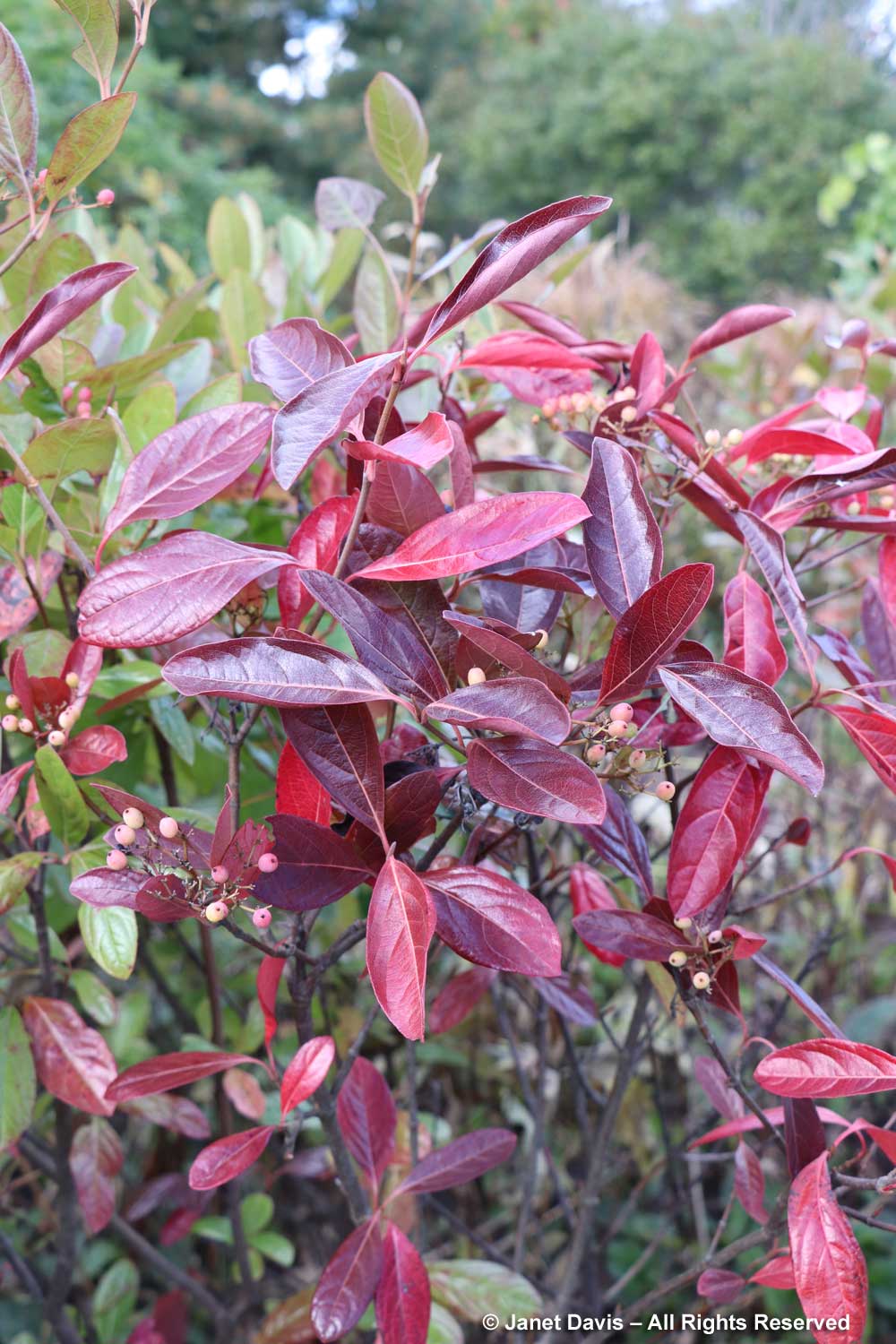
I thought I had photographed most of the trees with prominent exfoliating bark in my career, but no! Here is Chinese hazelnut (Corylus fargesii).
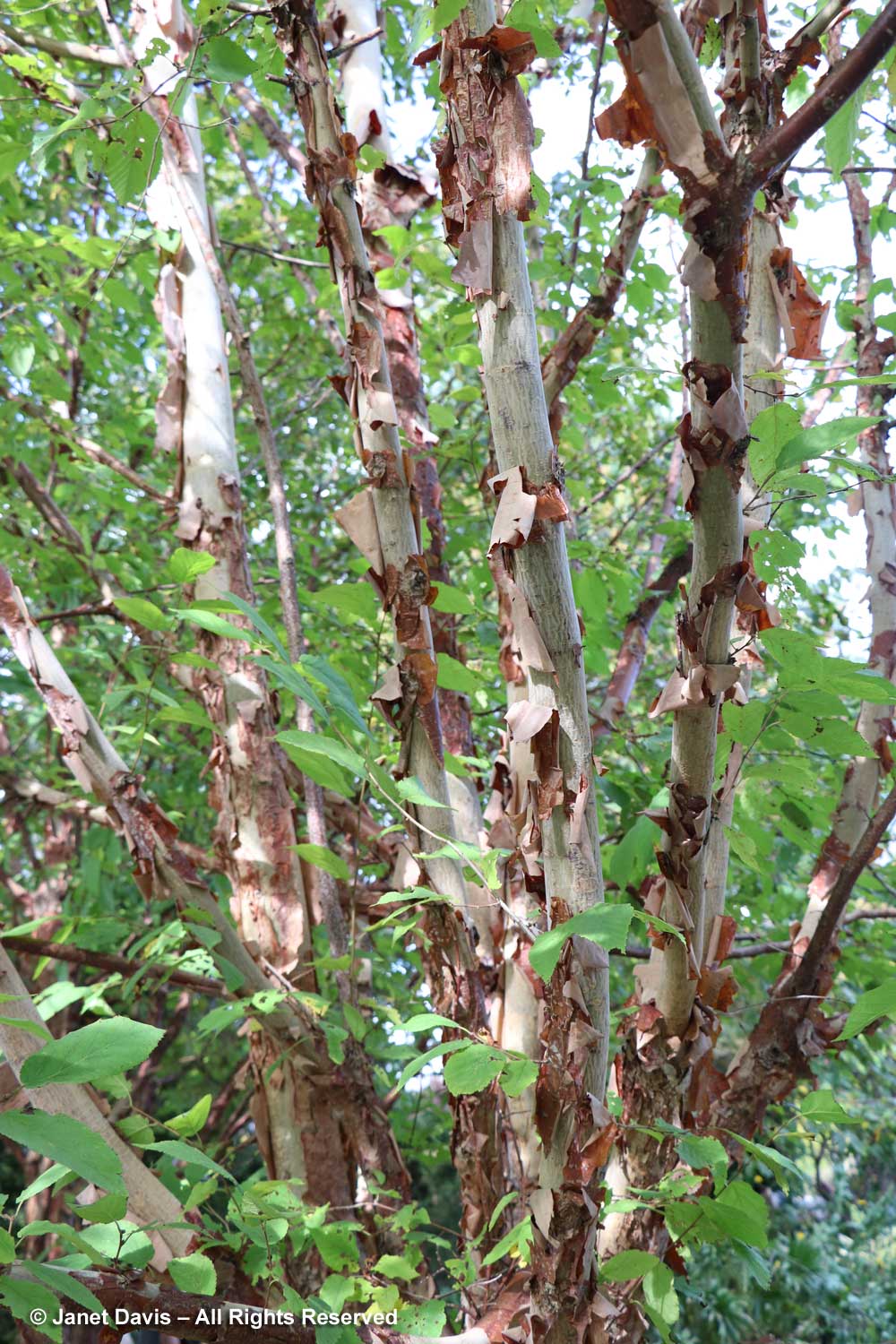
I peeked quickly into the Burpee Vegetable Garden but I really wanted to visit…..
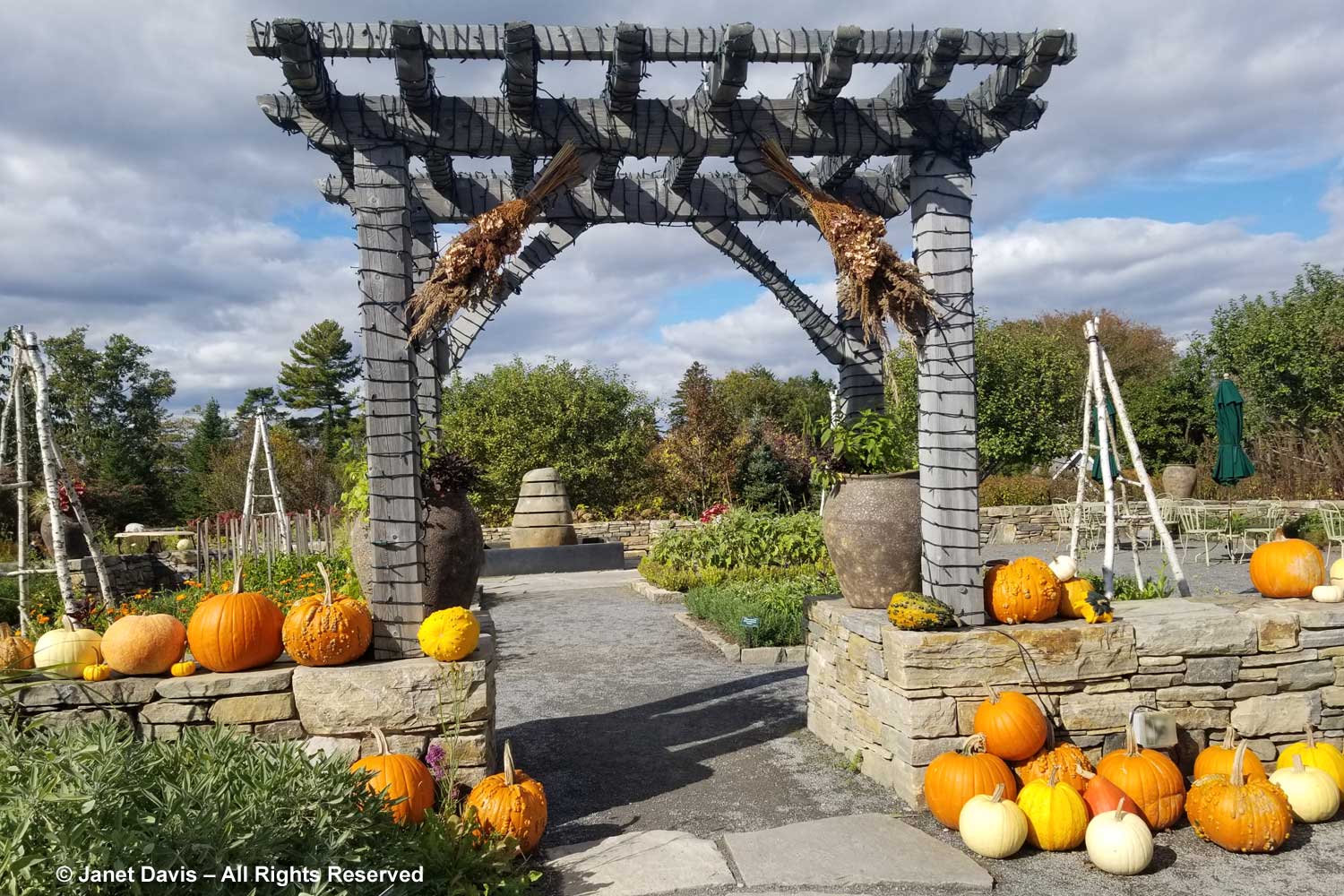
… the spectacular Bibby & Harold Alfond Children’s Garden. The entrance, below, featured fun boulders called “Spraying Whales” by sculptor Carole Hanson shooting surprise jets of water at visitors…..
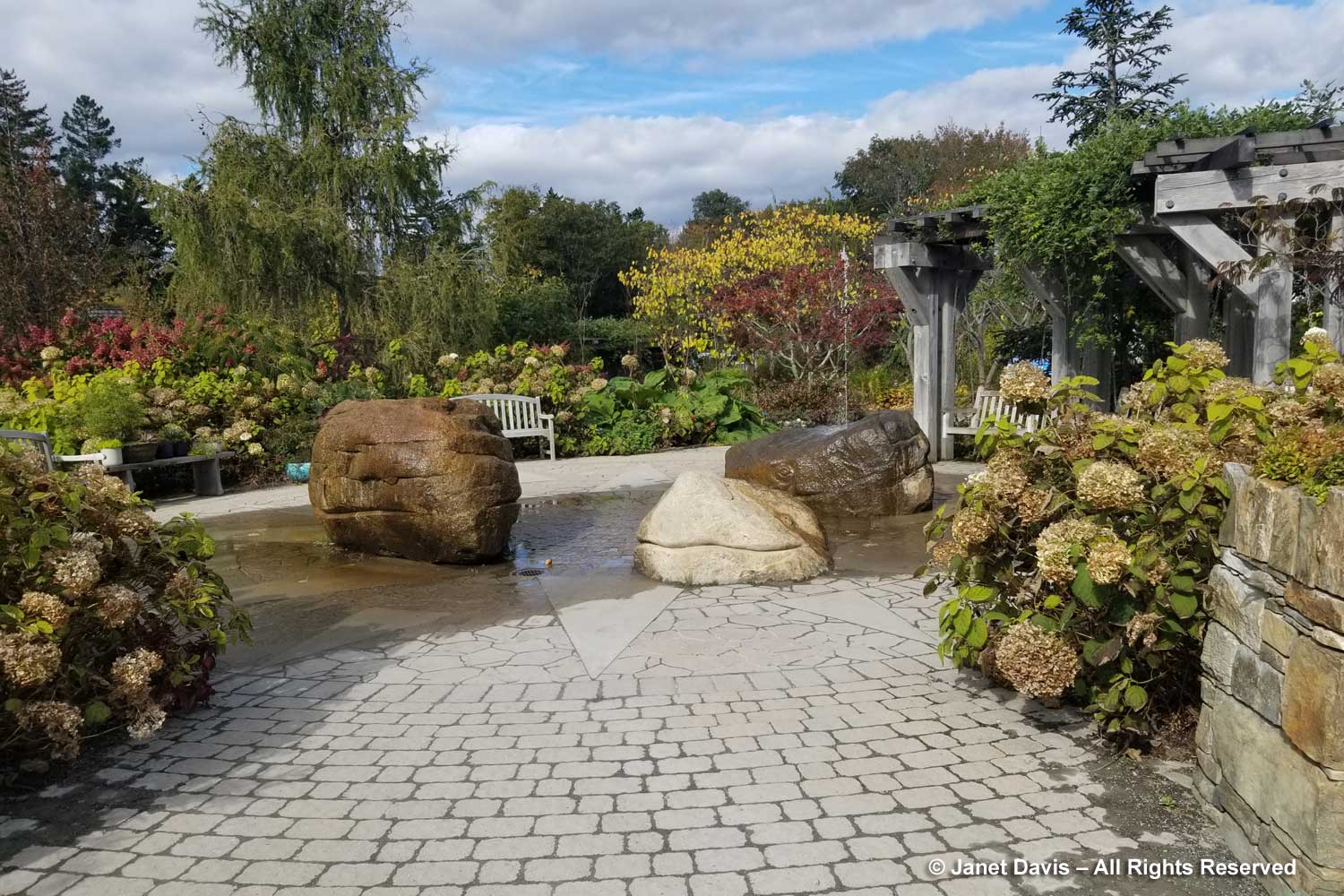
….and I thought of how much fun this would be for little kids in summer.
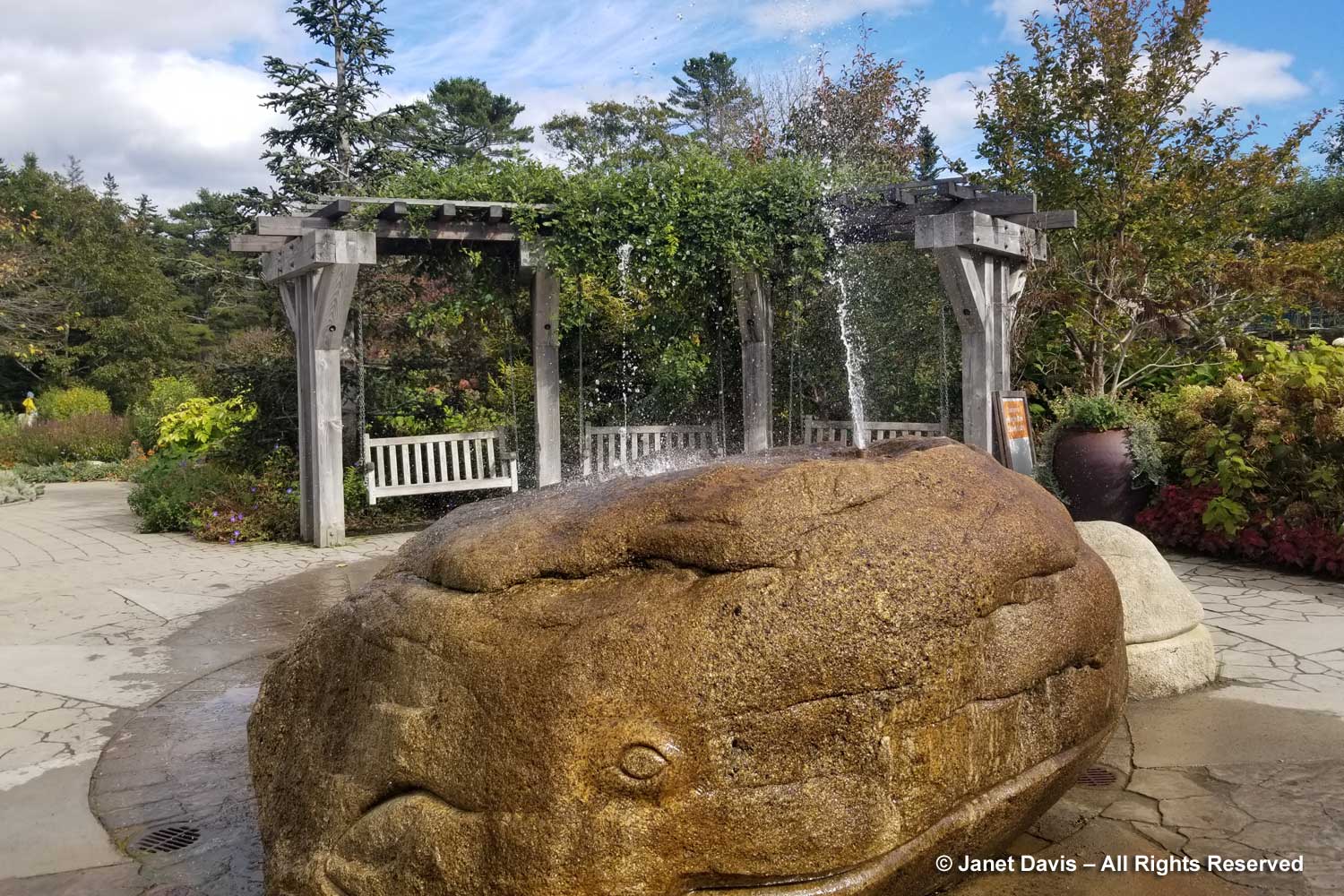
Opened in July 2010, the garden was made possible by a gift from the Harold Alfond Foundation. Mr. Alfond made his fortune mainly in shoes, first the Dexter brand, then brand names for other firms. I liked this speech given at the opening by the foundation chairman:
“In the summer of 2007- the last summer of his remarkable life, Harold Alfond visited the original gardens at the suggestion of his good friend Larry Pugh. Harold was 93. Together with son Ted and his wife Barbara, Harold saw the beauty of this place then and imagined what more it could be for the state he loved and its children. Harold’s life passion was athletics and children. Bibby Alfond’s passion was children and gardens. And so at the age of 93, with Bibby no longer at his side, Harold was drawn to the vision of what we see here today as he reflected on how his life had been enriched by Bibby and her gardens – gardens which had graced their summer home for decades. Moved by the memory of Bibby and her passion, and with Harold’s sentiments in our hearts, we knew the Children’s Garden was deserving of foundation support. And we felt pride and perfect balance when it was agreed the garden would be named the Bibby and Harold Alfond Children’s Garden. And not vice versa.”
The Chairman went on to quote from a famous children’s book by a Maine author illustrated on the sign: “As Miss Rumphius’ father admonished her to do, you have done ‘something to make the world more beautiful’.”
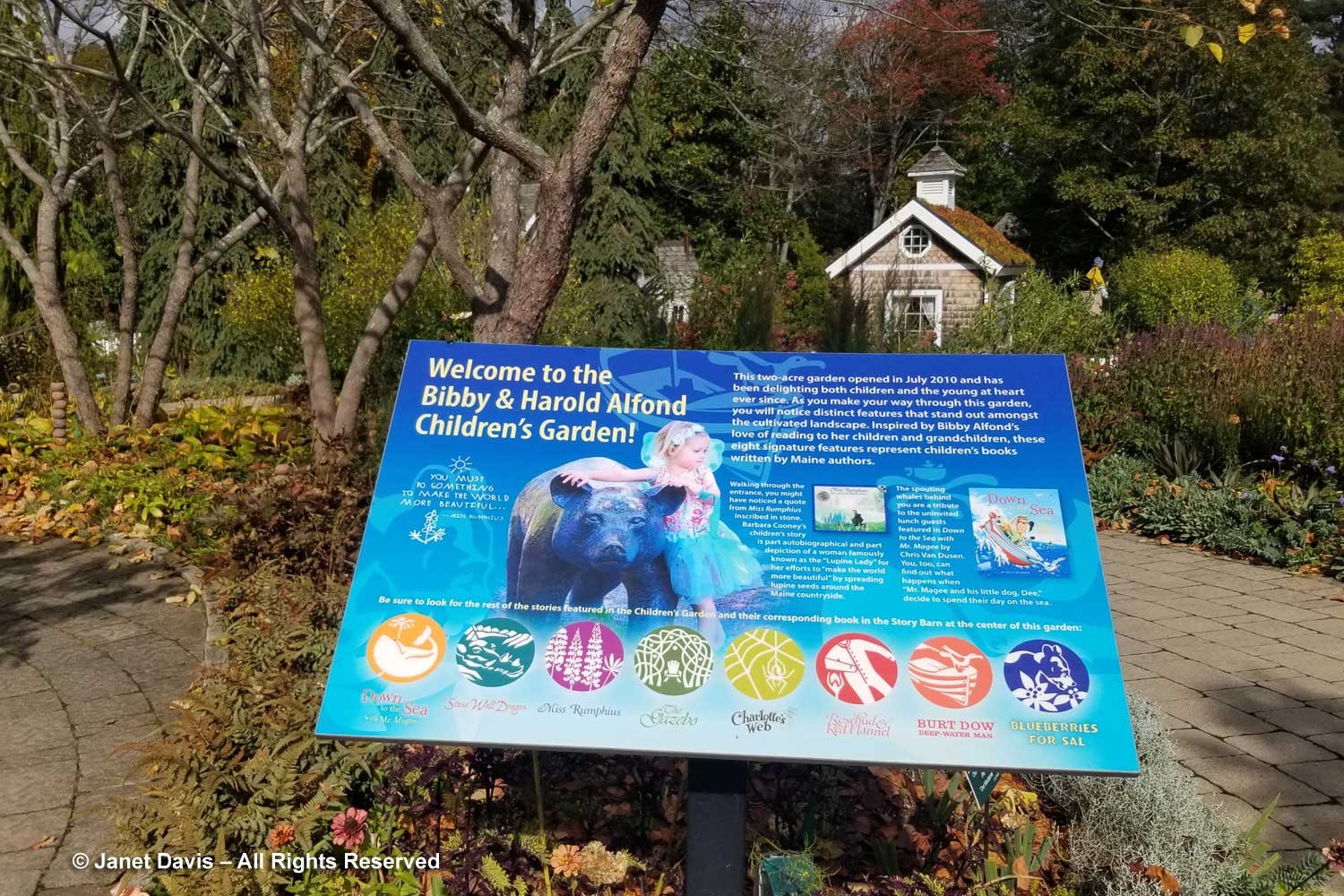
I especially loved seeing Miss Rumphius on the sign because it’s a favourite children’s book of mine, a 1982 award-winner by Maine author Barbara Cooney. Here I am reading it to my granddaughter Emma. As an aside, CMBG is careful to note that visitors should endeavor to grow Maine’s native sundial lupines (Lupinus perennis), rather than the non-native and invasive west coast lupines (L. polyphyllus) in the book.
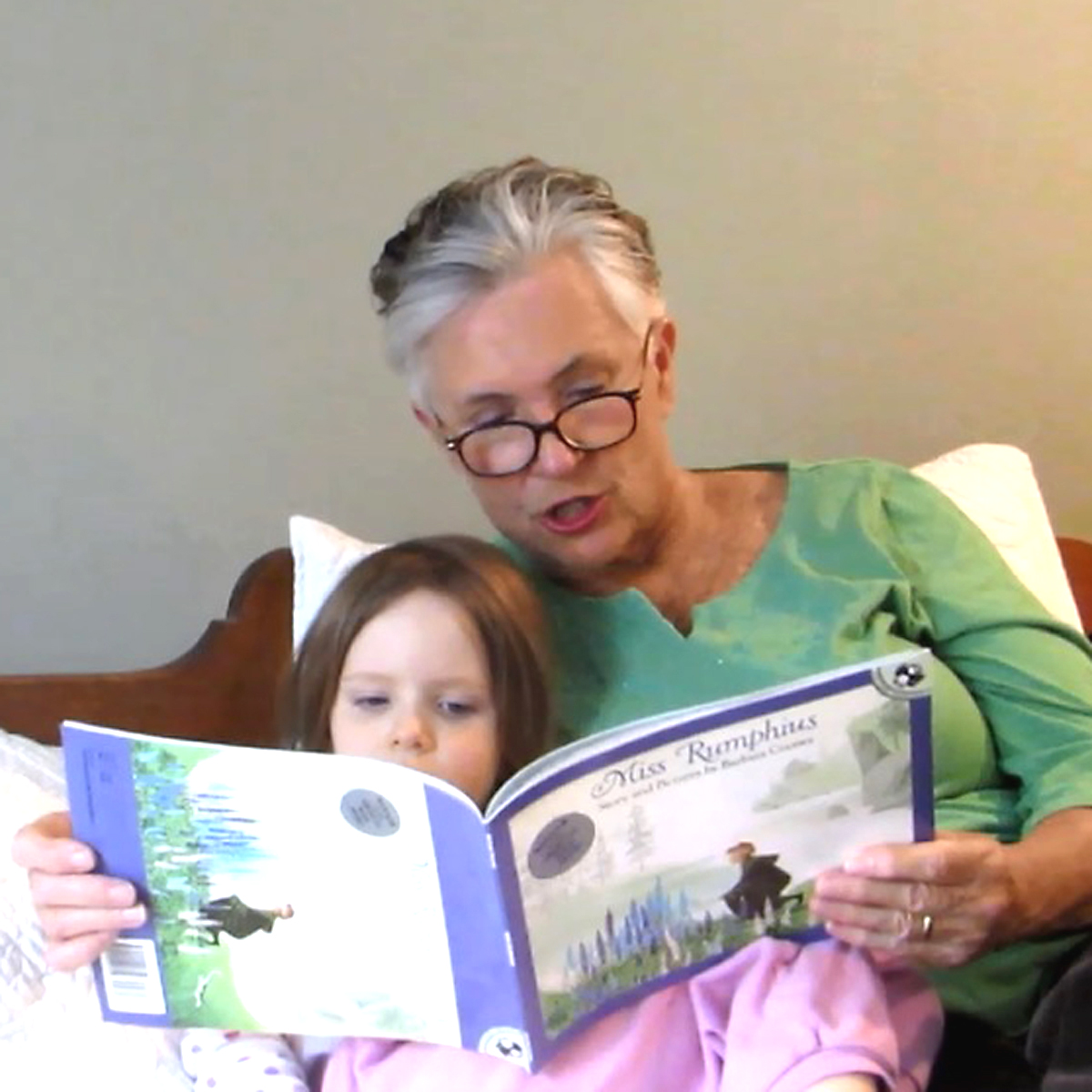
Designed by landscape architect Herb Schaal of AECOM, Inc. who has designed over 20 unique children’s gardens in the U.S., the garden is full of surprises and abundant references to other Maine children’s books, including ‘Blueberries for Sal‘. My grandkids would adore the maze, below.
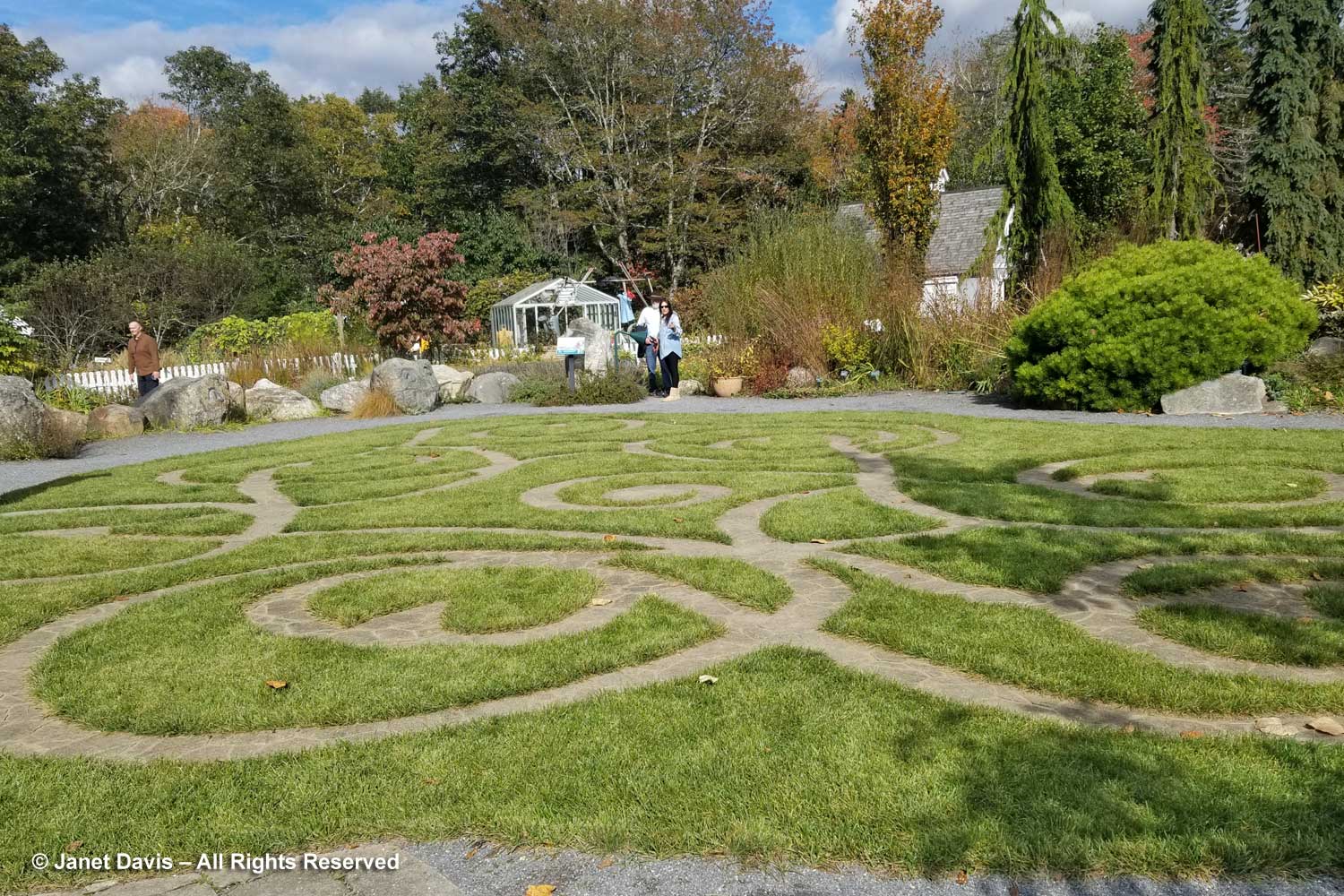
The Keeper’s Cottage features a green roof and a pretty windowbox. And it’s clearly on the radar of this little one.
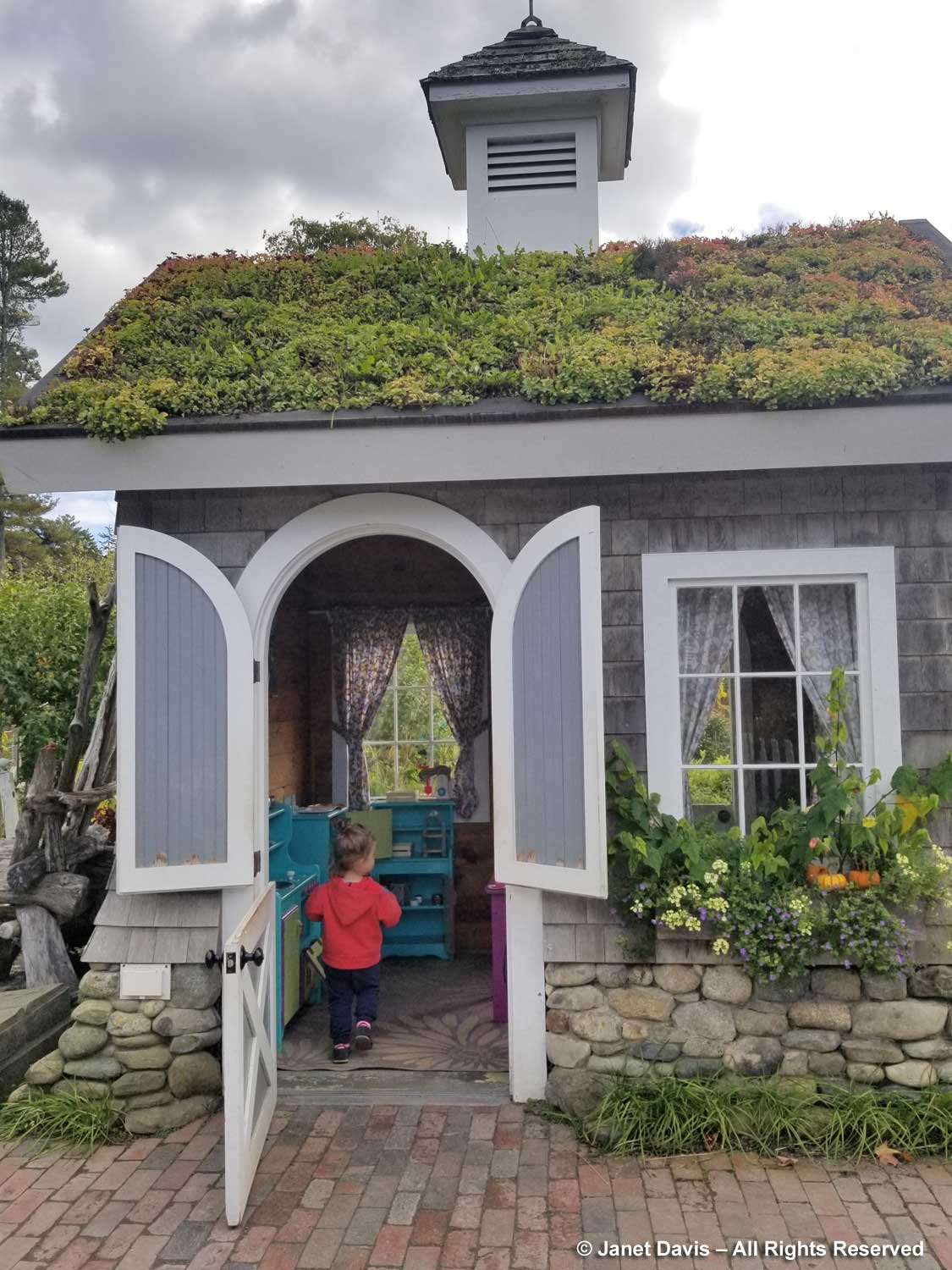
I spotted the Liatris seedheads and thought how wonderful this garden would be in mid-summer, since it was still looking spectacular in October.
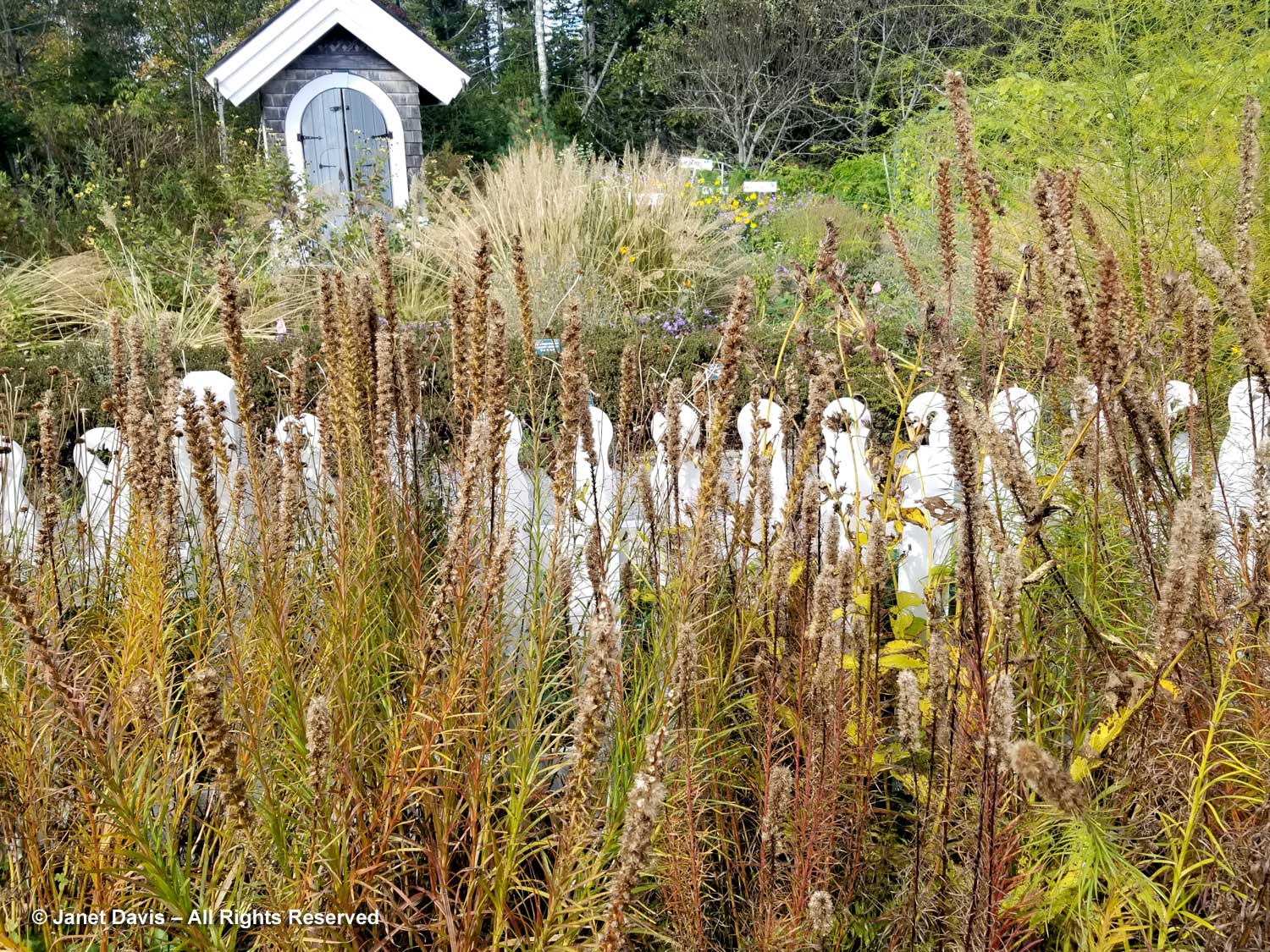
Who doesn’t know about Beatrix Potter’s “Mr. McGregor’s Garden” and that wascally wabbit? The greenhouse behind is actively used during the season.
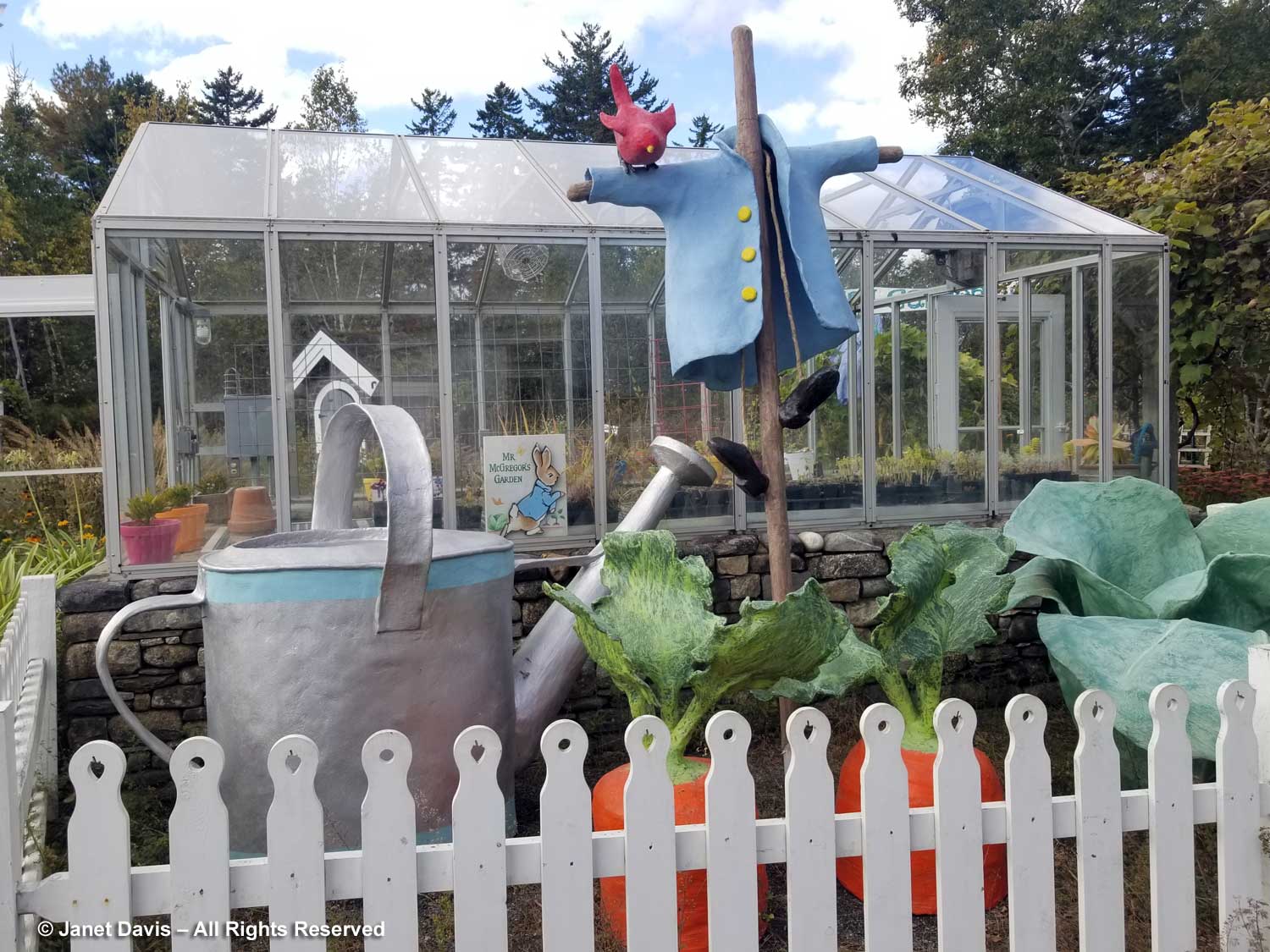
Perhaps the beans and beets had already been harvested? In any case, this garden was full of colour.
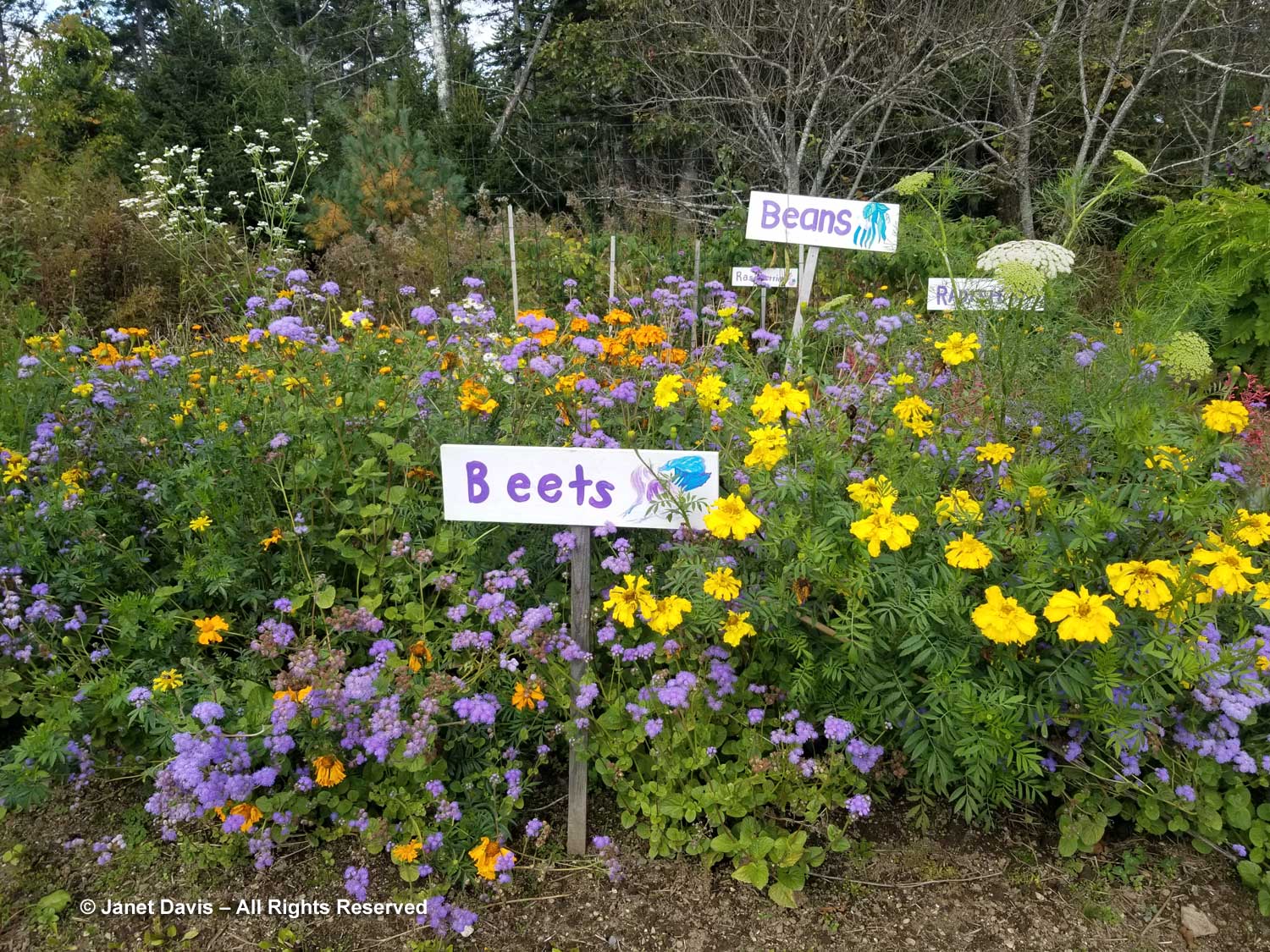
Millstone seats with built-in planters! What a great idea for little kids.
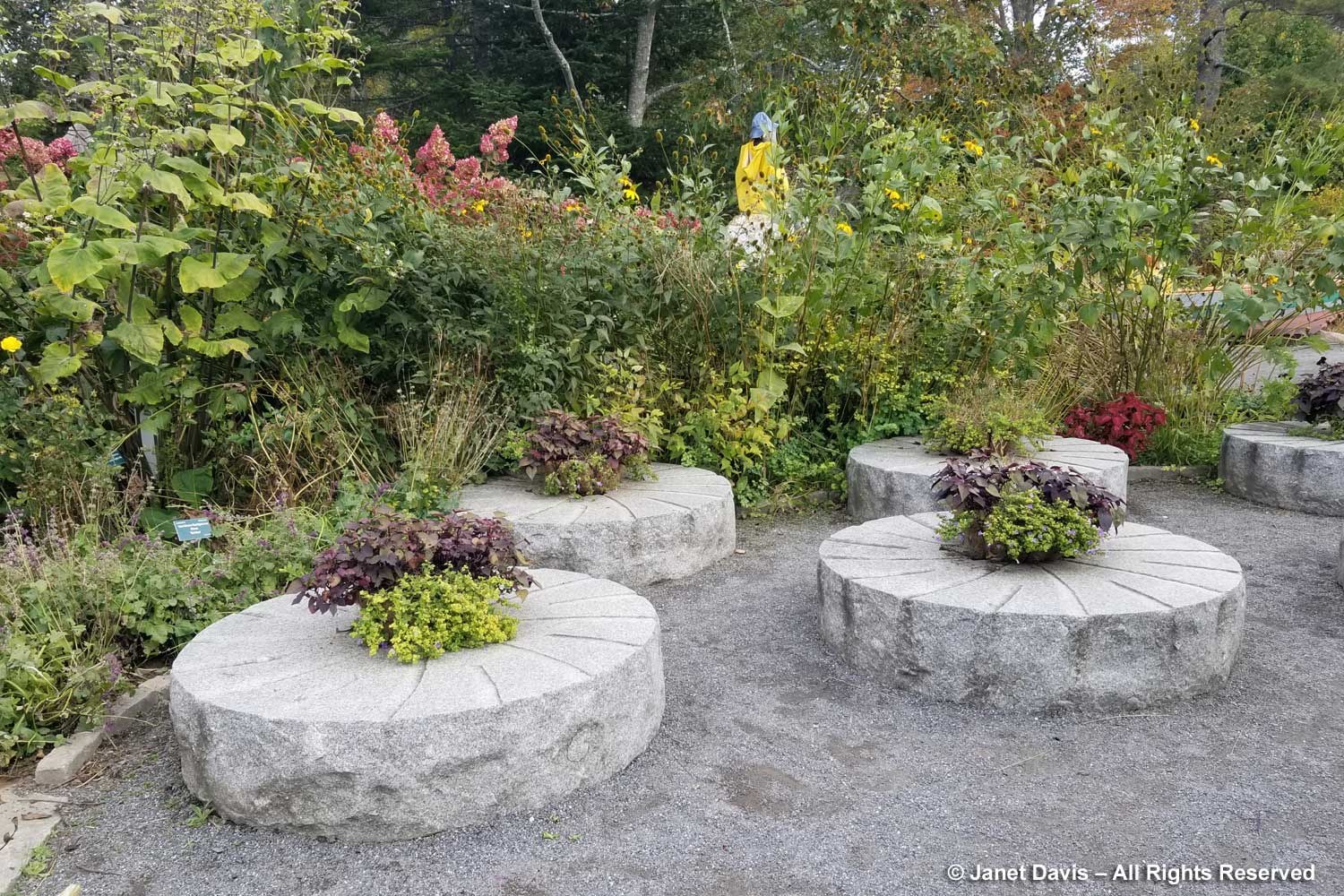
There were attractive containers in the Children’s Garden too.
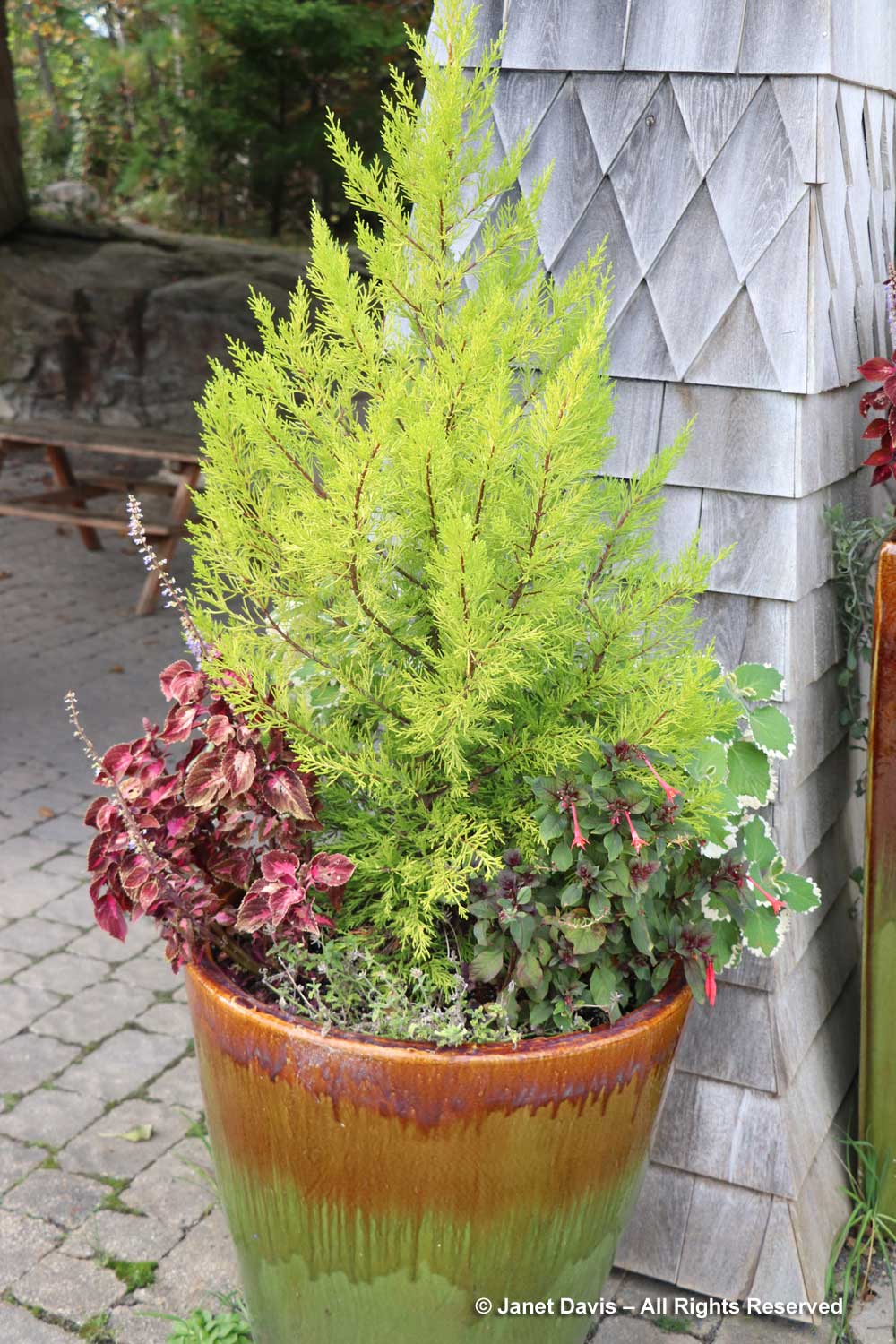
Colourful coleus was in flower beneath a rain-chain. The unusual silver trailing plant is Arctotis auriculata.
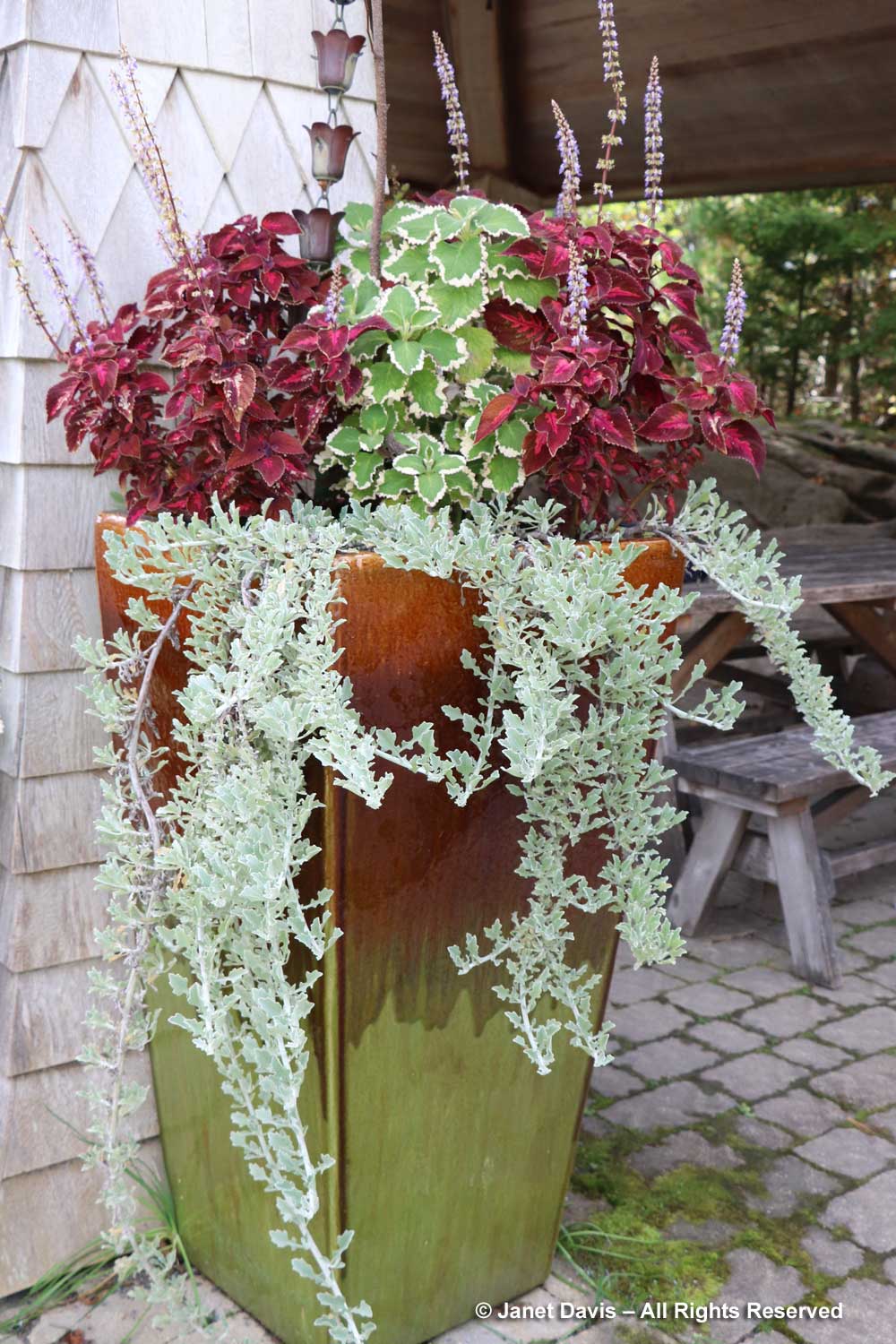
One container featured a dark-leaved mimosa, Albizia julibrissin ‘Summer Chocolate’.
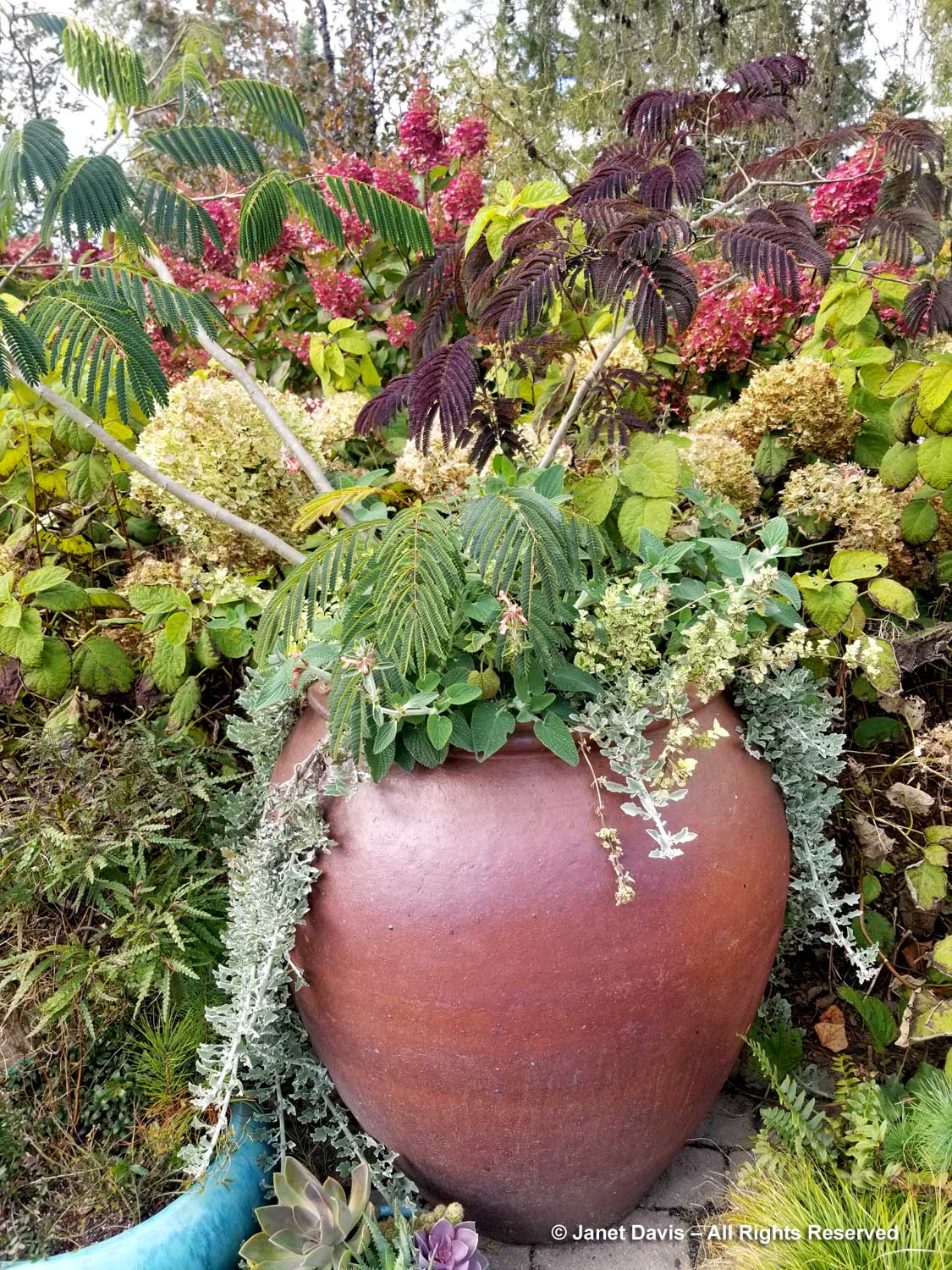
A flower bed was full of colourful plants, including many choice succulents……
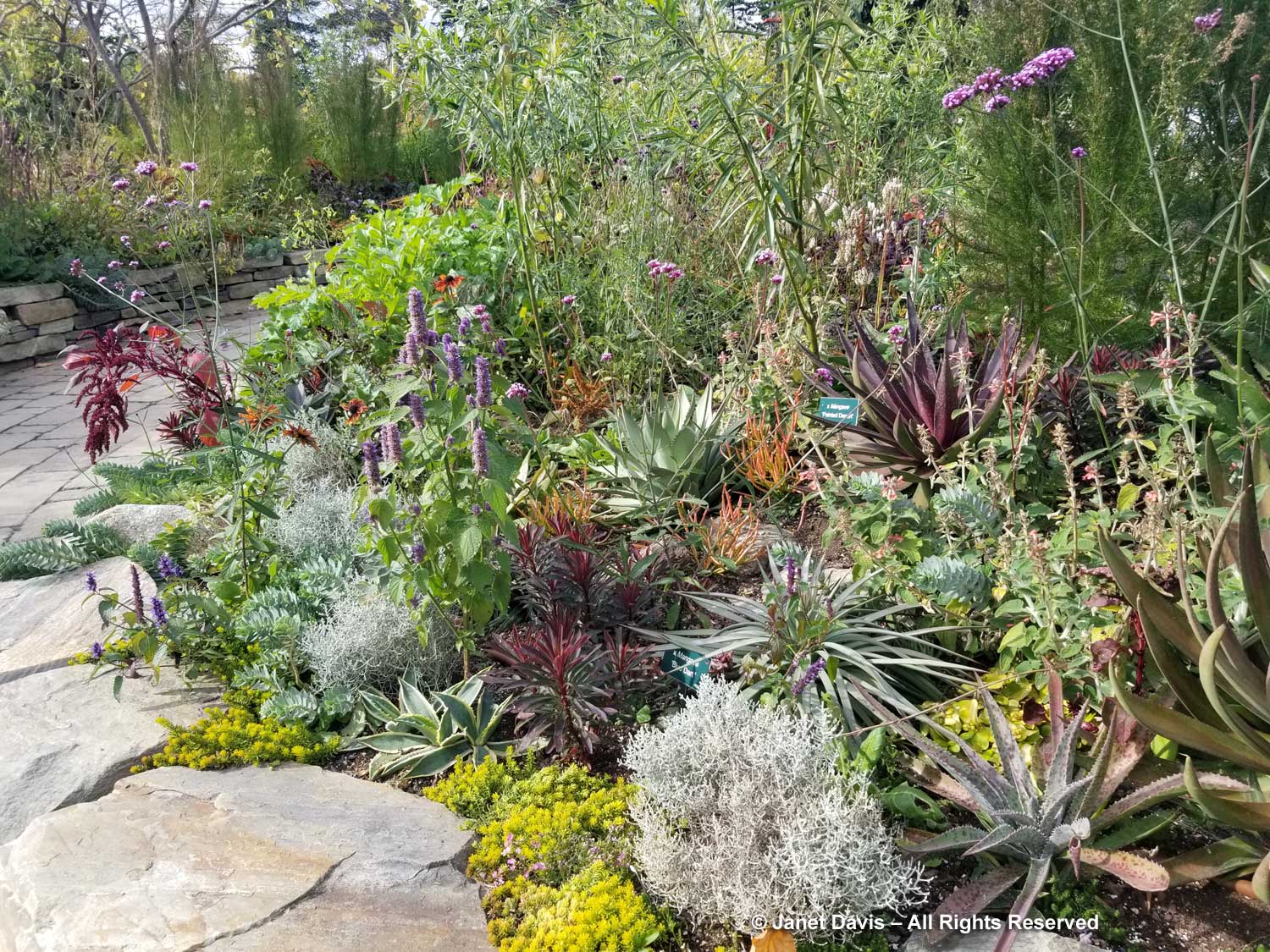
… such as Mangave ‘Lavender Lady’.
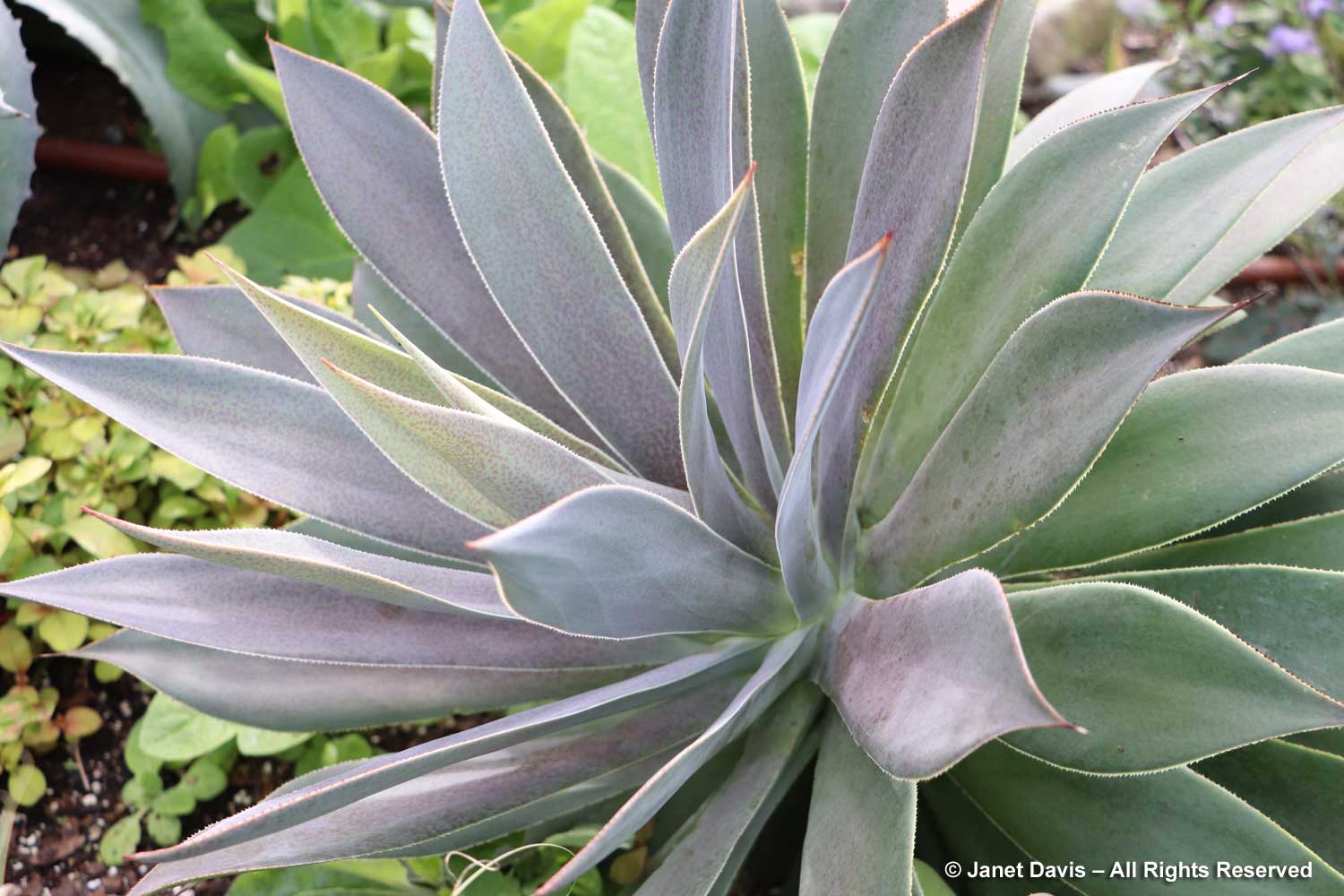
A chicken coop is part of the fun.
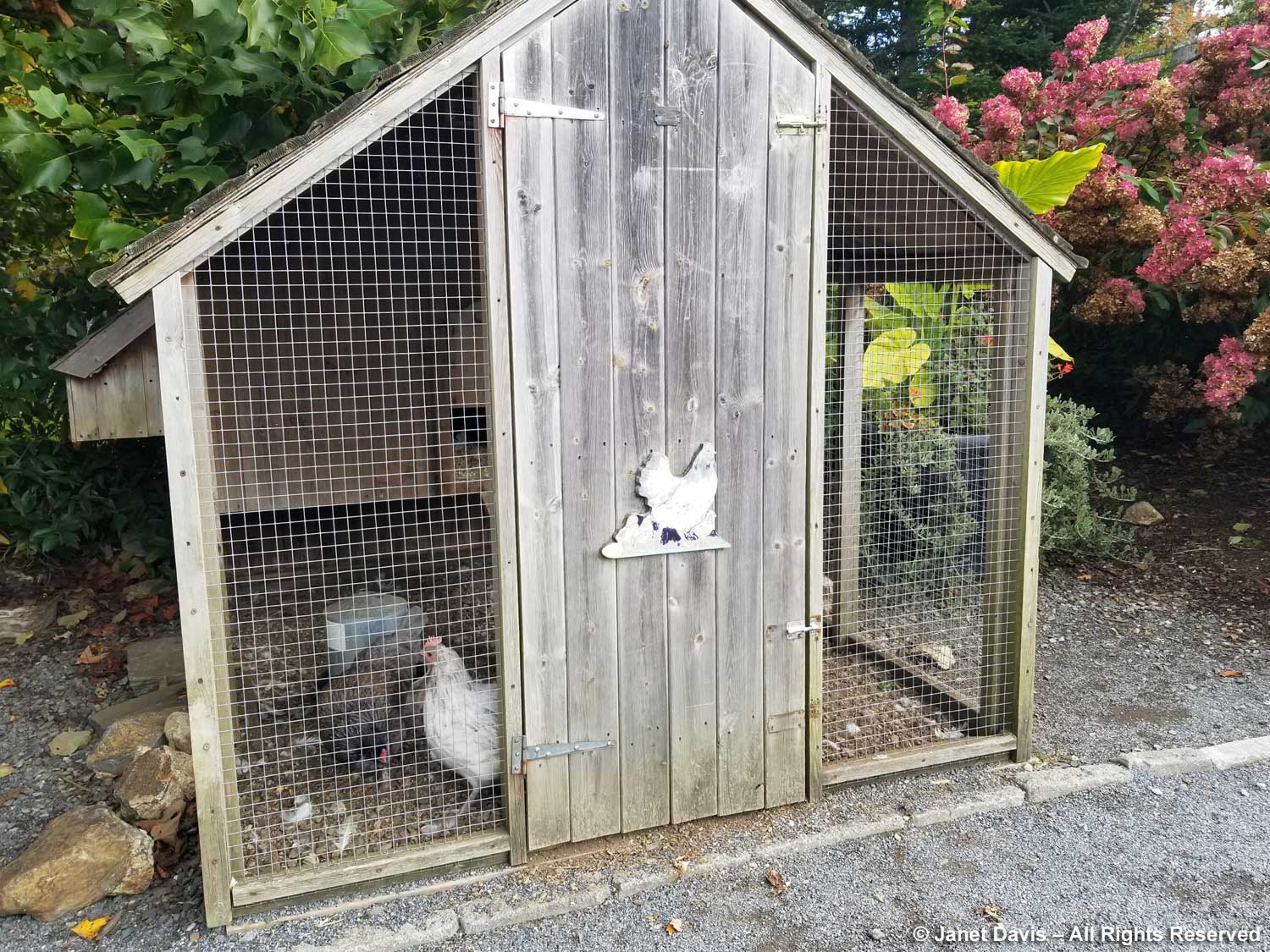
And the Story Barn is filled with enticing books for kids and sweet little stools for reading.
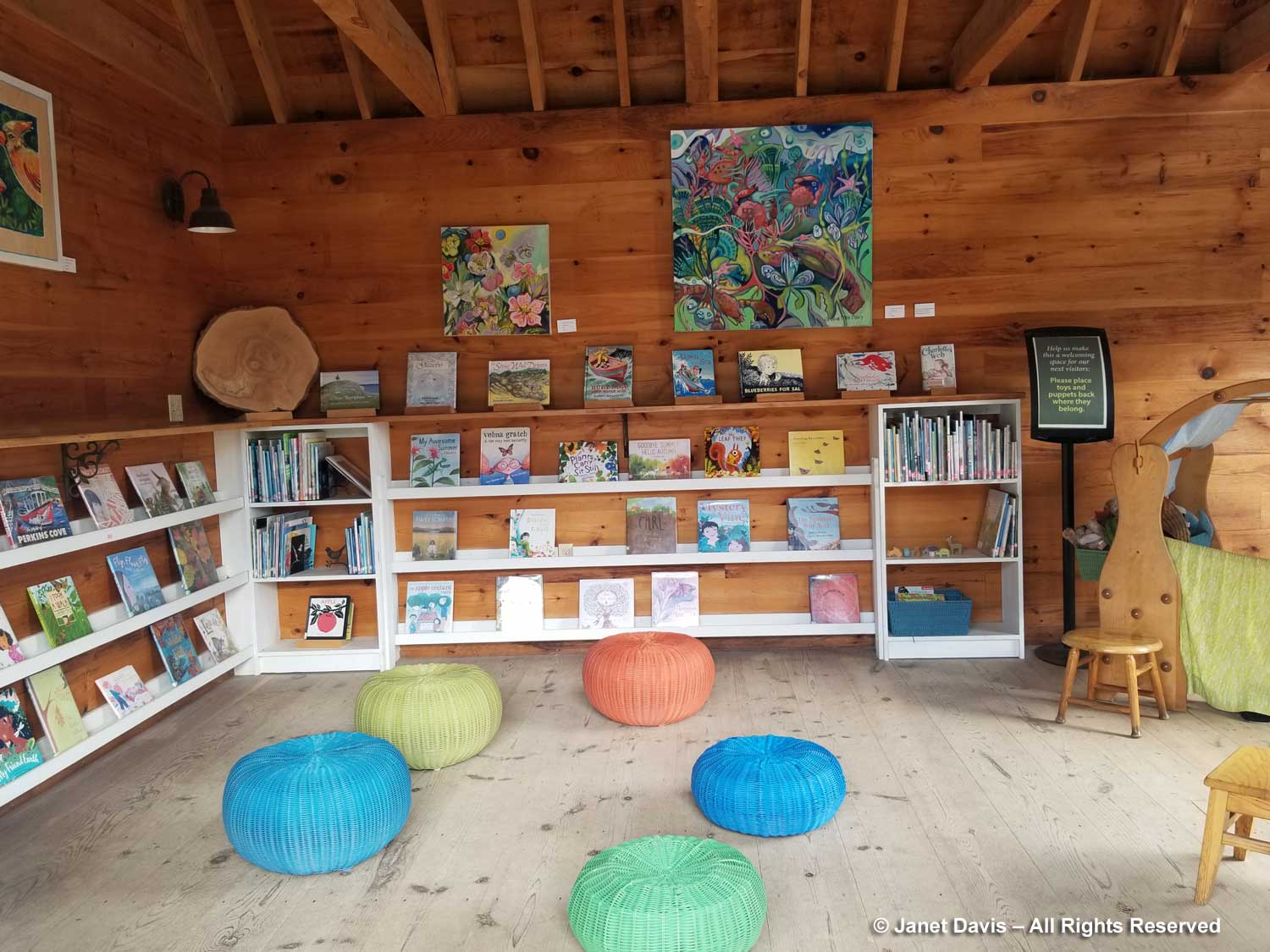
As I headed out towards the exit, a young visitor was engaged in a fun activity at the Boat Pond.
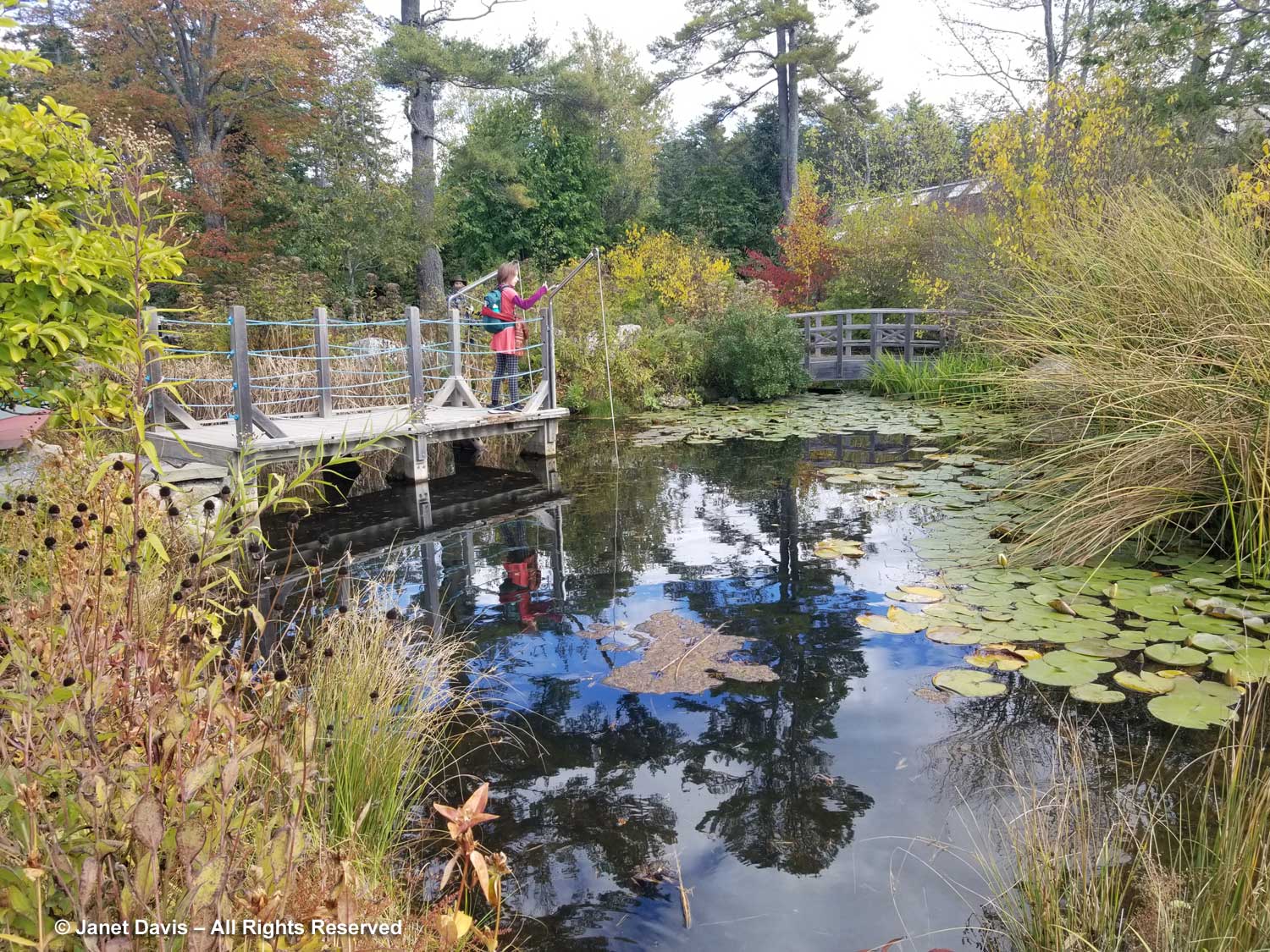
I’ve seen and photographed many children’s gardens, including New York Botanical Garden, the Huntington Garden in Pasadena and Denver Botanic Gardens (also a Herb Schaal design), among others, and this one was the best and most creative by far. It was a fitting way to end our visit to the Coastal Maine Botanical Gardens.

